NORTH SAILS BLOG
All
Events
Guides
News
People
Podcast
Sustainability
Tech & Innovation
Travel & Adventure
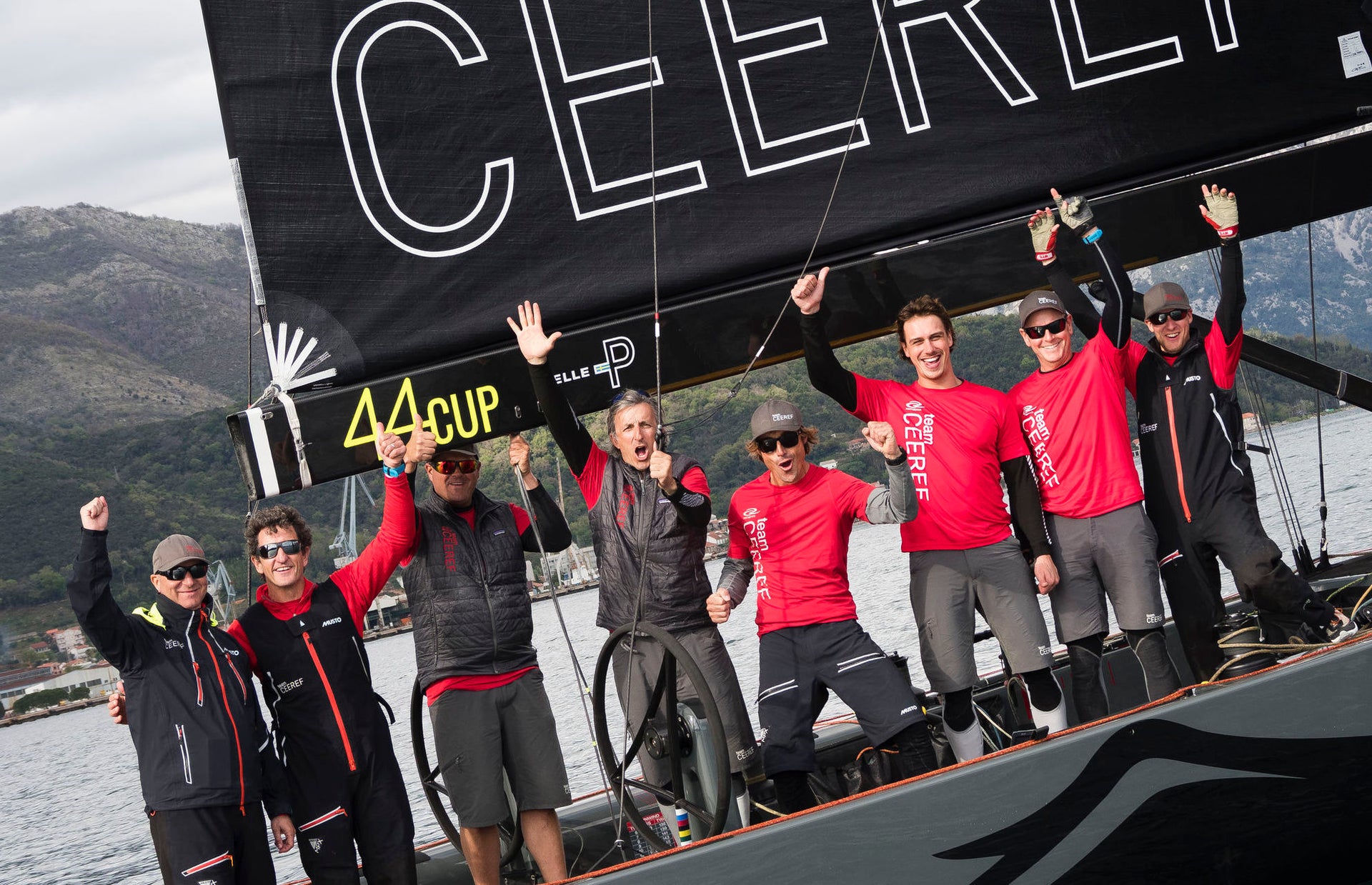
#NSVICTORYLIST: CEEREF IS RC44 SERIES CHAMPION
#NSVICTORYLIST: CEEREF IS RC44 SERIES CHAMPION
Igor Lah’s Team Seals The Deal In The 2019 Series Finale
📸 Martinez Studio | RC44 Class
Slovenian Igor Lah has claimed the 2019 season title, and all in the final moments of the RC44 Cup. Going into the last race, the points were tight, and the final race would produce just one overall season winner. The first day of racing was canceled due to weather, so with only a three-day event to make it happen, it was all or nothing. Acknowledging that their season did not go as well as they had hoped, they were hoping to at least have a solid race finish in the last event of the series. “Our goal was to come to Palma and win,” said their tactician. “If you don’t sail well, it is easy to be in the back- which we know!”
Ceeref had their work cut out for them, going into the final event from far behind after a rough season of bad luck. In the last race, the Bay of Palma delivered a strong breeze, and Ceeref was ready to give it their all, coming off the line at the pin-end and crossing the fleet on port. They worked course left, rounding the windward mark in third just behind clients on Bronenosec and Charisma, the 2018 Season champs. Coming into the bottom of the course, Ceeref took their chances, splitting sides with leaders and was able to catch the first shift that kept them in the lead to the top of the course. Great speed and boat handling launched them ahead of Charisma, who was nipping at their heels in second place, to snag the bullet. Taking chances is what earned them the upper-hand on the tiebreaker, to take first overall in the RC44 Cup Palma and first overall for the season with 11 points after one discard.
📸 Martinez Studio | RC44 Class
The RC44 season consisted of five events; Porto Montenegro, Adris, the Worlds in Marstrand, Cascais, and Palma. Ceeref started out strong, winning event one in Porto Montenegro with a seven-point lead. However, the event in Adris, the Worlds, and Cascais, they suffered from bad luck, which didn’t give them much of a chance to pull through and end their season on a bright note. Perseverance and smart sailing kept them in touch with the fleet, not to mention scoring four bullets in Palma gave them enough to squeak ahead with 27 points total to win it all.
To win the overall trophy in one of sailing’s most competitive ‘big boat’ one-design classes is quite the accomplishment. For Igor’s Ceeref to win it again, their first time being in 2016, then again in 2017, now in 2019, was a great feeling.
“I was sure that it would be impossible,” said Igor, who only found out when the boat hit the dock that the team had pulled it off. This was a great way to end the event, and the 2019 racing season.
“Going into the last race, we knew it was mathematically possible, and the math was on our side today!” said Igor. “We needed this.”
Ceeref is built for pure speed and powered by North Sails 3Di RAW 880. For more information on North 3Di, contact your local sail expert today.
📸 Martinez Studio | RC44 Class
📸 Martinez Studio | RC44 Class
READ MORE
READ MORE
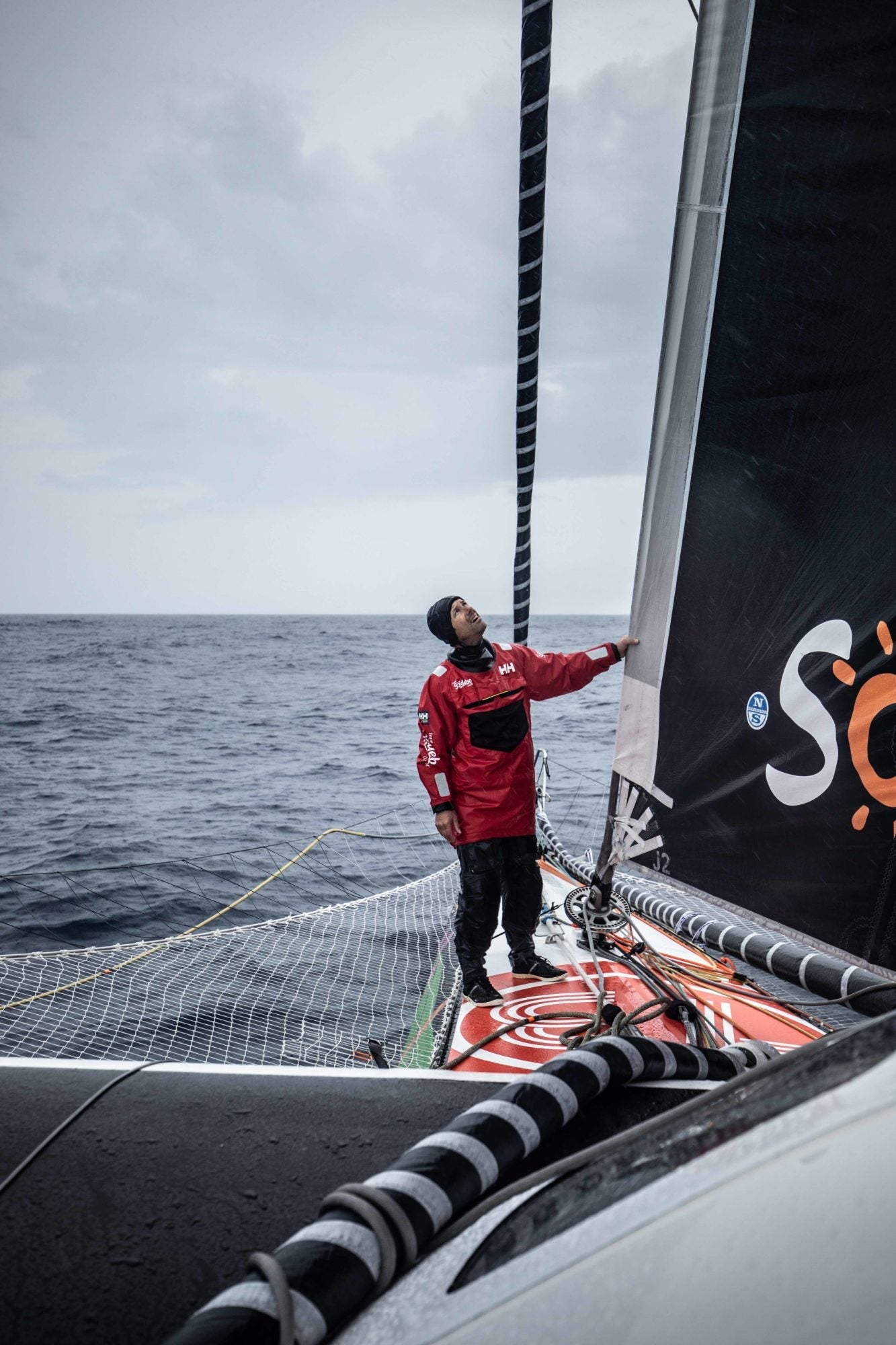
BREST ATLANTIQUES: NORTH SAILS FAVORITE PHOTOS AND VIDEO
BREST ATLANTIQUES: NORTH SAILS FAVORITE VIDEO & PHOTO PICKS
What “Great” Means In Our Offices
Four Ultims are participating in the Brest Atlantiques to test the latest generation of extreme trimarans. The race began on November 5th after a weather-induced postponement. All four of the 32m tris are using 100% North Sails, and the team also spent many R&D hours with our sail designers in France. Since its start, there have been at least a few emails circulated around the North Sails offices with links and photos as we all watch in awe. We’ve curated our favorite footage from this 14,000-mile race to share with all our readers.
Know Your Power:
Our initial reaction to these photos was “what is going on here? Are they racing? Can we show this video with hardly any sails up?” Our next move was to email our North Sails team in France, who are our in-house (and trusted) experts on the Ultims. Here is their answer:
The photos show the reality of power for the Ultims. Sailing with a main-only is fast in certain conditions, it is safer (super important on these monsters), and easier to control the power. The sail configuration is something North Sails helped model in aero and VPP and is, therefore, an integral part of the Ultim sail package and boat design.
Wait For It…
Check out this video of Macif and their North Helix sail. Keep in mind the Ultims have no runner; they rely on side rigging and mostly mainsheet tension to support the forestay. This set-up provides plenty of headsail luff tension when sailing tight angles, but can become problematic when the mainsheet is eased and the load goes down, not providing a lot of support for the headsail luff for downwind sailing. Simply explained, there is a large amount of luff sag, which gets worse when the mainsail is reefed.
The Helix sail with Load Sharing Technology provides a solution to this issue. The Helix structure supports the luff of the sail and dramatically reduces luff sag. True to its intended purpose, the structure keeps the sail forces projecting forward and harnesses the wind force to maintain stable forward propulsion.
Nothing catching your eye in the video? Hang on until after 46 seconds…
Beasts of the Ocean
Perspective is everything. It’s easy to lose that when looking at the Ultims. Notice Thomas Coville up the rig in the video, he is so small on the scale of the 32m mast. We often need to remind ourselves that these boats are being sailed with one or two people on board. With this in mind, reliability is key as any breakdown can be terminal because it is so hard to fix short-handed. Plus, the Ultims are so fast that any stop or reduced speed periods translate into hundreds of miles lost, which we have seen this past week.
While this video may look peaceful, these boats are anything but. They are like the contrast of the Albatros; super-fast, powerful and elegant when they are powered up, but equally clumsy and inefficient in lighter conditions (below TWS13). They have two distinct modes. Non-foiling, the Ultims are (relatively) slow and underpowered, yet foiling they are fast and overpowered. For that reason, the sail plan needs to cater to both with a minimal amount of sails.
READ MORE
READ MORE

#NSVICTORYLIST: TRANSAT JACQUES VABRE
#NSVICTORYLIST: TRANSAT JACQUES VABRE
Doublehanded IMOCAS Take On The Atlantic Trade Route
Originally in 1993, the TJV was a race that was solo, but since 1995 has turned into a race for double-handed duo’s who are itching to tackle the historical maritime Atlantic trade route from Le Havre, France to Cartegna, Columbia.
The Transat Jacques Vabre is a true testament to offshore sailing and perseverance, with an 4,350 mile-long race track, anything is possible, and anything can be expected. From structural breakdowns to UFO’s, and major wipeouts that can turn the boat 360 in a matter of seconds without warning, the challenges of the TJV is what keeps these doublehanded duo’s coming back for more each edition.
North clients filled eight of the top ten IMOCA overall after 4,350 miles of non-stop racing, highlighting the talent and the importance of having the best equipment for offshore sailing. After seeing our clients success in the second official offshore race for the Imoca class for both foiling and retro-fitted foiling hulls, we know that teams are ready to take on the Vendee Globe next year. North 3Di sails were put to the test again here in the 14th edition of the TJV, and shined brightly throughout the race. The race results speak for themselves, and after the Defi-Azimut, which was just the beginning, we know that our clients are up for their next offshore challenge.
As we set our sights on the Vendee Globe next year, we acknowledge the importance of client-designer relationships that help us better understand what is needed to raise the bar in performance, and we will continue to refine products for the IMOCA class to assure that clients are equipped with the best possible sail products so they can perform at the highest level.
Charlie Dalin and Yann Eliès raced Apivia to the overall win in the 14th edition. They completed the race on November 10th, in 13 days 12 hours 8 minutes after their start in La Havre. They were not in the lead at first, but made smart navigation decisions that lead them out of the Tropic Convergence Zone. 📸 MxHorlaville /disobey/Apivia
In what is now known as the closest finish in the history of the TJV, Kévin Escoffier and Nicolas Lunven snagged second place, finishing just six minutes and 18 seconds ahead of Charal. 📸 Jean-Louis Carli
For Jérémie Beyou,( winner of the TJV in 2013), and Christopher Pratt had a great comeback from sixth place, but struggled with boat speed in the latter part of the race giving them a third place finish. Not exactly what they were hoping for, but still a great accomplishment! 📸 Jean-Louis Carli
North Sails Charlie Enright, first timer to finish the TJV in the Imoca Class and French co-skipper Pascal Bidegorry took fourth overall, finishing in 14 days, 6 hours, 10 minutes, and 23 seconds.📸 Jean-Louis Carli
Thomas Ruyant and Antoine Koch on Advens for Cybersecurity, have finished fifth after 14 days, 5 hours 55 minutes and 41 seconds. 📸 Jean-Louis Carli
Clarisse Crémer and Armel le Cléac’h finished sixth after 14 days, 08 hours 46 minutes and 24 seconds. Co-skipper Clarisse Crémer is now the first woman to finish in the Imoca class. Banque Populaire is also the first Imoca to finish the race without foils. 📸 Jean-Louis Carli
Louis Burton and Davy Beaudart, on their 60ft monohull, Bureau Vallée 2, have finished eighth overall, after 14 days, 14 hours 51 minutes and 43 seconds. 📸 Jean Marie Liot
Fabrice Amédéo and Eric Péron on Newrest – Art et Fenêtres, finished tenth after 14 days, 16 hours 1 minute and 7 seconds. 📸 Jean Marie Liot
READ MORE
READ MORE
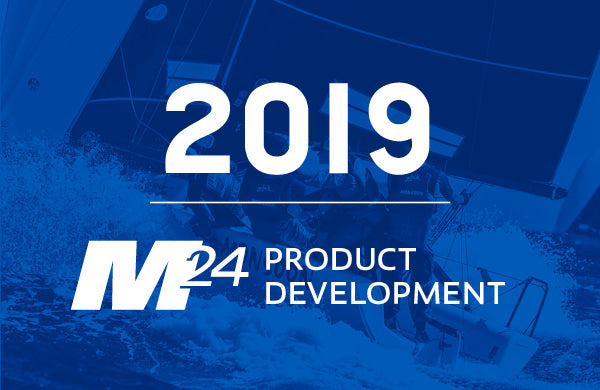
PERFECTING 3Di FOR THE MELGES 24
PERFECTING 3Di FOR THE MELGES 24
Worlds Success Built On North’s Infinite Goal To Refine Sail Design
The popular and competitive Melges 24 Class recently completed their World Championships in Sardinia. North Sails clients were proud to have an unrivaled marketshare and see strong results in the regatta, with eight teams in the top ten, and 21 teams in the top 30, all racing with North inventories.
As the world leader in One Design sailmaking, North Sails recently introduced a latest generation M-2 mainsail and J-3 jib. Monsoon, who finished second at the World Championships, used the latest generation M-2 and the J-3. The World Championships illustrated once again that North Sails never stop refining sails and perfecting designs to deliver faster and user-friendly products for One Design racers around the world.
Giulio Desiderato, One Design Manager with North Sails Italy “The Melges 24 World Championships was a great event with some really competitive sailing. We were excited to see three boats fighting all the way until the last race to claim the title. Monsoon and Bombarda, who took second and third respectively, are two owner-driver teams racing with North Sails who pushed Maidollis, helmed by a professional sailor, right up to the end of the regatta in a tight battle. This illustrates not only that our sails are fast, but as importantly that they are user-friendly. That is our commitment to One Design classes across the board – we are always looking to push boundaries, improve the sailing experience for our clients, and power them to better results.”
“This illustrates not only that our sails are fast, but as importantly that they are user-friendly. That is our commitment to One Design classes across the board – we are always looking to push boundaries, improve the sailing experience for our clients, and power them to better results.”
The design for the new generation of M-2 and J-3 sails focused primarily on improved load distribution to deliver enhanced durability and performance. The small layout changes and refinements also ensured a lighter feel and handling experience. The designers also sought cosmetic changes, resulting in a beautiful smooth black sail with less visible wrinkling. The new sails, composed of blended aramid, Dyneema and polyester materials, is testament to the North Sails commitment to One Design classes to deliver continuous improvement and a better product. The design team continues to turn their attention to other popular classes such as the Melges 20 to implement similar developments.
Andrea Pozzi, skipper of Bombarda, who secured his best results at the recent World Championships with a podium finish, sees the sails as a critical part of the boat’s preparation and performance “I think that the present and the future is with 3Di technology. We realized this when we tried the full set of 3Di sails in Miami during the Bacardi Cup. I really like the approach that North Sails took to develop the M-2 Mainsail and J-3 jib; I think that the key to success and the reason why so many teams choose North Sails for their campaign is that they are continuously working to improve the sails by listening to the feedback from the sailors directly from the regattas. The new generation of sails that we had onboard for the World Championships were for sure the best we used throughout the whole season; they are fast and all purpose.”
The owner and skipper of Monsoon Bruce Ayres, who has been racing with North Sails for close to 18 years, added, “In the hotel business where I work, if a contractor isn’t supplying you with the best product or service you get a new contractor. It’s the same with sailmakers; and simply put, North Sails have been the best. I have been very fortunate to get not only the best products from North Sails but also a first class customer service if we ever have any little issues or changes. North continues to deliver a product that uses the latest technology and designs. They have the professionals there to back it up, especially the likes of Vince Brun, Harry Melges and John Bowden. On the water, I always try to have the best equipment. Whether it’s rigging or boat, North Sails always delivers for me. ”
📸 Zerogradinord
READ MORE
READ MORE
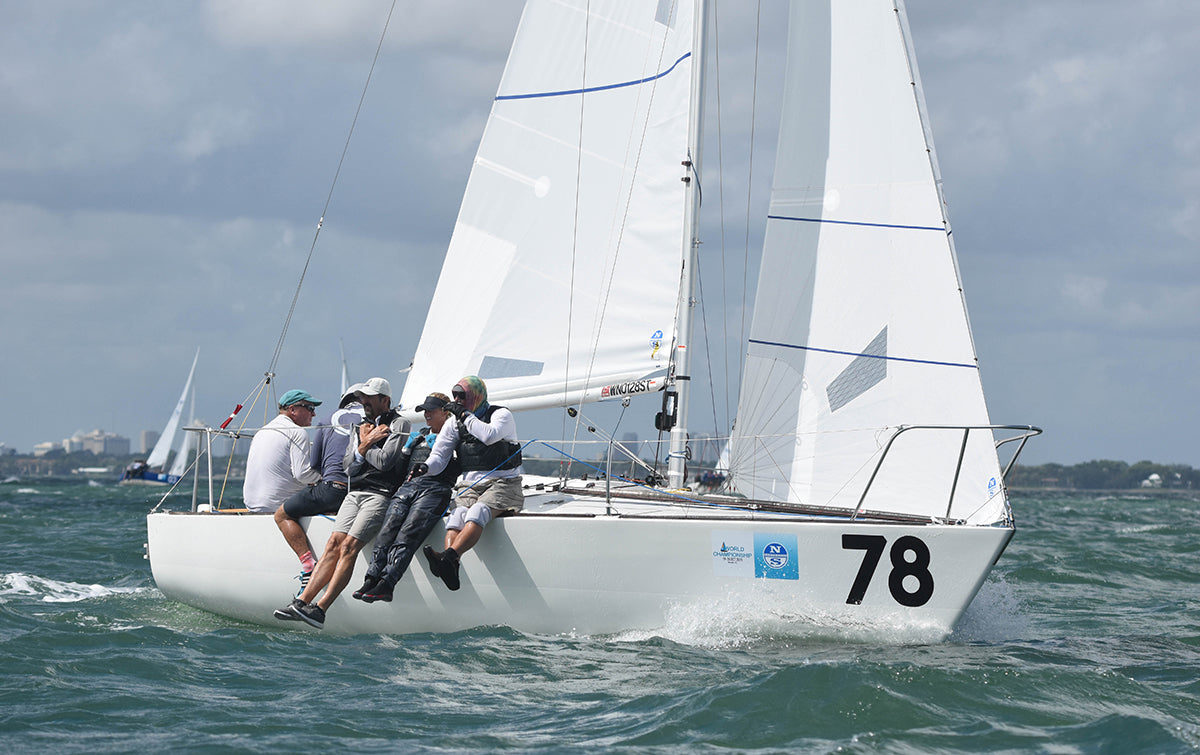
WINNER’S DEBRIEF: KEITH WHITTEMORE
WINNER’S DEBRIEF: KEITH WHITTEMORE
Skipper Interview With North Expert Mike Ingham
📸 Chris Howell
North Sails Expert Mike Ingham spoke with the 2019 J/24 World Champion skipper about what it took to win. Team Furio had an impressive win at the J/24 Worlds. The class is going strong, and with 79 boats from 20 countries, they averaged 5.5 points!
I trained with Keith’s team leading up to the Worlds, and we were both pretty quick, so a few days after his win I called to ask him how they posted such a consistently impressive scoreline over conditions that ranged from go-below light air to sailing with the small jib. He called out three key factors: team (the right balance of skill and attitude); preparation (a well prepared boat, and a solid training plan); and speed (he is a fanatic about sails, rig tune, and trim).
Winning Team
Keith spoke highly of his team’s skills and attitude, beginning with tactician Brian Thomas. “Brian and I have been sailing together for 40 years. We get along great, and I totally trust him.” Trimmer Willem van Waay is a newer addition to the team, and Keith says he brought some big regatta winning experience and a great attitude. Shelby Milne is on mast. “She has been with the team for two years and is great at her job, reliable, hardworking, and a ton of fun.” Mark Rodgers mans the bow; “He is damn fun to be with, 100% reliable up there, and salt of the earth.”
Winning Speed
Here’s what Team Furio used for sails:
Fat Head Main
SD/TH Genoa (San Diego)
Super Rocket Blade + Jib
FR-2 Spinnaker
Keith has high confidence in the consistency of materials and workmanship of his North sails. “Perfect out of the bag—every time.” Curious why he chose the San Diego genoa instead of the Newport model (DX-7TT), I asked him for his thoughts. He feels there is no speed difference between the two genoas and advises picking one and getting to know it well; “don’t switch between the two.” One of the models has won every single Worlds since 2013 when the designs were refined, so his advice seems sound.
Genoa Details
While training with Keith, we spent a lot of time looking at the genoa. As the driving factor on the J/24, getting it set up and trimmed just right is huge. The San Diego Genoa is a little flatter, so you have to be spot-on powering it up. The Newport is a little fuller, so at the top end you have to focus on getting that power out and make sure not to over-trim.
Keith Whittemore and Team Furio, 2019 World Champions 📸Chris Howell
Keith offered a few additional speed tips:
New Genoa for Major Events
“Unroll a brand new genoa for the first race of the first day of racing. It’s good to break in the main, jib, spin for a day or so, but there is nothing like a nice crisp genny for race one!”
Set Up for the Lulls
“If you tune up with your rig at 24/21 and you are always off on your backstay, wishing you had a bit more power, ease off your rig. Even with a front row start, the wind goes over that picket fence of 80 boats and we start in lighter wind, always—so err on powering up.”
Live Through the Puffs
“In the bigger puffs, or if the wind increases during the race, you need to get good at depowering the boat. The idea of setting up the rig for the lulls is to excel in the lulls (big gains), But that means you have to learn to hang in there for the puffs with a soft rig. Play backstay, cunningham, boom vang, genoa halyard, and pinch as much as you can (less in waves). Last resort is to ease the genny sheet. No matter what, keep the boat mostly flat and the helm balanced.”
Jib Luff Tension
“To help make the genny work from 1 to 20 knots through flat water and waves, be super aggressive with the halyard and jib cunningham. If it is light, sail with scallops between the hanks. But if you make the halyard too loose, the scallops bunch in the middle -that is not good. As the wind increases, the halyard gets tighter and tighter and eventually at the top end it is stretched. The halyard has to be right for the trends, then fine-tune with the jib cunningham.”
Jib Leads
“In flat water, we set the leads to touch-touch“ (when over-trimmed, the genoa touches the chain plate and the spreader simultaneously). “In the chop we moved it forward a hole to round out the bottom and power it up. That may not seem like a lot, but since the lead is so close to the clew, it makes a big difference. When the waves were on the side on one tack and on the bow for the other, we would only power up on one tack.”
Team Furio have been sailing the J/24 for a long time, and they plan to keep it up. They have a 25-boat local fleet in Seattle, and they’ve made friends all over the world. “That is something really special about the class,” Keith points out. “There’s a sense of community and friendship. Of course we want to do well, but really we do this because we sail with people we like to spend time with.”
Congratulations Team Furio!
For more info about the J/24, visit the class page.
Mike Ingham, 4th place at the 2019 J/24 Worlds. 📸Chris Howell
READ MORE
READ MORE
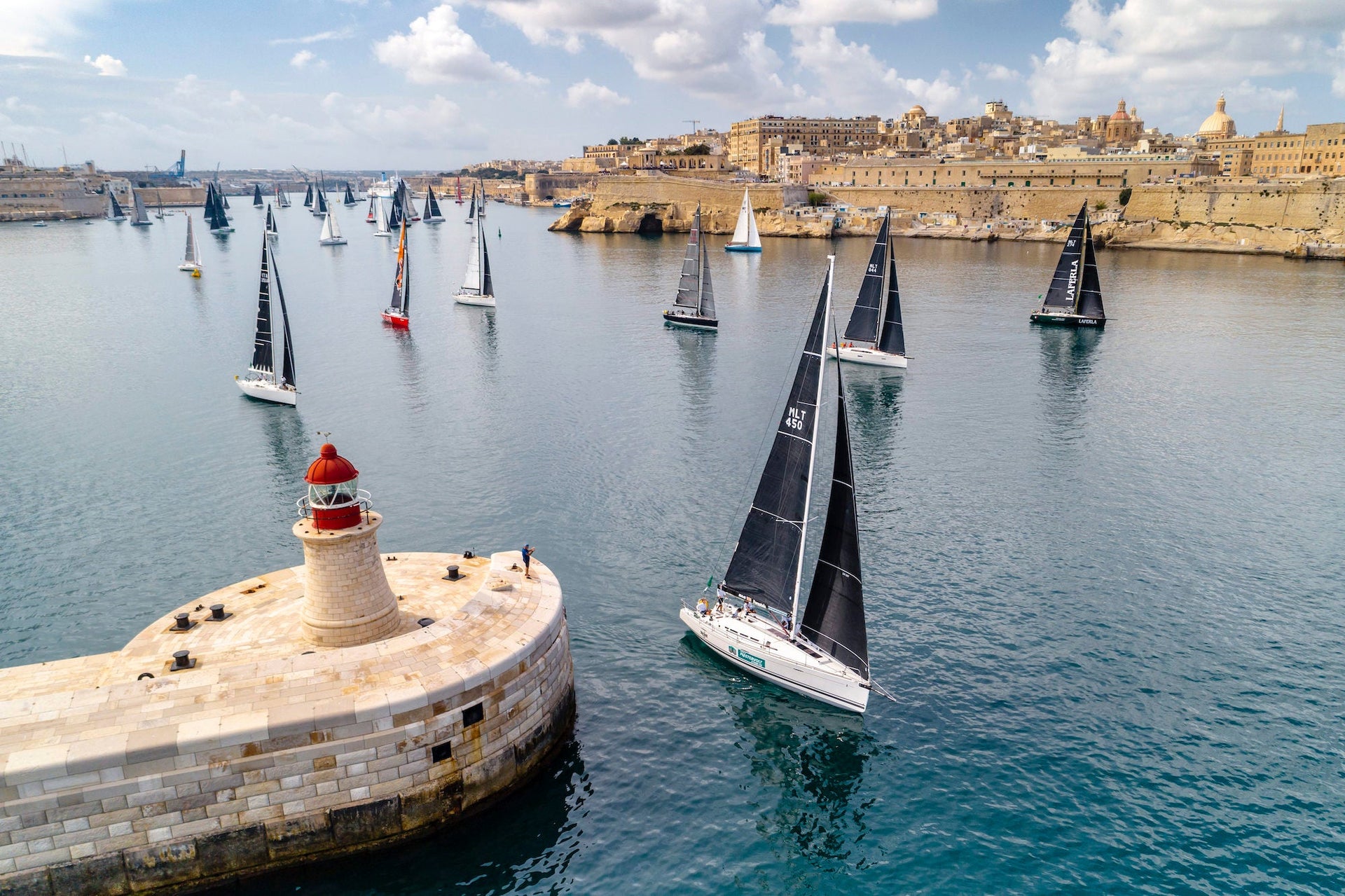
#NSVICTORYLIST: MIDDLE SEA RACE
Overall race winner Elusive 2 leads the fleet out of the harbor. 📸 Kurt Arrigo / Rolex
The annual Middle Sea Race starts and ends in Malta, and this year 23 nations were represented by 113 yachts. North clients took home first place trophies in nine classes and swept the podium in two (IRC Class 2 and ORC Overall). Perhaps most impressive was George David and the team on Rambler, the first monohull to cross the finish line, taking just 2 days 19 hours and 43 minutes to sail 606 nautical miles. It was the fifth time they’ve received line honours for this race.
On Thursday October 24th, just five days after the race start, the Beneteau First 45 Elusive 2 representing Royal Malta Yacht Club was announced as the overall winner. Siblings Maya, Aaron, and Christoph Podesta have been part of this race since it began in 1968, when their father Arthur and six crew won the inaugural event. In the 51-year history of Middle Sea Race, a Maltese yacht has won overall eight times, and Arthur Podesta was onboard for three of those wins. It’s great to see our client not only win their division, but win overall—while continuing the legacy of their father. “2019 is for Elusive and Arthur ,” said RMYC Commodore Godwin Zammit at the awards ceremony, calling the 40th edition a success for all involved.
Elusive 2, Overall winners of the 40th edition. 📸 Kurt Arrigo / ROLEX
Skipper Chris Podesta was elated about the family victory on a boat that has been part of the clan for ten years. Modifications have focused on improving offshore racing capabilities and minimizing light air weaknesses, and new 3Di North sails definitely helped. “Over the past four years we have put a lot of energy into developing and optimizing the boat and sails,” Chris explains. “Our North sails are key to our performance. We have felt strong improvements with our downwind sails and also feel our J4 (2018) and J3 (2019) give the boat a powerful forward drive. We wanted to be so well prepared for this year’s race that we also built both a new trysail and a windseeker!”
2019 marks the eighteenth year Chris Podesta has sailed the RMSR, and he says the downwind start this year was not favorable for Elusive 2. “We had to work very hard to keep up with the lighter boats. Our goal was to hold onto the pack until Fabignana, northwest of Sicily. This took a serious amount of concentration and hard work from the crew.”
The first night was the hardest part of the race—and the most important, because “that’s when you need to be going fast so you can extend. The fickle breeze made it hard for us. Getting past Etna and through Messina was also difficult, because any type of tactical error can cost many miles.”
📸 Rolex Middle Sea Race 2019
The tides and localized winds in Messina are always exciting, he continues. “Sicily is highly influential on the breeze, making local knowledge an asset. Having two active volcanoes as marks of your course is also a special sight. The RMSR is far from straightforward–and possibly a tactical nightmare!”
Once they rounded the islands of Levanzo and Favignana at the western end of Sicily, the breeze began to build into the high teens– and then into the mid 20s, mostly on the nose. “Apart from being tough with very uncomfortable seas, this breeze suited us well,” Christoph says. “The race is a 4-5 day sprint and you’ve got to give your everything until the finish.”
The Podesta family loves the challenge of such a unique course, Christoph adds. “October can be dicey in terms of weather here in the Med, so you know it will be a variety of conditions, and it will be extreme.”
Winning overall was fantastic, Chris admits, but for this family team the results have never been their primary motivation. “For me the most special part is enjoying time with my family and the crew, who are all great friends. Thank you to my crew, and all involved.” His brother Aaron helped helm the boat. Sister Maya was the team strategist, and her boyfriend David Anastasi assisted with navigation. Cousin Ben Pace did mast, Gareth Grech was in the pit, Tom Zammit Tabona and Andrea Crocela trimmed, Adrian Stone was on the bow, and Magnus Everskog helped forward of the mast.
“After our father passed away in 2015,” says Chris, “there was no question we’d keep doing this. We love it and want to keep our family tradition alive. We used to think it was all about the race, but we know now that it was our father’s purpose to bring our family together to share experiences and great adventures.”
“This race will continue to be a special experience for our family,” adds Maya. “Since 1968 there has been a Podesta on the starting line of the Middle Sea Race, and we intend to keep it that way!” She also agrees that their father’s spirit was onboard with them once again. “What we’ve done this year– it’s all thanks to him.”
READ MORE
READ MORE
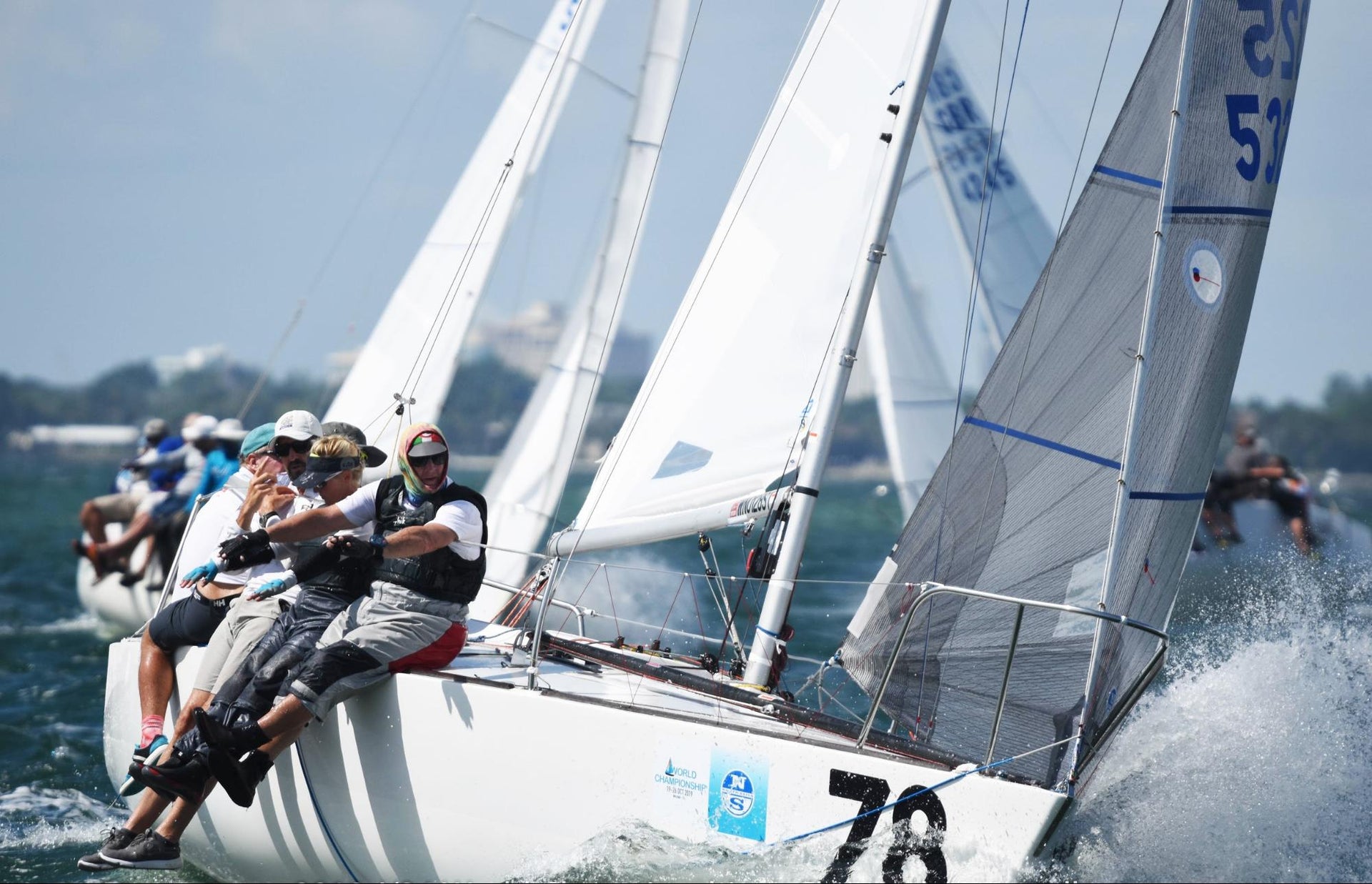
J/24 WORLDS: EXPERTS TAKEAWAYS
J/24 WORLDS: EXPERTS TAKEAWAYS
North Sails Experts Share Key Tips
Keith Whittemore and Team Furio, 2019 World Champions 📸Chris Howell
An incredible and talented fleet of 79 teams competed in the 2019 J/24 World Championship held in Miami, Florida for the first time ever. Such a bucket list venue attracted teams from nineteen different countries, and Miami delivered a variety of conditions. After the windy days, the sail care team from North Sails Fort Lauderdale jumped right on repairs to make sure no team was held back.
North Sails clients swept the podium, and eight out of the top ten boats used full North inventories. Congratulations to 2019 World champions Keith Whittemore, Shelby Milne, Willem Van Waay, Mark Rodgers and Brian Thomas on Team Furio, powered by the North Fat Head mainsail, SD-TH genoa, SRB jib and the FR-2 spinnaker.
North Sails experts raced on several boats. Here are some of their takeaways.
Find the Favored End and Start There
Sailing in a large fleet, the starting line is much longer than it would be with a typical 20-40 boat fleet. That means starting at the favored end gives you a big head start against boats that start at the non-favored end. In a smaller fleet there’s less leverage on the starting line, so giving up the favored end in exchange for low density can be a smart play. But Miami featured two distinct starting lines connected by a mid-line boat, and it was imperative to know which end of the line was favored and then try to start near it.
There are several ways to check which end of the line is favored, but the simplest is to use your compass. North expert Zeke Horowitz walks us through his approach:
Compare the wind direction the RC has posted to your own head-to-wind shots and make sure they are similar.
Start at one end of the line with your boat right on the line, and sail straight at the other end of the line.
Triple check to make sure you are perfectly parallel with the line, then note your compass heading. On starboard, your compass heading should be 90 degrees less than the course axis. (On port, this heading should be 90 degrees more than the course axis.) On starboard tack, if your line heading is only 80 degrees less than the course axis, the pin end is 10 degrees favored. That might not sound like much, but when the starting line is almost a quarter of a mile long, that head start is often insurmountable.
80-boat starting line at the 2019 J/24 Worlds in Miami. 📸Chris Howell
Work to a Side
In an 80-boat fleet, it is next to impossible to get clear air if you have a bad start or end up on the wrong side of the course. So when that happens, how do you get clear as fast as possible? Mike Marshall, who helped Velocidad finish 3rd overall, advises staying out of the middle and letting your boat speed work for you. “With such a huge fleet of boats there is little to no wind in the middle of the course, so you have to get yourself out to a side (without ending up in the corner). If you are in the top group on your side, chances are you will be in the top 20 at the first mark. From there, you can pass boats on the next four legs.”
Too Much Backstay
The J/24 likes a very tightly sheeted main to balance the lee helm from the genoa. If you use too much backstay in big breeze, you can’t get the leech of the main tight enough because the main is too flat. The boat goes faster forward, but loses height in the process. Unfortunately, once up to speed, the J24 doesn’t gain by going faster—all the gains are with height.
“We paid particular attention to backstay tension and how flat it was making the main,” Mike explains. “We were aiming to have just the start of overbend wrinkles coming off the mast, going back to the clew. By doing this, we were able to hold our lane while maintaining speed. We found that easing or trimming the backstay just an inch made a huge difference in the mode that the boat was in.”
2nd place Rossi Milev and Team Clean Air 📸Chris Howell
Push the Tiller
Bonus tip from Mike: “I can’t say this one enough—the J/24 genoa wants to pull the bow down all the time, especially when the main is eased in a puff. That means the driver must push the bow up with the tiller. Bow-down mode isn’t any faster, it’s just a loss in height. Push the boat upwind, all the time.”
For lots more expert tips, visit the J/24 Class page.
Tight competition, race day 5. 📸Chris Howell
Congratulations World Champs 📸Chris Howell
READ MORE
READ MORE
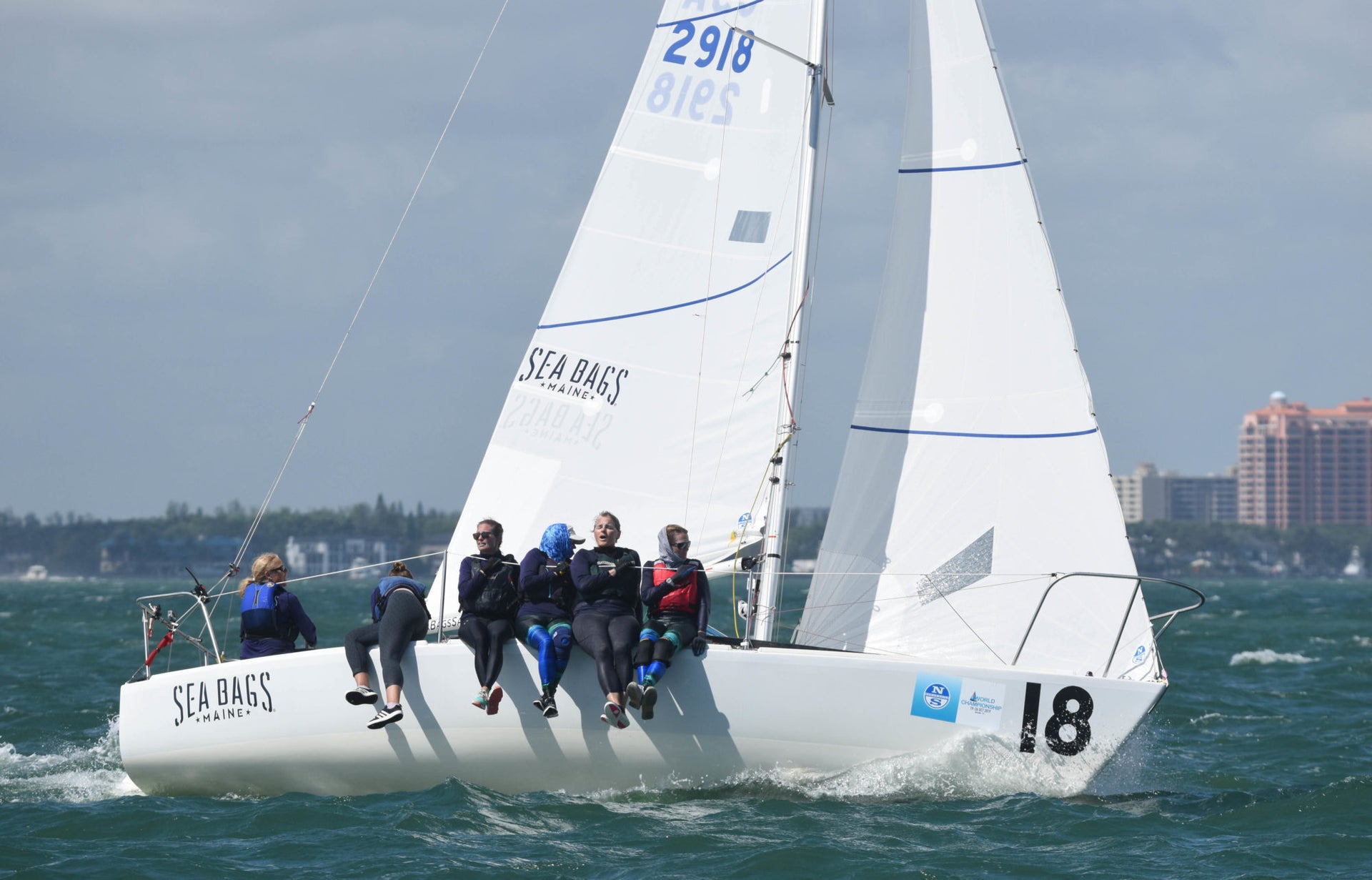
J/24 WORLDS: SEABAGS WOMEN'S SAILING TEAM REPORT
J/24 WORLDS: SEABAGS WOMEN’S SAILING TEAM REPORT
Making Each Experience Count
📸 Chris Howell
The J/24 Worlds was the ultimate test for our team, an all-women’s group of six led by Erica Spencer and sponsored by Sea Bags Maine. We worked hard all season long to prepare for this week long adventure, knowing it would be harder than any other regatta we’ve been to, but also knowing that we’d gain invaluable experience and become better sailors- regardless of the outcome.
Meet the team
The majority of the team is based in Maine, while the rest of us reside in Rhode Island and New York. I’ve been sailing with this team for four years, and I am so proud of all the amazing things we’ve been able to do together.
On the helm is Erica Beck Spencer, who is an educator and also has two amazing kids. Upwind trimmer Katie Drake is a finance professional in her regular life, and enjoys cruising her J/24 on the coast of Maine. Emily Carville, marketing guru for LLBean, is our trimmer/mast and sails with her husband and kids when she’s not racing with us. Joy Martin is a retired teacher and devoted Thistle sailor, and our downwind trimmer. Karen Renzulli Fallon, therapist, super-mom, and talented match racer, commands the bow. Jessica Harris, co-captain, who didn’t race this event, but was with us in sprit. Jess has made our team possible. We wouldn’t be here today if it weren’t for her.
: Hillary Noble, Katie Drake, Emily Carville, Karen Fallon, Erica Spencer, and Joy Martin. Thanks to #Waterlust for creating a product we wanted to test out, leggings made from recycled plastic water bottles to support our commitment to the environment. FYI they are also SPF 50!
Key takeaways from our experience:
Starting at the end of the line with lower density doesn’t always work. There may be less traffic, but starting farther from the favored end will make it hard to catch a break or get to the favored side of the course. Sometimes having a good start and not being able to tack is almost worse than having a 2nd or 3rd row start and being able to tack and duck immediately.
Boat speed upwind has to be good. J/24s all go the same speed, and when everyone is sailing fast, you have to match that or you get left in the dust. Constant communication with the trimmer and skipper is key to making sure each puff is accounted for.
Should we duck or tack? If you duck, you’ve just let a boat get by. If you tack and lead them back, you might catch them on the next shift. Each crossing situation meant a big decision had to be made, and it all came down to thinking ahead to the next move.
Sometimes the ‘wrong’ gate was the best choice. Less boats to deal with in the rounding, and once you round you will be on the lifted tack and able to get out of there quick.
Cross when you can. In shifty conditions, its important to get ahead of any boats each opportunity.
The edges paid off big- but ideally you were on the correct side! By working one side and staying in phase, you’d probably end up OK at the top mark. The middle was full of bad air and chop that killed your boat speed. Hopefully you’d end up on the favored side though because an 80-boat fleet is unforgiving.
Clear lanes are limited. Don’t pass up any clear lanes, especially one that will take you where you want to go!
Getting to the line too early was costly. A few times, we had to stop inside 30 seconds to avoid being over early. That’s when we needed to be building speed!
One out of two team goals, met.
We were the top finishing all-women’s team, the second time we were crowned as women’s world champions. But because we did not accomplish our other goal of finishing in the top 30 it’s a bittersweet victory that makes us even hungrier to keep improving. Despite our overall result, the positive energy that radiated from each of my teammates was something I’ll never forget. Although during our worst finishes we were all glad when those races were over, right now I am missing last week and this team, and so excited to sail with them again.
Sea Bags Maine has been incredibly supportive and we look forward to working with them next year. I also want to give a big thanks to North Sails, not only for engineering the best sails for the J/24, but also for their support and expertise both on and off the water. See you in 2020!
📸 Chris Howell
https://www.northsails.com/sailing/wp-content/uploads/2019/10/seabags_WEB.mp4
READ MORE
READ MORE
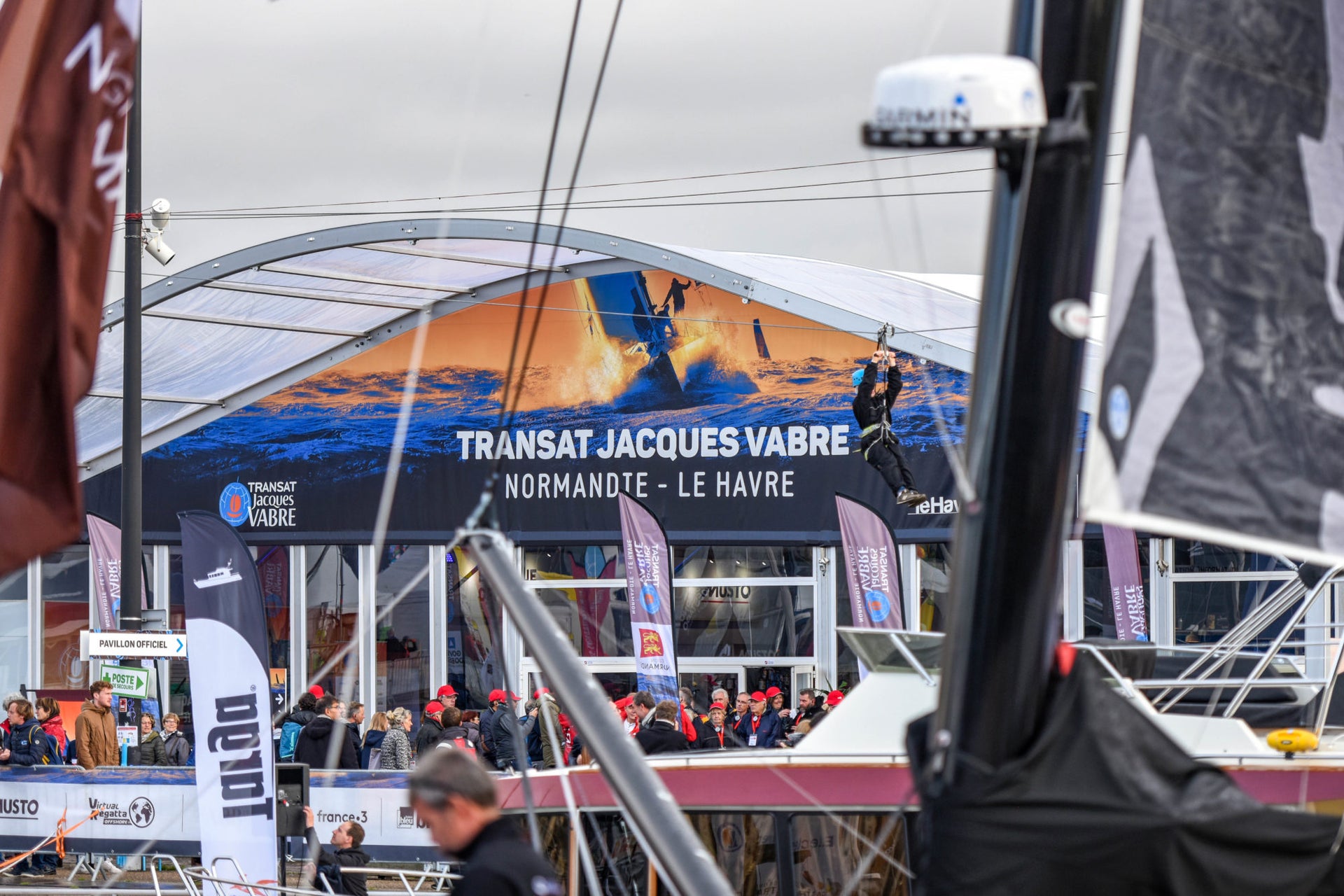
HOW TO FOLLOW THE TJV
TRANSAT JACQUES VABRE: HOW TO WATCH
Tune In With North Sails Sunday October 27th
📸 James Tomlinson
Tomorrow, Sunday October 27th, 27 Class40s, three Multi50s and 30 IMOCAs will set off on a 4,350-mile ride from Le Havre, France across the Atlantic to Salvador de Bahia in Brazil. Initiated in 1993, the Transat Jacques Vabre is held every two years and has become a major landmark event for double-handed sailors. This regatta has finished in a variety of destinations since its initiation, which includes Salvador de Bahia, Brazil, Puerto Limon, Costa Rica, and Itajai, Brazil. The 2019 edition has returned to Salvador and in just one day clients will set off from La Havre to battle for a new race record and first place trophy.
Le Havre is located on the Atlantic ocean and is the largest town in Normandy. It has a deep-water marina that can be accessed 24-hours a day, no matter the tide, and the sailing area itself serves up excellent conditions with thermals that can challenge sailors to the best of their abilities.
Teams are patiently waiting dockside, and are chomping at the bit to get on the water for the ultimate battle of the fall season. Follow us on Facebook for front row seats to all the action. All of us at North Sails are looking forward to seeing this race unfold over the next two weeks.
Get your front row tickets with us this Sunday, as North Sails has teamed up with sailing photographer James Tomlinson to give you a unique point of view on the ground in Le Havre. Watch our Instagram Stories @north_sails for the start of this much-anticipated Atlantic double-handed race. See you there!
Want to know more about the race?
Other ways to catch the action on official race channels:
facebook.com/TransatJacquesVabre
@transatjacquesvabre on Instagram
@north_sails on Instagram
@NorthSailsWorldwide on Facebook
Live Race Tracking
Full Race Schedule
Race Photos
Skippers
📸 Jean-Marie Liot/Alea
READ MORE
READ MORE
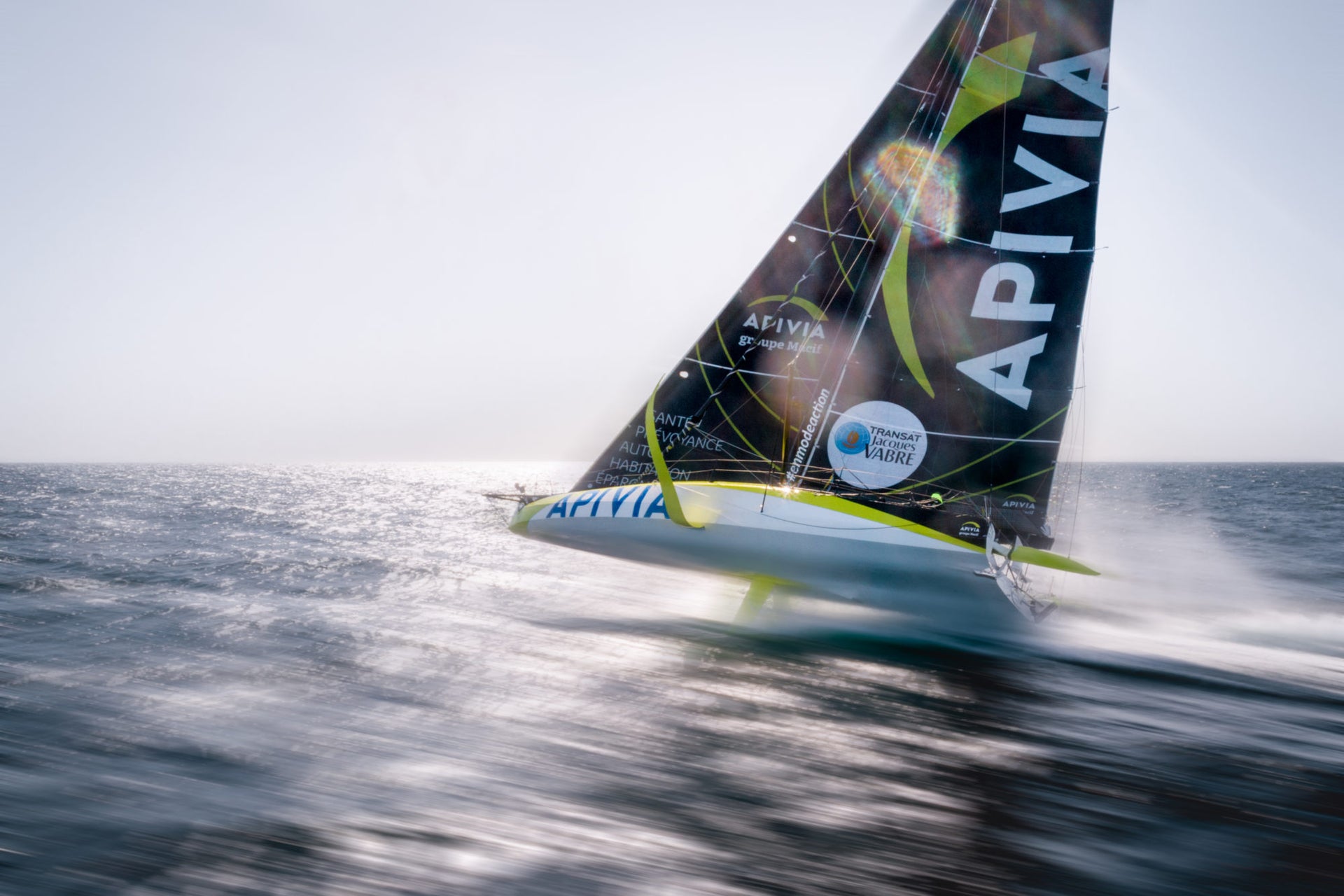
CUTTING EDGE DESIGN FOR THE IMOCA CLASS
THE TRANSAT JACQUES VABRE: A CRITICAL MILESTONE IN THE VENDEE GLOBE CYCLE
North Sails Continues to Offer Personalized Cutting-Edge Design Service in the Rapidly Evolving IMOCA Class
📸 MxHorlaville /disobey /Apivia
The newest generation of foiling IMOCAs are heading for the start line of the Transat Jacques Vabre – a crucial part of the four year Vendée Globe cycle. The 4,350 mile two-handed race from France to Brazil is the first opportunity for everyone to get a clear look at how both boats and skippers are progressing, one year before the start of the non-stop round the world race that is considered the pinnacle of solo offshore racing.
Vendée Globe Dreams: Four Years in the Making
North Sails has been deeply involved in helping six new IMOCAs, as well as a number of older boats, prepare for both the 2020 Vendée Globe and the TJV. There is no doubt the awe-inspiring foilers will wow sailing fans, but how will they perform when racing under pressure day after day? There is so much at stake and all to play for…
Design First: Unique Tools and Expertise
Head of North Sails France and 3Di expert Gautier Sergent leads the team that has been working closely with so many IMOCA skippers. “This has been a very exciting time in the IMOCA class. We have recently seen the launch of several brand new boats for the Vendée Globe, and the TJV is going to be a rigorous testing ground for 2020.”
North Sails is unique because sailors consult with the company very early on in their design process, Gautier explains. “After the last Vendée Globe in 2016, we had a full debrief on what we had seen, learnt, and where things were heading: where was the innovation going to be coming from, and what was driving it? It’s important after a big race like that to look at what happens at the end, and the decisions that were made. That put us in a really strong position for this next edition of the race, and to be a trusted partner as foiling takes center stage.”
The IMOCA class is constantly striving to push boundaries, and thanks to the elite team at North Design Services and the ever-evolving North Design Suite (NDS), North Sails is able to provide critical input to the continuous loop of information between designers, structural engineers, and skippers. NDS makes it possible to virtually test and optimize any part of a sailboat in any sailing environment, even before the boat is built, allowing skippers to find the very best solutions for their new boat.
”No one else has their own tools like we do,” says Gautier. “NDS allows us not only to do all the simulation in-house, but we are also continuing to develop our tools so we can be really responsive and reactive to needs and changing trends. We make sure we can provide useful data to the experts in other fields, such as hydro, structure, ergonomics, etc.”
In such a fast-moving environment, old methods of on-the-water experimental learning no longer keep up. “That is why our Design Services offering has been such a game changer for finding what works for any given team,” Gautier says. “The VPP has been really useful in understanding the whole boat; not just the sail, but how is the sail affecting the full design, and vice versa?”
But tools are not reality, he adds. “So you also need designers with enough expertise to interpret the results, integrate sailors’ feedback, and suggest directions to investigate. It’s the only way to keep up with the pace and work out a sail package that reflects the input from everyone. Objective information is what we are after, because pre-conceived ideas will hold you back. It is a brave new world.”
Personal Service: Tailored Solutions for Skippers
Each skipper brings a different level of experience to the campaign, so each boat requires a customized sail package. Gautier says his team has enjoyed the challenge of finding the right combination for each boat and sailor. “No team has been the same, and as a result no solution has been the same either. For each brand new boat, we have an almost dedicated North Sails expert. All have different ways to go about solving an issue, so it has really enabled us to broaden our thinking. We work really hard to find that sweet spot.”
Time to Race: Vendée Globe Countdown
As the clock ticks down to the start, Gautier is eager to see all this hard work line up on the race track. “I can’t wait to see the results of the work the team put into these boats, and how decisions play out in real terms. I am confident that we have given our skippers the best opportunity to achieve their potential. It has been a privilege, and we have all greatly enjoyed the process.” Looking ahead, he adds, “We have already set a plan of action to use the feedback from the TJV to keep moving forward from here. Much more to come before the Vendee Globe!”
READ MORE
READ MORE

NEW MNR SERIES OPTIMIST BI-RADIAL MAINSAIL
NEW MNR SERIES OPTIMIST BI-RADIAL MAINSAIL
Tested and Approved
📸 Patrick Lelay
48 French Optimist sailors took to Kerguelen Beach to race and qualify for a spot at the 2020 Cap d’Agde. 13- year old Gabin Baly came out with the win overall after four races and two bullets powered by his new North Sails Optimist Bi-Radial Mainsail.
Using this new model for the first time, Gabin was pleased with the performance gain he got from using his new sail.
“Before I used the MZX4 and R2, and now I just tried the new model, the Bi-Radial for the first time for this regatta. I am very surprised about the abilities I had when it came to pointing, especially off the starting line. The new North Bi-Radial is great too downwind for speed and surfing waves.”
When it comes to what conditions it worked best? Gabin replied; “I used the same rake I had with my R2 (2,80m) for this regatta with winds ranging from 15-25 knots.”
“I am very happy with my new sail. It’s an easy decision when it comes to what I will be using for the French qualifiers, the Europeans, and the Worlds.”
North clients finished 1,2,4,9. For more information on the fastest sail designs for the Optimist, contact your local expert today.
📸Patrick Lelay
📸Patrick Lelay
📸Patrick Lelay
📸Patrick Lelay
📸Patrick Lelay
READ MORE
READ MORE
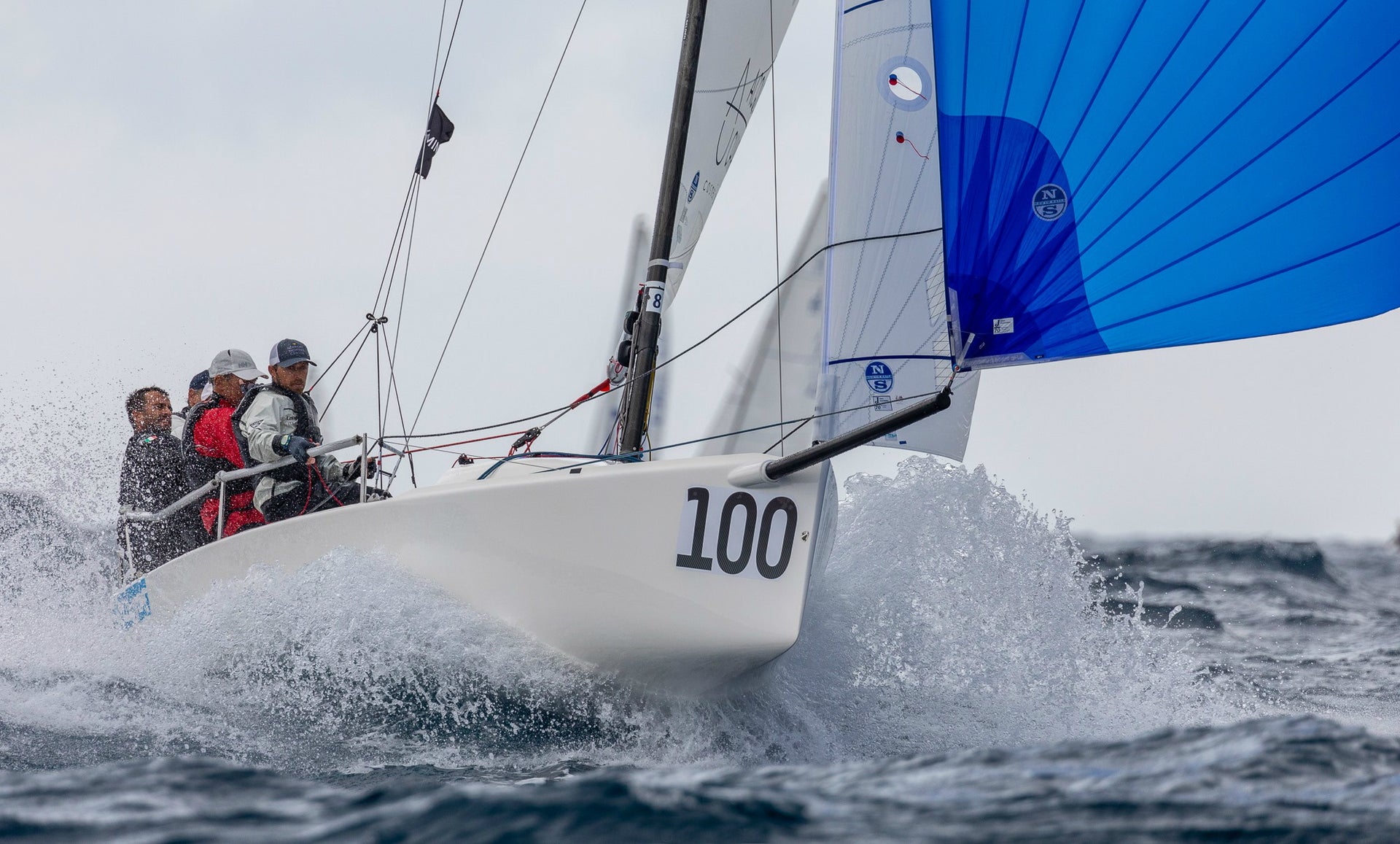
NORTH VICTORY AT THE J/70 ITALIAN CHAMPIONSHIP
NORTH VICTORY AT THE J/70 ITALIAN CHAMPIONSHIP
L’elagain Finishes The J/70 Season On A High
L’elagain (ITA 629), Italian National Champions 📸 Zerogradinord
Confirming that consistent results are the key to success, Italian team L’elagain celebrated victory at the J/70 Italian Cup after finishing with all but one result within the top 10 and the best discard in the fleet. With a competitive fleet of 52 boats from 11 countries racing at Yacht Club Sanremo, the regatta marked the end of a jam packed J/70 season. We caught up with J/70 Class Expert, Giulio Desiderato to hear how L’elagain made their victory possible.
Sailing as part of L’elagain for one day of the regatta in replacement of Daniele Cassinari who sailed the remaining days, Giulio felt honoured: “I am very proud to have replaced Daniele who I consider one of the top Italian sailors. I was a little worried because this was my first time with the team, but sailing with them was amazing with a great atmosphere onboard and together we conquered the title!’’
The regatta could not have brought more varied conditions to test the teams; the first two days were light-medium wind conditions with choppy waves whilst the third and final day presented the sailors with an epic 20-22 knots of wind from the south and big waves. Talking about the team’s boatspeed, Giulio said “We felt really fast in the water in both sets of conditions and were able to recover well from race two and three where we didn’t get a good start.’’
With North Sails teams winning an impressive eight out of a possible nine races sailed in such a mixed bag of conditions, L’elagain adapted the shape of the sail through simple mast tuning. Daniele explains: “The XCS-2 Mainsail is a very good choice for my team since we are in the heavy side as crew weight. It gives us power in light/medium conditions while we can flat it enough with strong breeze. As usual, both the J-2 HC Jib and AP-1 Spinnaker have proven to be fast in all conditions, but it will be very interesting to also test the new F-1 Mainsail and J-6 HC Jib.’’ Browse our full J/70 Shop Inventory.
“As usual, both the J-2 HC Jib and AP-1 Spinnaker have proven to be fast in all conditions, but it will be very interesting to also test the new F-1 Mainsail and J-6 HC Jib.”
Sailing with a team he normally competes against brought an unusual opportunity to see what they do differently. Giulio explains “After sailing a lot of races against them, now I realise why they are such a strong team. I have to thank Franco Solerio and Daniele for the opportunity to sail at the event, as well as Nicolas, Simone and Manuel for the work done.’’
It is now time for Giulio to go back the team onboard Petite Terrible as they prepare for the South American Championships in December, hosted by Yacht Club Punta del Este. After conquering the 2019 European Championships, the Petite Terrible team are now setting their focus on retaining their title at the 2020 Europeans Championships in Denmark.
The spectacular backdrop of Sanremo 📸 Zerogradinord
Alice fully powered up downwind (ITA 1046)
Intense concentration onboard Jcurve (ITA 1090) in the light winds of Day One 📸 Zerogradinord
Notaro Team (ITA 725) and Amaiz Sailing Team (CYP 1401) battling it out downwind 📸 Zerogradinord
📸 Zerogradinord
Breeze on and weight back onboard WHYNOT#SLAM (ITA 1187) 📸 Zerogradinord
READ MORE
READ MORE
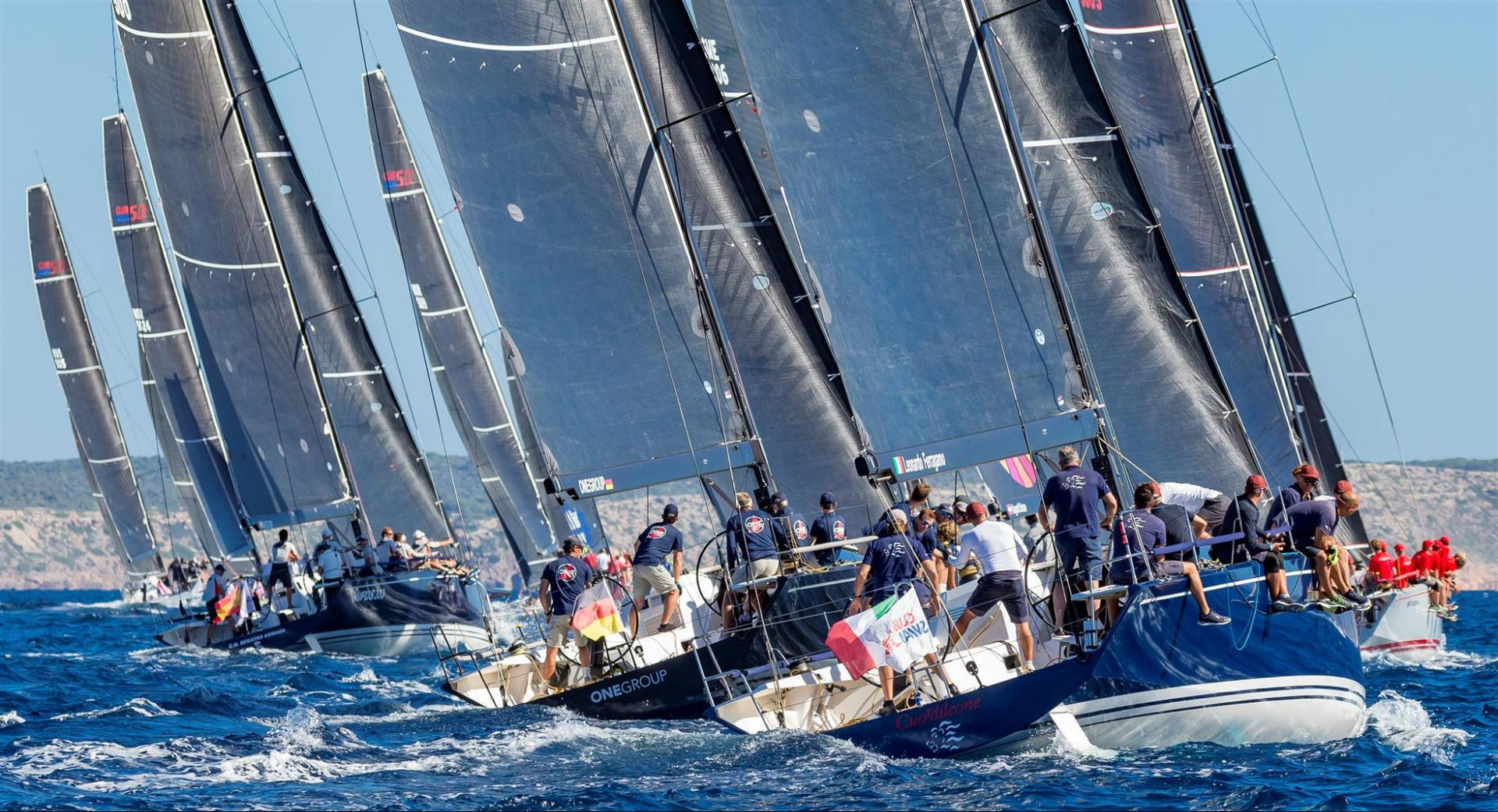
THE NATIONS TROPHY
NORTH SAILS DIVIDES AND CONQUERS AT THE NATIONS TROPHY
Three Podium Sweeps, Two World Titles, and One European Champion
📸 Carlo Borlenghi
The 2019 edition of the Nations Trophy crowned World Champions in the ClubSwan 50 and Swan 45, and both were North Sails clients. It also established the European Champions in the ClubSwan 42 (won by another North client) and the ClubSwan 36. North client Andrea Masi on Ulika* and Leonardo Ferragamo’s Cuordileone won the overall Nations Trophy, as the two teams from the same country that together scored the lowest total points. Clients also swept podiums in the ClubSwan 42, 45, and 50. Congratulations to ClubSwan 42 winners on Lorenzo Mondo’s Far Star in third, Alberto Franchi’s Digital Bravo in second, and Andrea Rossi’s Mela in first, winning the European title. And to Swan 45 winners Tea Ekengren-Sauren’s Blue Nights in third, Lennard Van Oeveren’s Automotions in second, and Klaus Diederich’s Fever in first, winning the World title. In the ClubSwan 50, the podium spots went to Sonke Meier Sawatzki’s Niramo* in third, Ross Warburton’s Perhonen in second, and Dmitry Ryboloblev’s Skorpios in first, winning the World title. In the debut of the new ClubSwan 36, clients on Pier Luigi Loro Piana’s Sease took second, Aci’s Go Racing in third, and Haakon Lorentzen’s Mamao in fourth.
“Our clients put in a lot of time and effort, and it’s up to us to provide them with the best resources and make improvements where they are needed.”
Loft experts and the Certified Service team at North Sails pitched in to help clients, both on and off the water. The service team worked late into each night making sure clients were ready for the next day of racing. North sales experts helped post great results on the race course. North Sails Sustainability Officer Fiona Bruce helped hand out prizes at the awards ceremony.
Boat speed is what wins races, so leading up to the event North Designer Juan Meseguer helped his team on the winning ClubSwan 50, Skorpios evaluate every area of the boat. “We worked to improve settings and evaluate our sail inventory, and that helped us pinpoint what we could improve.”
Rigging and sails are equal in the ClubSwan 50 fleet, so Juan knew small improvements would mean a lot. “One thing our team does exceptionally well is sail selection for each leg of the race,” he points out. “We acquired two new headsails, which helped our upwind game. What stood out in a big way was the combination of the right equipment and an outstanding crew. It was great to finish the season with the win at the Worlds.”
Skorpios, ClubSwan 50 overall winner 📸 Carlo Borlenghi
Onboard Fever, the class-winning Swan 45, expert Andrea Casale agrees that accurate sail selection before the start was a point of pride for the team. “On average, we race with our rig a bit softer, which provides a nice groove.”
Another focus was the aggressive adjustments of their mast butt. “We have two settings, one for more than nine knots and one for less than nine knots. That was helpful to maintain the perfect luff curve with our 3Di RAW mainsail.”
Fever’s boat speed helped the team’s confidence going into the last race, when only one point separated three boats at the top of the fleet. Owner Klaus Diederich told his team they had nothing to lose, reminding them that they had already won two races and could do it again. When Fever won the final race of the regatta too, it handed Andrea’s team the victory.
“This regatta is the cherry on top to all the hard work each team has put in over the season,” Andrea says. “Our clients put in a lot of time and effort, and it’s up to us to provide them with the best resources and make improvements where they are needed.”
Fever, Swan 45 World Champions 📸 Carlo Borlenghi
2019 Nations Trophy winning team member Daniele Cassinari sailed on the ClubSwan 50 Cuordileone and says preparation was the key to their success. “We started testing out new tuning settings early in the season and kept the same crew as last year, so we could focus on tuning and boat handling.”
In a class that only allows a few sail cards per year, Daniele points to the value of 3Di’s durability. “We used the same set of sails for the entire season, and we won. Then we made a new set of sails– just for the Nations Trophy, which was another win! North Sails 3Di has proven to be the fastest sails on the water. Not just in the Swan Club 50, but also in the 45 and 42.”
Cuordileone, overall Nations Trophy winner 📸 Carlo Borlenghi
Onboard the winning Swan 42 Mela, Giovanni Cassinari says their team has been working hard on boat speed and strategy since they won last year’s Nations Cup. “Our crew works very well together, which gave us the one-up on our competition. We added a new light and medium headsail and a new A2 spinnaker for this event, and it made the difference.
“Andrea Rossi, our owner, and his brother and part-owner Mario (who ran the pit), have put together a mixed crew with friends and family. That created a positive atmosphere that allowed us to replicate our 2018 victory. This year the racing was harder, so it was an honor to come back and win this event again.”
“North Sails 3Di has proven to be the fastest sails on the water. Not just in the Swan Club 50, but also in the 45 and 42.”
Regattas like the Nations Cup help push North experts to develop the best products for clients, concludes Giovanni. “The only way to test new ideas and concepts is to see them live–on the race track.”
Mela, ClubSwan 42 European Champions 📸 Carlo Borlenghi
READ MORE
READ MORE
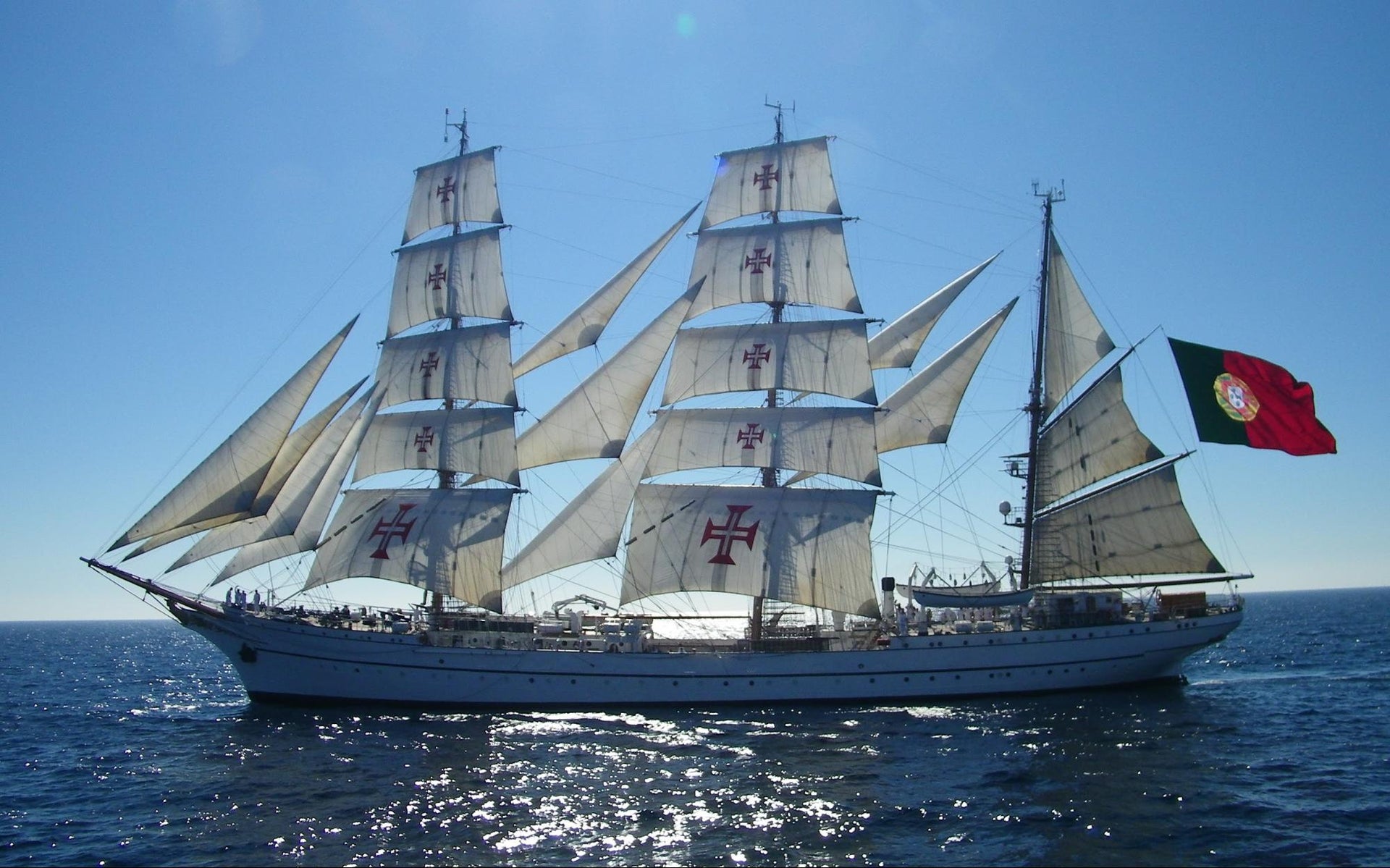
500TH ANNIVERSARY OF THE FIRST CIRCUMNAVIGATION
500th ANNIVERSARY OF THE FIRST CIRCUMNAVIGATION
History Repeats for Another Lap with North Sails
On August 10th, 1519, 239 sailors led by Portuguese Ferdinand Magellan sailed five ships out of Seville, Spain, looking for a trading route to the west. When one of those ships finally returned to Spain three years later, it was the first scientific proof that the earth is a sphere.
Next year, the 500th anniversary of that very first round-the-world voyage will be commemorated with a joint circumnavigation organized by the governments of Spain and Portugal, using their two most famous tall ships: Sagres and Juan Sebastián Elcano. North Sails will supply the sails for both vessels, a total of forty sails and 4,313 square meters of material. Top sails, jibs, and gaff sails have all been produced at North Sails in Cuntis, Spain, one of the only lofts in the world with enough space to handle such an enormous project.
“The Cuntis team has spent countless hours on the loft floor for over two months manufacturing these sails, alongside our racing and other classic sail designs,” says local sales expert Manuel Lastra. “We have extensive experience in the manufacture of Tall Ship sails. But when I see the leather used to reinforce the sail corners, I think about Magellan’s crew. When there were food shortages over the four months it took to cross the Pacific, they had no other option than to eat the leather from the sails.”
Magellan himself never made it home, and only 18 of the original crew completed the circumnavigation, returning under the leadership of Spanish navigator Juan Sebastián Elcano. Though Portugal’s Magellan has received most of the credit for the successful voyage, Spain and Portugal have organized this joint commemoration in part to recognize the important part the Spanish Elcano (and the Spanish king’s original funding) played.
With plans for many events along the way, the voyage may last as long as the original circumnavigation. Already on the schedule are celebrations at the start and finish of the 2019 Atlantic Rally for Cruisers. For more information, visit the 5th Centenary website.
Looking for sails for your classic yacht or tall ship? Contact your local experts.
READ MORE
READ MORE
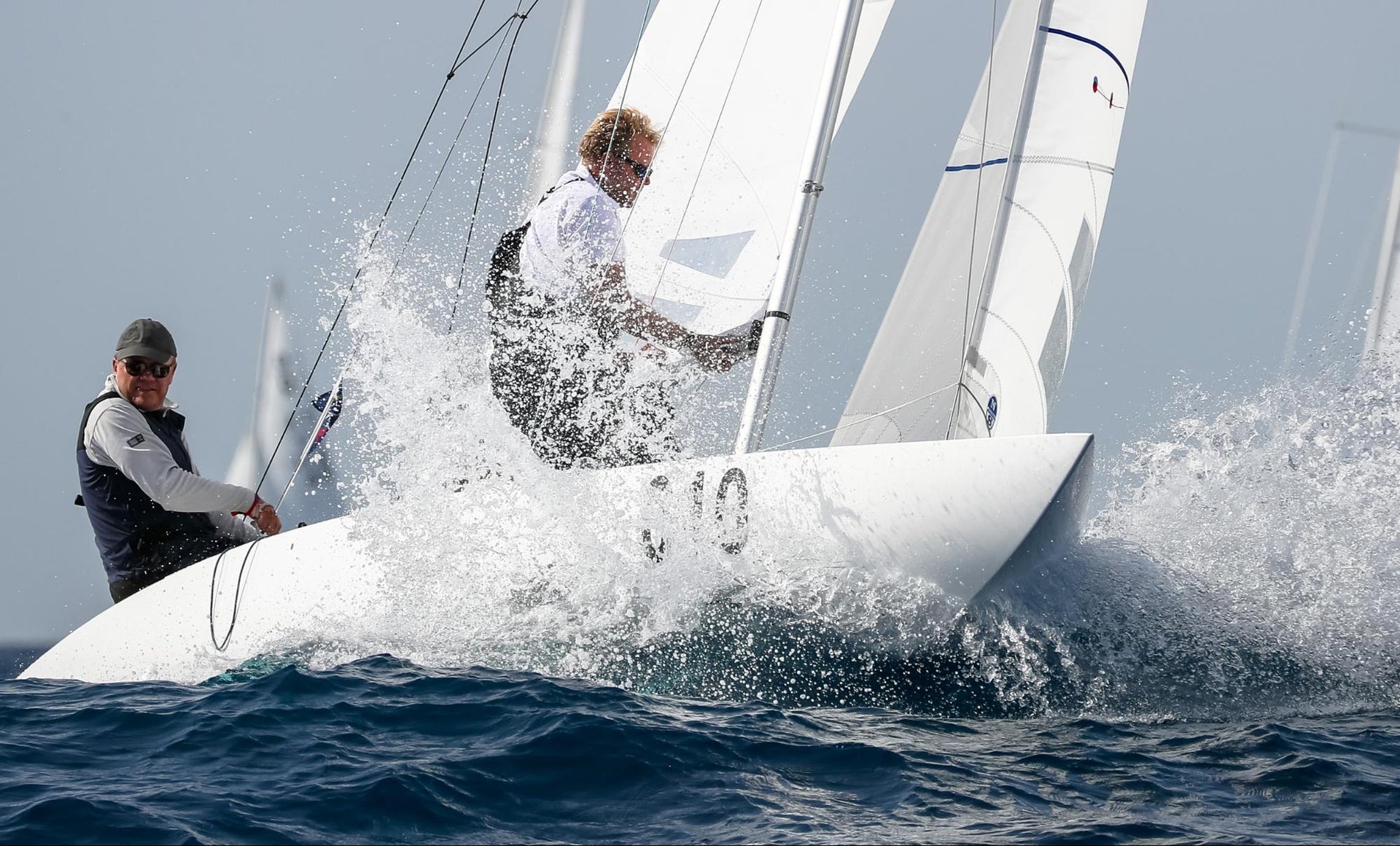
DRAGON 90TH ANNIVERSARY REGATTA
DRAGON 90TH ANNIVERSARY REGATTA
North Sails Expert Jens Christensen Wins Championship
📸 Elena Razina
What does North Sails contribute to the Dragon class? “Our class experts go above and beyond for client support,” says North Expert Jens Christensen, who was the overall winner at the 90th Anniversary Regatta in San Remo, Italy. “Theis Palm and Ruairidh Scott do an outstanding job supporting the class and clients with their knowledge and expertise. We all compete regularly at events, and really do everything we can to help keep the class special yet competitive.”
Jens is already looking forward to the 2020 racing season—even as he credits his team, new boat, and new sails for their most recent victory. To win the 90th Anniversary Regatta, he used the North Sails all-purpose A-14 mainsail, which is a crosscut sail with a radial head that allows the sail to twist open and de-power when needed. The design evolved out of the 2015 main used by 2017 and 2019 World Champions Provezza Sailing Team.
“The new mainsail sets up easy and is simple to trim,” Jens explains. “It is smooth and a little flatter than our A-7+. This sail is a strong choice in light to medium wind conditions.” For tuning, “We follow the North Sails tuning guide, which helps put us right where we want to be.” They also used the V-6M Genoa and BR-9 Spinnaker. “Having a good team and a new boat may have something to do with it too!”
Two qualifying races over the first two days divided the 163-boat fleet into Silver and Gold divisions, which each sailed three more races to determine a champion. Jens’ team won the first gold series race but posted a 24th in race two. Trusting both his team and their boatspeed, Jens rounded the top mark of the final race in fourth place. “We knew all we had to do was finish without making any big mistakes.”
📸 Elena Razina
Jens has been involved in the Dragon Class for fourteen years, and he says the great competition is what keeps him coming back. “There were something like 22 Olympic medalists at this event, and we are all well-matched at the top. The Dragon Class always brings the best of the best in small boat one design sailing.” He also enjoys the boat itself, because “ it is technical and there are things you’d only know if you sailed one. It is a fun yet difficult boat to sail, and what makes it special is that the boat design has not changed over the years.”
Another special feature of the 90th Anniversary event was the location. “San Remo hosted a fantastic event,” Jens concludes. “It is a traditional venue and the racing was top notch—as expected.”
Interested in our Championship-winning Dragon sails? Contact your local North Sails Dragon expert today.
Full Results
📸 Elena Razina
READ MORE
READ MORE
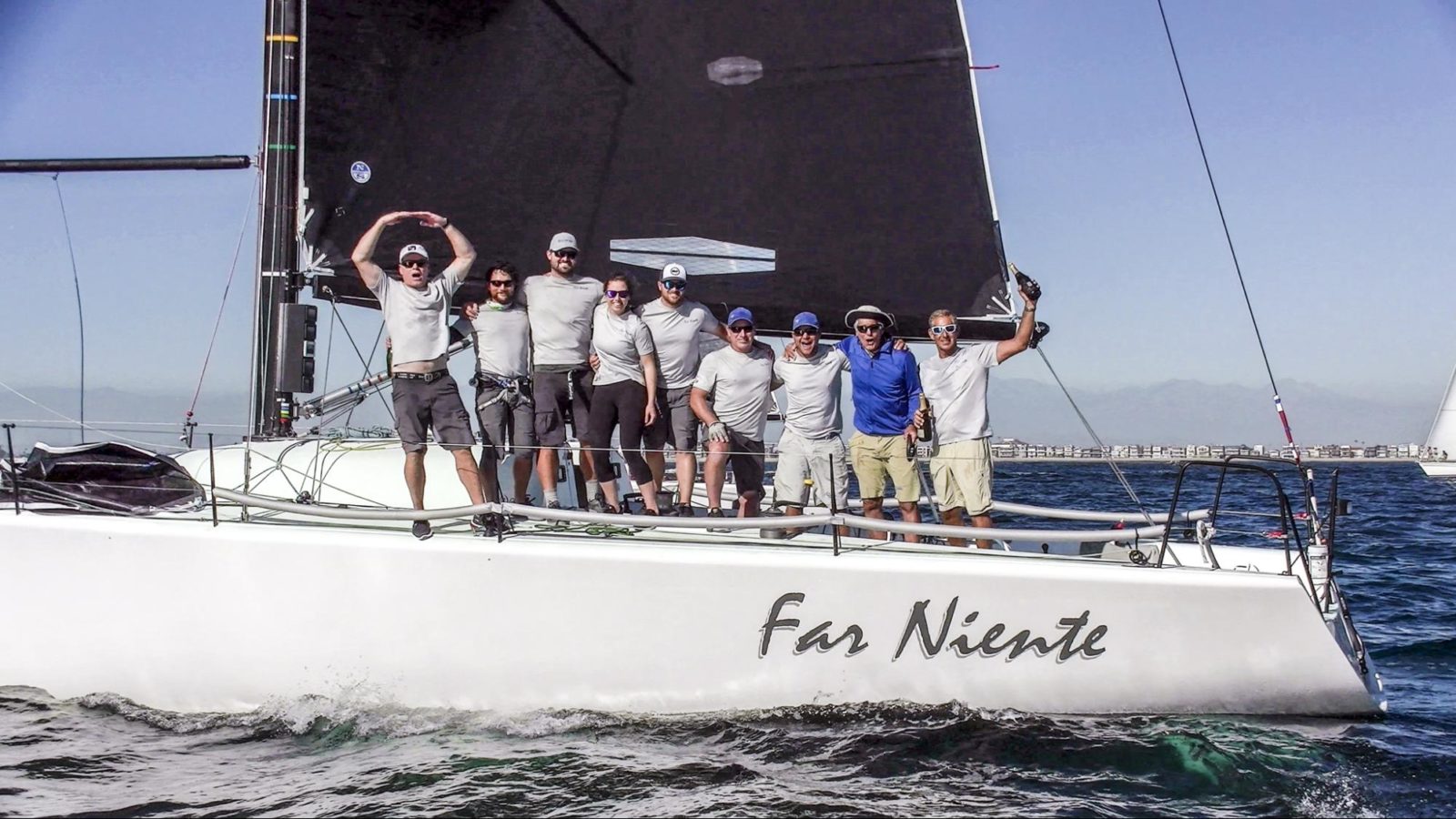
FAR NIENTE WINS FARR 40 WORLDS
FAR NIENTE WINS THE FARR 40 WORLDS
Brun & Freides Create The Winning Combination
Long time North Sails legend Vince Brun and his boat partner (and long-time friend) Drew Freides put together a strong program for the 2019 Farr 40 World Championship and sailed brilliantly to come away with a win over a talented international field in Long Beach, CA. Over a wide variety of conditions in the eleven-race regatta, team Far Niente showed great boat speed, excellent tactics, and solid starts to take the victory over last year’s champion Strungie Light from Germany. Competitors from Australia, Germany, Canada, Uruguay, Great Britain, Mexico and the US enjoyed a great week of racing in Southern California in a total of fourteen teams.
The Prep
Vince and Drew have had the boat for several years, but did only a few local regattas in the San Diego Bay area. When the World Championship was awarded to Long Beach Yacht Club, a team was assembled, a work list was started, and sails were ordered. Two weekends of training and tuning were set up but not a lot of fleet racing was done until just before the event started. The trimming team of Vince, John Hayes, Eric Doyle and Charlie Smythe worked very hard to improve the rig tune, boat handling, and trimming techniques throughout the whole event. Under the watchful eye of coach Ed Adams, changes and improvements were being made right up until the last day. Drew Freides commented; “We had the very best team and kept an open mind to learn and try new setups. These were the keys for our success. We were improving our performance every race.”
“We knew we had a good boat, but in any one design program you need fast sails.”
Conditions
The conditions were typical Long Beach sea breeze the first day but then were generally on the light side. Lots of 7 to 11 knot races with nice flat water. Powering the boat up as quickly as possible was the key to success upwind. Maintaining speed at the correct angle was paramount downwind and in light conditions it required maximum concentration and teamwork.
The Sails
“We knew we had a good boat, but in any one design program you need fast sails,” said Vince Brun. Team Far Niente’s upwind sails were 780 3Di RAW and performed well throughout the wind range winning races in everything from 8-22 knots, using tuning suggested settings practically straight from the standard North Sails Tuning Guide. Vince Brun commented; “Having good sails is not enough, you need to know how to use the sails. Just like a big family, we contacted the North Sails Farr 40 experts around the world and they shared everything they knew, making it easier for us to get up to speed.”
Rob Davis and his team Nutcracker also used a full inventory of North Sails to finish 4th overall.
📸 Bronny Daniels / Joy Sailing
📸 Bronny Daniels / Joy Sailing
READ MORE
READ MORE

NORTH HELIX POWERS IMOCAS
NORTH HELIX WITH LOAD SHARING POWERS IMOCAS
North Head of R&D Gautier Sergent Explains Why Helix Is Delivering Results
📸 Jeremie Lecaudey / BPCE / Défi Azimut
The newest generation of foiling IMOCAs are fast, exciting, and awe-inspiring. North Sails is helping six new IMOCAS, as well as older boats which have foil upgrades, prepare for the 2020 Vendee Globe, and the addition of Helix has reset the offshore performance benchmark.
We called up Gautier Sergent, North Sails Head of R&D, who works closely with the IMOCAs. Gautier explained that as the sailors learn just how hard they can push these machines, Helix is raising expectations even further than expected.
Hi G. Thanks for taking the time to chat with us. What are your first impressions of Helix sails for the IMOCA so far?
Immediately the potential of these sails is noticeable. IMOCA boats are limited in their rigging loads with the One Design rig, and this is where Helix excels. The best test so far was the Defi Azimut where North-powered teams, all sporting Helix sails, claimed the top four spots.
Helix is not new for North Sails; we have made a few hundred sails and we weren’t jumping into the unknown. But it’s still early stages of this next Vendee cycle and we keep learning about the boats, the sails, and how to best adapt the Helix concept to each sail type and different conditions. Gautier and the France-based North team have spent countless hours working alongside the yacht design teams on perfecting the models to understand the requirements. It is now time for the much-awaited reality check. As the IMOCAs will be used solo in the Vendee and then crewed in the Ocean Race, we’re focused on understanding things you can handle solo vs. what you can do crewed; parameters which are hard to capture in the numerical world. It is not a question of Helix or not Helix, it’s developing the right sail for both types of sailing. Our question is, how much Load Sharing do we put into each of these sails; the fine details of depth, draft, luff round, luff rope, etc.
📸 © Amory Ross / 11th Hour Racing
Can you describe Load Sharing Technology in your own words?
Load Sharing is how much load we design the sail to carry versus how much the luff rope or forestay takes. It sounds simple and it is simple. The trick is to find the proper ratio for the intended use and how this affects the sail shape. You also need to find the right luff rope stiffness so it interacts with the flying shape through the range of conditions.
Why is Helix with Load Sharing beneficial for an IMOCA program?
We knew that Helix would suit the IMOCA for a few reasons. First, Helix covers a wide range of expected conditions for a given sail. Sail changes in the IMOCA are very expensive, as we saw in the recent Defi Azimut. With Helix, you can focus on boat speed across the wider range and not lose miles because of costly sail changes.
The second reason is the load limit on the One Design rigs as opposed to the virtually limitless amount of righting moment the foils can generate. The more load we can move into the sail, the more beneficial it is when the boat is up on its foils as this limits the load on the rig without affecting the resulting sag of the luff.
And finally, with the dynamic nature of these boats, it is important to have very little sag so the flying shape is locked in, and converts any change in AWS into forward, not side force. Because the IMOCA boats are not allowed to have any elevators, sailing in an offshore sea state makes for a rodeo-like a ride; sharp accelerations followed by just as sharp decelerations, and very dynamic pitch and roll. Keeping the sail forces projected forward quiets the boat motion and makes for faster average speeds.
What performance gains does Helix deliver?
SPEED! SPEED! AND MORE SPEED!
Helix brings versatility and trim-ability through reduced tack load, so you can adjust the flying shape to your conditions. The IMOCA class has a sail inventory of just eight, and sail changes are very expensive, especially as the boats are much faster than the previous generation at some angles. Miles tick away when you sail 90 degrees from the course and your friends are on course doing 25+ kts…
3Di is particularly suited to Helix because of its unmatched stretch-to-weight ratio. A small adjustment makes for a noticeable change in flying shape. It is also able to handle the high loads while keeping the sails light. Not to mention the high resolution of fiber orientation and density to handle secondary off-axis load when furling.
The other major parameter is that the boats have to work in displacement (non-foiling) mode as well as on their foils. That means big changes in AWS (and to some extent AWA). Helix sails provide steady power to the boat, keeping you sailing fast on average rather than a burst of speed and then crashing off your foils.
What’s up next for the IMOCA class and how is North Sails helping prepare our clients?
The next big test will be the Transat Jacques Vabres, which begins at the end of October. This will be the first proper offshore race for the new IMOCAs and their new foils and the older boats with their retro-fitted foils.
The new sails have been put through their paces throughout the summer with a few training camps, and a first real test at the Defi Azimut. Our North team in France have been doing a lot of sailing with the teams to help them dial in their understanding and performance of the Helix Sails, and also to fine-tune the sail to their own boats. All this work helps North Sails better understand how the boat behave in real-life and in various conditions. We have collected some sailing data, exchanged with the sailors, identified some gains and things to improve, and recalibrated the models to work on squeezing out extra percent of gains. The North service team has been all hands on deck, going through sails for a simple check over and final tweaks.
The TJV is a major race and a highly sought after prize, but it is only a stepping stone on the road to the Vendee Globe. So for us and teams alike, the idea is to make sure we capitalize on this precious racing time. The race is double-handed so the boats can be sailed reasonably aggressively and with a slightly smaller penalty on sail changes.
📸 Jeremie Lecaudey / BPCE / Défi Azimut
READ MORE
READ MORE

AZZURRA ON TOP OF 52 SUPER SERIES
AZZURRA ON TOP
This is Their Fourth Overall Season Win In the 52 Super Series
📸 52 Super Series / Nico Martinez
At the end of the final TP 52 Super Series event in Porto Cervo, it was Azzurra sitting on top of the podium. North Sails is proud to have played a part in this big win, says Grand Prix sales leader Paul Westlake.
“As predicted, this season was the closest on record,” explains Westlake. “Every inch counted.” The season had three distinct highlights, he continues. “One, the 2019 Worlds, where first through third were separated by just three points. Two, Sled winning five straight races here in Porto Cervo. And three, Azzurra securing the circuit win with one race to spare! All proud moments for everyone who played a part.”
Only two teams have won the Super Series since its inception, and this is Azzurra’s fourth season victory. Even better, all ten of the teams who worked with the North Sails group of designers and Grand Prix racing experts achieved great results throughout the season.
“2019 was the most competitive and equally matched season,” remarks Azzurra skipper and team manager Guillermo Parada. There was not one team that had a big competitive edge, and the results were decided by minor details. Our focus was on the meters we could gain on the race course and positing ourselves well. All of the boats were capable of winning every race, but our team delivered a well-executed game plan.”
“The key to winning the season was consistency,” says Azzurra’s tactician Santiago Lange. “The competition in this fleet is intense because the boats are well-matched in terms of speed and quality of the sailors. In the end, the winner of the season is the team that can deliver the most consistent results.”
📸 52 Super Series / Nico Martinez
Azzurra did not have a lot of big wins throughout the season, explains Lange. “But we have a good boat, which performs well in any condition and wind speed. We were always able to secure one of the top positions anytime we were on the water, Every single day, we have enough speed to get the points needed to stay on top.”
Lange and Parada know that having the right people will deliver the best results. “The team is also on the same page in terms of how we approach each race, Lange says. We have a lot of experienced sailors on the boat who bring a good perspective. The Super Series is a long season, and it’s important that everyone has the same understanding of the game.”
“We have a good team who have been sailing together for a long time,” explains Parada. “Consistency of crew is not something that is immediately noticed but its impact is felt throughout the season and in our ability to continually sail well. In 2018 we promised ourselves we were to do better. Our biggest challenge now is defending out #1 bow in 2020.
It’s also important to have the right sail designer, and Juan Garay has been working with Azzurra for several years. “The TP52 is very demanding on sails,” explains Lange. “On a normal day we will use two or three jibs, so we’re always speaking with Juan on how to keep our sails competitive.” A daily feedback loop helps review strengths as well as areas of improvement. “We’re constantly thinking ahead as to how we’re going to spend our sail cards in the most efficient way.”
For North Sails, this feedback loop is how we learn, improve, and continually look to the next development that will give all our clients a competitive edge. The worldwide North design team has already begun a full design debrief of the 2019 season, in order to take the developments learned in 2019 forward to next March when the 2020 Super Series meets for the first time in Cape Town. “Next year the racing will be even tighter,” Paul Westlake predicts, “and we’ll be ready again to take on the best in the world.”
📸 52 Super Series / Nico Martinez
📸 52 Super Series / Nico Martinez
READ MORE
READ MORE

J/70 NORTH AMERICANS CLOSES THE SEASON
J/70 NORTH AMERICANS CLOSES SEASON
North Clients Finish 1,2*,3,4,5
Oivind LorentzenTeam Nine, 2019 North American Champions 📸 Chris Howell/J70 Class Association
The 2019 J/70 North Americans hosted by Edgewater Yacht Club in Cleveland, Ohio went off without a hitch, with ten races completed for the talented 35-boat fleet. North client Oivind Lorentzen sailing on Nine with teammates Lucas Calabrese, Ian Coleman and Will Felder won the title displaying great boat speed and consistency. North powered boats finished 1,2*,3,4,5, closing out the season with a bang. North clients have won all major J/70 events in 2019 – the Worlds, Europeans, North Americans and so far nine countries have reported National victories.
Here are important takeaways from our experts Skip Dieball and Allan Terhune from the NAs:
Starts
Working hard to maintain spacing is very important to getting a good start. The exit runway needs to be bigger in waves and hitting the line at full pace and on proper course is essential to getting poked out on the fleet and having options to implement your upwind strategy.
Upwind
Be sure to study the waves pre-start. Are they the same on each tack? Do you need to set up your trim different from tack to tack? Controls? Twist on one tack vs. the other? You gain considerable knowledge getting to the course early and figuring things out before the gun goes off.
Downwind
Always have eyes out of the boat looking for the best pressure. Many times at the NA’s there would be streaks of puffs that you’d have to reconnect if you sailed through. Dropping on the wing, fully gybing and soaking often would keep you in the best breeze longer. If you are on the step, it is essential that you prepare for the next gybe by connecting into a puff that is behind and to leeward.
Knowing Your Mode was key. The North Americans had a lot of days of full planing, lazy planing, and going wing-on-wing. Knowing when and how to do each mode allows huge downwind gains.
Sail Combos
The top three North boats all had different main and jib combos, proving our sails are user friendly and made to fit any style of sailing. North J/70 sails suit any sailing and tuning style and are fast in all wind conditions. Nine used XCS-2 mainsail and J-6 jib. Rimette had the F-1 main and J-2HC jib and Vineyard Vines used F-1 main with the J-6 jib. Each boat was able to pick a main to match their mast and then choose if they wanted the more forging J-2, or the J-6 which would allow for more inhaling.
Contact our J/70 experts for the best sail combo for your team.
* Partial North Sails inventory
3rd place John Brim and Team Rimette powered by North F-1 main and J-2HC jib 📸 Chris Howell/J70 Class Association
4th place John Baxter and Team Vineyard Vines flying fast downwind. 📸 Chris Howell/J70 Class Association
5th place Brian Keane and Team Savasana.📸 Chris Howell/J70 Class Association
READ MORE
READ MORE

HEATING UP FOR THE NATIONS TROPHY
HEATING UP FOR THE NATIONS TROPHY
North Sails Supports ClubSwan 50 Training Weekend In Palma
Preparation for The Nations Trophy began in Palma when eight ClubSwan 50s came together for a pre-regatta clinic. Team One Group spearheaded the organization of bringing the fleet together for this training weekend. North experts were amongst the fleet onboard with clients, helping improve techniques, tuning, boat speed, accelerations, and timing. The main goals of the weekend were to collectively raise the bar of competition in advance of The Nations Trophy, which begins on October 8th.
Local conditions delivered, making drills efficient and effective. A mixture of practice starts and races, with emphasis placed on sail trim and starting line strategies, skills that will be important when this one design class lines up in the 20-boat fleet during The Nations Trophy. All in all the racing was extremely close, and there was no ‘slow’ team in participation.
Over the course of the training, it became clear just how important it is to get into the groove as fast as possible. “All boats have very similar speeds, given they are all sporting the same one design class inventories,” said North class expert Arnd Howar. “From what we saw during this training session, starting, boat handling, sail trim, and boat positioning will make all the difference in overall speed and performance for individual teams when it comes time to race.” Boats that stood out during the training weekend were Skorpio, EarlyBird, and Stella Mares, consistently arriving at the corners of the racetrack in the front of the pack.
Thank you to our clients for helping make this training session a success. And a special thank you to North expert Marc Patino who ran the coach boat and daily debrief sessions. At North, we dedicate our services to improve the quality of racing for our clients with leading sail designs and support. After catching the group in action throughout this training, it looks to be an exciting regatta for our clients.
North Sails is a proud partner of the 2019 edition of the Nations Trophy. Here is a selection of our favorite photos from our ClubSwan 50 training weekend.
Fleet start at training weekend. 📸 Jesus Renedo / Sailing Energy
Norwegian team on Fram XVIII 📸 Jesus Renedo / Sailing Energy
📸 Jesus Renedo / Sailing Energy
Hendrik Brandis’ German team on Earlybird. 📸 Jesus Renedo / Sailing Energy
Sweedish team on Regina 2.0 📸 Jesus Renedo / Sailing Energy
Norwegian team on Fram XVIII 📸 Jesus Renedo / Sailing Energy
📸 Jesus Renedo / Sailing Energy
📸 Jesus Renedo / Sailing Energy
📸 Jesus Renedo / Sailing Energy
READ MORE
READ MORE

CLIENTS MAKE A STATEMENT AT MELGES 24 PRE WORLDS
CLIENTS MAKE A STATEMENT AT MELGES 24 PRE WORLDS
Gearing Up For The Ultimate Showdown In Villasimius
📸 Zerogradinord
Act four of the 2019 Melges Tour was the last hurrah before the World Championship in Villasimius, Sardinia, Italy. Andrea Pozzi and his team Bombarda have been chomping at the bit in their final preparations before the Worlds which begins October 5th and after spending a week at the worlds venue, they have set the tone for the main event. “Since the very first day of training here in Villasimius, the feeling with the racecourse and the boat has been positive,” said Andrea. Bombarda took the fleet by storm at the pre worlds, scoring three bullets in the first three races, upping the game from the very beginning for the remainder of the fleet.
In conditions of all kinds, Bombarda came out on top in 20-knot gusts, steep waves, and even in the light and lumpy conditions; they couldn’t be beaten. After eight races and one discard, Andrea’s team sat at the top of the leaderboard with six points to spare, ahead of Taki 3.
“Other than having great race results,” said Giulio, “Bombarda had great speed, executed perfect maneuvers and made smart tactical calls which made the difference in their overall result.”
North Sails expert Giulio Desiderato was in Villasimius working with Bombarda for the pre worlds. “The team’s goal for the worlds was to be comfortable and confident with the Villasimius venue. We developed a sense of local knowledge during the days of training and sail testing, which helped build our confidence.”
Andrea has had quite the season, always working to improve on the team’s weak points. “From the very beginning, said Giulio, we felt confident in the windy conditions, so we focused a bit more on our light air techniques.”
📸 Zerogradinord
“We started our campaign with the long term goal of doing well at the worlds, and we’ve taken small steps each time to get closer to that goal.”
From a coaches perspective, Giulio is very proud of team Bombarda. “They never give up,” he said. “That’s what I love about this team.”
Giulio gives a ton of credit to debriefing with the team after racing. Seeing what is going on from an off-the-boat perspective can be very beneficial when it comes to critiquing each position. “After racing, we watch the video footage and look at the photos together so we can see where changes could be made. We discuss the conditions, boat handling, and they make improvements. For me, as their coach, this is a winning approach.”
“The decision on what sails to use was made before the pre worlds,” he commented. “After the Bacardi Cup in Miami, we were confident with North Sails 3Di. Our goal was to test configurations in all conditions from then until now to get more confident with tuning.”
When asked what he loves so much about racing and coaching the Melges 24, Giulio replied; “I love this boat. From the rib, you can see all the action, too, which makes it hard to watch from the sidelines.” The Melges 24 is a great mix- providing technical upwind legs, fast and fun downwind sprints, and is super sensitive to boat handling. I have a feeling that more owners are coming back because it’s a great time. Andrea and his team are the perfect examples of owners that love being apart of this class.”
Andrea Racchelli’s Altea, a solid contender for the 2019 Worlds, was also at the top of the leaderboard, but suffered a UFD along with two finishes out of the top five, keeping him off the podium. Altea is an absolute contender for the Worlds, and fast-clean sailing will help their average. Kevin Welch’s MiKEY, as well as Bruce Ayers’ Monsoon, and Brian Porter’s Full Throttle are also a likely contender for the title.
The Corinthian division has a fair battle with Tõnu Tõniste’s Lenny, Miles Quinton’s Gill Race Team and Michael Tarabochia’s White Room all in the hunt for a podium spot.
There are 62-boats registered for the worlds, with 15 nations from three continents, which shows how much the class has evolved in numbers over the last 20 years. The Worlds will be a five-day test for all, combining some of the best sailors around the globe in one of the most popular small-boat one design racing platforms. The unique location will make for a real grand finale to the class season circuit.
Are you interested in championship-winning sails for your Melges 24? Contact your local expert today.
📸 Zerogradinord
📸 Zerogradinord
READ MORE
READ MORE

HOW TO DOMINATE THE VX ONE NORTH AMERICANS
HOW TO DOMINATE THE VX ONE NORTH AMERICANS
Here’s The Recipe From The Winners
Mike Marshall, Madeline Gill and Jo Ann Fisher, 2019 North American Champions 📸 Jeff Westcott
36 VX Ones gathered in Newport, Rhode Island from September 19-22 to race in the 2019 North American Championship. Class expert and designer Mike Marshall, sailing with North Sails design expert Madeline Gill and Jo Ann Fisher, dominated over the largest fleet in class history, with only one finish out of the top three. Newport breezes were shy for the first two days, and it wasn’t until Sunday’s seabreeze filled that the team was able to fully showcase the versatility of the North Sails inventory. North-powered teams finished 1,2,3,5,6,7,8,9,10.
Mike Marshall commented after the event:
“North Sails offers the fastest VX One sails on the market. The main allows for a wide range of rig tuning. You are able to ease the lower shrouds in light air to get headstay sag, but also tighten them in the bigger breeze to get headstay tension. The jib pairs well with the main, allowing for tight in-hauling and hard sheeting. The AP spinnaker is perfect for all the different modes, from slightly more bow down, almost planing mode in light air, to the much higher planing mode in medium and heavy air.”
Here’s their recipe for their success:
Conservative Plan
Madeline Gill had never sailed with Mike before, but as the team trimmer she says that consistency was the biggest factor in their success. “We formed a conservative plan and stuck to it – arrive early to the venue, launch the boat as soon as everything has been checked over, and get off the dock before as many other boats as possible. We quickly settled into a reliable routine that allowed us to focus fully on our individual responsibilities and quickly bounce back from most mistakes.”
Conservative Setup
Before each race, Madeline explains, the team would sail upwind to get a visual on the power in the sails. “We would then make minor adjustments to the rig tune to have adequate power in the lightest breeze we expected, without sacrificing too much depowering ability. We rarely adjusted any shroud more than one turn between races. Even when things weren’t going our way and we were not sailing well, we resisted making large scale or multiple changes.”
Marshall crossing the line to win race 7 📸 Jeff Westcott
Build Before You Burn
Mike adds that the key to speed in the VX One is to “match the speed of the boats around you before you match the angle. The chord of the keel and rudder are short; in order for them to work efficiently, the boat has to be going fast. If you ever felt like you were not pointing with the boats around you, it was probably because you weren’t moving fast enough forward. As the boat speed increases, the boat slides sideways less so it feels like you are pointing higher than the boats around you. For most of the event, I think that we kept the driving telltales of the jib with the windward one at 45 degrees lifted and the leeward one straight. If we were a little low on point, but faster than the boats around us, I would trim the main harder. If were were still low, I would potentially trim the jib a little harder, but not to the point where the top leech telltale was stalling.”
Flat Is Fast
Another part of making sure that the boat is going fast is to be able to get the bow down; Mike points out that can only happen with the boat flat, upwind and downwind. “In most conditions, I was looking to sail the boat with 8 degrees of leeward heel upwind and slightly more than that downwind. Only half of the hull is in the water, but it’s still a nice planing hull shape. Any more heel and the leeward corner is digging in, loading the rudder. Any less heel and the wetted surface is causing extra drag. When I was overpowered, I absolutely had to ease the mainsheet—in the biggest breeze, as much as two feet. Lighter teams might have to ease it a bit more, while heavier ones will have to ease it less.”
HIKE!
“I really couldn’t say it enough times all weekend!” Mike laughs. “The harder we hiked, the less I had to ease the mainsheet to get the boat flat. I’m quite sure that my team was tired of hearing me say “big hike here,” but it really is a difference-maker and in looking at the event photos, we were one of the hardest-hiking teams.”
North Sails fast VX One sails 📸 Jeff Westcott
Tuning
Forward crew Jo Ann Fisher says that tuning was a constant discussion on the boat. “Between every race, we would go upwind and check the rig. We were looking for the leeward upper shroud to be just going slack. If it wasn’t, we would put turns on the uppers. Once that was done, we would look for overbend wrinkles coming from the spreaders toward the clew, about halfway back in the sail. Any farther back, and we would tighten the diagonals until it went away. Any farther forward, we would loosen the diagnonals. Then we’d move our eyes down the sail, looking for overbend wrinkles from the gnav attachment to the clew. To reduce them, we would put a turn on the checks. From the lightest air to the windiest, we only adjusted the checks three turns. As with all tuning, the key is to be sailing upwind in race mode before you check: jib trimmed, vang on (if needed), and crew hiking hard.”
Weight Placement
Another topic Jo Ann mentioned was fore-aft weight placement. “Upwind in light air, we were trying to get as far forward as possible. If you could hear bubbles come out from behind the boat, you were too far back; if you took two or three waves over the bow, you were too far forward. Downwind too, we pressed as far forward as possible in light air. Mike was to windward sitting on the floor, Madeline was a little more to leeward, and I was sitting out leeward.”
In bigger breeze, Jo Ann says the team moved a half body width back from the shrouds upwind. “Downwind, we moved to all sitting on the weather side and then to all hiking a body width back from the shouds. Again, the goal was to not hear any bubbles from behind the boat. When you are planing, it is more about keeping the bow out, but unless the wide part of the boat near the mast is digging in, you don’t need to move any further back.”
Communication
Finally, Jo Ann points out that the team’s communication was crystal clear, well in advance of each maneuver. “At five minutes to the start, we knew where we’d start and what we were going to do upwind. 10-15 boat lengths before the windward mark, we knew what boats we would be ducking and whether we would be setting the kite at the offset (or before) and going straight, or looking to jibe. Three quarters of the way down the run, we knew which gate we’d round and which way we wanted to go upwind. It was not a lot of words, but everyone was prepared. Some of the biggest opportunities to pass boats is at marks, so knowing what the plan is long before you get to them is critical to having a good rounding.”
For more information about VX One North Sails products or to talk with your local expert, visit the VX One class page.
Mike’s superb concentration on the race course. 📸 Jeff Westcott
READ MORE
READ MORE
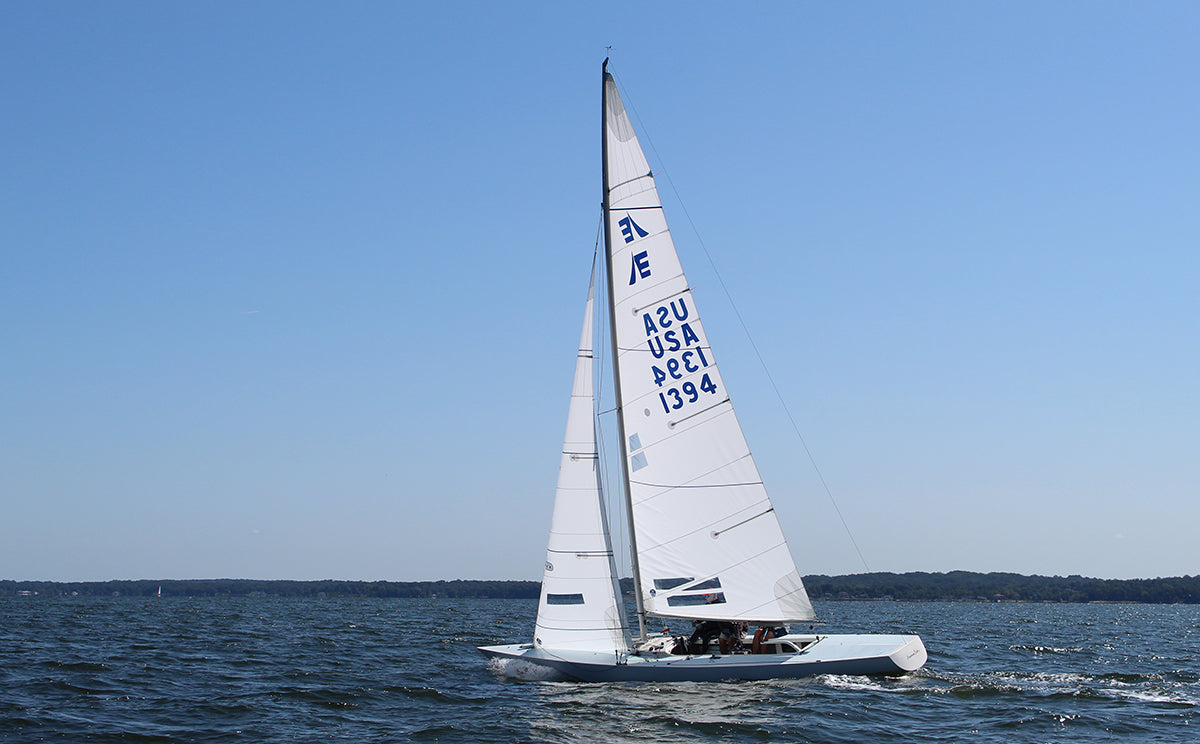
NORTH SAILS SUPPORTS ETCHELLS U.S. NATIONALS
NORTH SAILS SUPPORTS ETCHELLS U.S. NATIONALS
Etchells Fleet One Celebrates 50th Anniversary
George Francisco’s American Baby (USA 1394) sailing in the light airs which dominated the weekend
American Yacht Club, located in Rye, NY delivered more summer than fall weather for the 2019 Etchells U.S. Nationals. The hot temperatures created instability in the breeze making it difficult for the Race Committee to complete races, but they did the best they could with the conditions they had. Frustratingly, this meant that only four races were completed in the three-day regatta.
Talking about the event, North Sails Ched Proctor explains the tricky conditions: “It was light air with a lot of goofiness, often coming down to catching puffs of air which scattered the race course. The organizers worked hard to put on a good event, so it was a shame the wind didn’t cooperate.”
Jim Cunningham (Etchells International Class Chairman) and his team of Erik Shampian, Steve Hunt and Carrie Wiley onboard Lifted (USA 1461) took the title after achieving consistent, top ten results throughout. New boat Lifted was sailed by Iain Murray’s team to win the recent World Championship in Corpus Christi where Iain thought outside the box with the boats rigging and sail set-up. Whilst the fleet waited for wind on Saturday morning, it provided great entertainment with easy viewing of Lifted’s several unique features which allowed the jib to be sheeted further inboard and and smaller lines with more appropriate purchases to make things easier.
Although the racing was not as prominent, class camaraderie was top notch. While waiting for wind, the fleet spent time together sharing stories about the past. This is a great indicator of how important it is to bond with your fleet members!
50th Anniversary Stories To Remember
Formed in 1969, the Saturday night dinner celebrated the 50th anniversary of Etchells Fleet One with several speakers coming to laud the Etchells sailors. Dewy Eisdale referred to the founding members going against the club traditions, saying “there’d never be an Etchells fleet here”. The IOD was the boat of choice at the time, but a few stepped up and bought an Etchells. Jim Mertz is one name that came up, which then initiated a great fleet story to share in the downtime.
Peter Duncan (PD) spoke about crewing for Jim Mertz one summer when he was 11 years old. He was part of the first four-man Etchells team and he recalled one funny yet exciting time when they were rounding the offset mark, while leading a race in the Larchmont Race Week. The crew was composed of Jim’s wife and ten-time Adams Cup winner, Alegra “Leggy” Mertz, and a large Labrador retriever which ideally cowered by the base of the mast (best place to carry weight in an Etchells!). As they approached the offset, there was a flock of ducks making a racket which sprung the dog into action, along with the crew. Jim jibed the boat trimming both sheets, he also grabbed the dog by the tail performing a dog-flip, slinging it forward over Leggy’s shoulder into the front of the cockpit. 11 year old PD managed to jibe the pole, while viewing the flying Labrador. As they calmly sailed away from the jibe mark, Jim commented “Good job PD”.
The stories kept on coming – multi-time World Champion Dave Curtis talked about four ways to lose an Etchells Worlds that he should have won and reviewed the losing tactics in the 1980 Olympic trials. It was a reunion for several long-time Etchells sailors.
North Sails was proud to sponsor the Etchells U.S. Nationals and despite the conditions, the top twelve boats used North Sails. Ched Proctor sailed with his son Charlie, and friends Monica and Chris Morgan who finished in a respectable sixth place.
Learn more about our championship-winning Etchells sails.
View the full results
Steve Benjamin practicing the day before the regatta
North Sails, proud sponsor of the 2019 Etchells US Nationals.
READ MORE
READ MORE

AC36 REVENGE OF THE SAILMAKERS
AC36 REVENGE OF THE SAILMAKERS
The America’s Cup Is Back To The World Of Battens And Sailcloth
📸 Emirates Team New Zealand
By Ivor Wilkins, first published in the Royal NZ Yacht Squadron magazine, Breeze
On the eve of Emirates Team New Zealand’s new AC75 launch, the waterfront was buzzing with speculation about how these boats would perform. Would they crash and burn, or majestically rise up on their foils and race away? Within the halls of the team’s smart base at the Viaduct Basin, faith in what the sophisticated simulation programs had indicated remained strong. But the sense of eager anticipation and just a touch of nerves was palpable. For North Sails designer Burns Fallow, AC36 is a return to the America’s arena. This is his sixth America’s Cup campaign, but he was forced to sit out AC35 in Bermuda, when the sails were limited to one-design jibs. With hard wings no longer featured and a sail plan now made up of soft sails, albeit in an unfamiliar form, could this be regarded as the revenge of the sailmakers? He laughs at the notion, but doesn’t dismiss it. “It is a bit like that. We have had no mainsails for two cycles, so for this one we have two. We have to keep this configuration for one more go-around and then we will be equal again.”
His reference to two mainsails relates to the double luff twin-skin arrangement introduced for this cycle. Double luff mainsails are not entirely new, but have been largely confined to experimental craft. They are about to come under very close attention at this cycle of the Cup. Fallow says the first thing observers will notice is how short the rig is. “The sail plan is very small. If you go back to the Version 5 monohulls in Valencia, these rigs are more than 8m shorter. “Everybody understands that once you are foiling, you don’t need a large sail plan.” In displacement mode, this keel-less monohull does not need a large sail plan either. With low stability at slow speeds, excessive sail would be a liability. “It is quite different in that respect from a catamaran, which has massive stability from the get-go,” Fallow explains. However, regardless of the hull form, the name of the foiling game is to get up and out of the water as quickly as possible and to remain flying as long as possible. Surely, a monohull, which is considerably heavier than the previous America’s Cup catamarans, would require more power to achieve lift-off? Fallow says all the teams are going to be very coy about their lift-off speeds. “The aim is certainly to get foiling as soon as possible.”
A glance at the figures indicate that the sail designers have a challenge on their hands delivering the power to achieve that. The hard wing on the AC50 in Bermuda was 3m shorter than the AC75 with about 40m2 less area, but the monohull is three times the weight. The AC72 wings in San Francisco were 11.5m taller than the AC75 rig, with a surface area of about 260m2 and an overall weight (platform + wing but without crew) of approximately 7,200kg. The new AC75 is slightly lighter with an overall weight of 6,450kg (platform + wing but without crew) powered by the double luff mainsail with about 100m2 less surface area. The AC75 does gain from jibs that are proportionally much larger than the catamaran jibs, with the forestay attaching 2m below the top of the 26.5m mast.
These yachts can also carry masthead code zero sails flying from a bowsprit. Code zeros were allowed but seldom used on the AC72s and dispensed with altogether with the AC50s in Bermuda. Fallow also points out that, although the wings were very efficient, the soft-sail system is much lighter – “about half the weight of a solid wing.”
The value of the code zero remains a question mark. “Just where this sail fits in is one of the big questions,” says Fallow. “All the teams will be keen to find out how it works at full scale. “The rule is very open on how deep the code zero can be, how triangular, how big or small. There is a wide range of options, from almost like an A1 on an IRC boat in its most extreme version, down to a small, flat jib-top, or anywhere in between. As always with code zeros it will come down to ease of deployment and how to cope with the transitions from non-foiling to foiling and vice verse.”
📸 Emirates Team New Zealand
“It is a big mode change and there is an awful lot happening all at once for the guys trimming the sails. It is not like shifting gears on an IRC boat. This is like changing the whole transmission in an instant. It is a time of very high energy demand, that is for sure.” All those factors suggest that code zeros will probably carry a considerable “handle with care” warning and will probably come out only in light conditions. Within the triangular space created between the mast and the forestay, considerable freedom is given to jib designs. While most of the early design effort has gone into the double luff mainsails, the jibs are likely to play a big performance role and Fallow expects that once the yachts are trialing more attention will be devoted to headsails.
The objective with the new mainsail arrangement is to achieve a wing-like shape without the tremendous logistical demands involved in stepping and removing a cumbersome solid wing structure every day. It is accepted that the efficiency and control of the soft sail will be less than the solid wing, but considerably more than a conventional mainsail. The rule provides teams two zones within the sail plan – a 4m upper zone at the top and a 1.5m zone at the bottom – to install custom control systems to influence shape and twist. The area between what Fallow refers to as the “trickery” zones has to be passive. Glenn Ashby was seen as king of the wing at Bermuda as he reclined in his foxhole with his thumbs dancing over an X-box type controller to shape the wing for maximum performance. He acknowledges the soft system will have less control, but is confident of enough trickery in the freedom zones to achieve considerable shape-shifting.
In terms of design tools, Fallow says Michael Richelson of North Sails Group had done a lot of FEA work on solid wings using their proprietary Membrain software, so they used that as a starting point for investigating the new system. “During the rule development, I was debugging,” Fallow says, “and Michael was writing code. We were going backwards and forwards two or three times a day. It has been an invaluable tool.” In practice, the two skins are hoisted on separate luff tracks 400mm apart on the aft face of a D-shape mast that rotates 45° either way.
📸Emirates Team New Zealand
Teams are free to decide whether to join the two leeches, or leave them separate. Bearing in mind the leeward side has more curvature than the windward side, allowance has to be made for the natural tendency of the skins to slide backwards and forwards along the leeches on opposite tacks. Sheeting and tensioning arrangements are left open to the teams, as is the decision on whether or not to have a boom.
Fallow says the sheet loads would be comparable to a conventional maxi yacht at equivalent speeds. There was talk early on about whether the mainsails would be reef-able. Fallow: “The rule has been written in such a way that you could still have a mainsail that did not go to full hoist, but that would leave the top of the rig creating turbulence and drag.” More likely, teams will have full hoist mains designed for different wind ranges. “You would not have to necessarily make your final sail selection at the dock,” says Fallow. “You could switch mainsails on the water, but it is a considerable exercise by the time you have the two skins hoisted, with all the attachments and internal controls connected. You would not want to be leaving that decision to the 10-minute gun. It would be more like 40-45 minutes.” With the long-awaited on-water phase of the program about to begin, the sailors and team will soon learn the capabilities of this radical new design. Fallow expects it will follow a similar progression to the catamarans, first coming to grips with the foiling transition, then moving to foiling gybes, upwind foiling, foiling tacks and finally the ultimate goal of 100% dry laps Looking back, Fallow says the two years since they set about framing the new rule have rushed by. “We have learned a great deal in that period. Now we are about to go in the water and we will learn a great deal more. We are fully aware that this is just a milestone along the way. There is a long way to go.”
READ MORE
READ MORE

AUGIE DIAZ, PURE STAR SPEED
AUGIE DIAZ, PURE STAR SPEED
Back-To-Back Victories At North Americans And Eastern Hemispheres
Augie Diaz and Henri Boening, 2019 Star North American champions. 📸 Art Petrosemolo, Nauticalphotography.us
There is no better reward for us at North Sails than seeing a client win a big regatta. Witnessing world-class sailor Augie Diaz win two back-to-back Silver Star events using our recently launched Star designs is the best product testimonial we could ask for. Congratulations Augie Diaz, sailing with Brazilian Henry Boening, for the victories at the North Americans in Barnegat Bay and the Star Eastern Hemispheres in Austria with crew Christian Nehammer.
A competitive 32-boat fleet and four days of the best conditions on Barnegat Bay made for close racing throughout the seven-race series for the North American title. It all came down to the final race and in the end, Augie and Henry secured the title. Augie used our M-25 mainsail throughout the series along with the J-6 Jib for four of the seven races.
“Fresh off his win in the Eastern Hemispheres using North Sails, Augie felt pretty confident in his speed to be able to win the North Americans,” commented North Sails rep John Macausland.
“Extensive R&D and uncountable hours of sail testing have paid off,” exclaimed North expert Eric Doyle. As the Star Class Leader for North Sails, Eric devoted the past two years to figuring out how to make Star sails faster. His decisive victory at the 2019 Bacardi Cup proved the time was well spent. “We were really pleased with our performance throughout the wind range in Miami,” Eric explained, adding that he used the new M-25 mainsail for the entire event.
Last May, the story wasn’t different at the Star Sailors League Breeze Grand Slam. “We were extremely pleased with the newly developed sails as were SSL League Champions, Sheidt/Boening. Rohart/Ponsot finished second in the league, using the North M-25 Mainsail and J-6 Jib throughout the regatta,” said Eric.
Get ready for the next SSL event and the Star Worlds in Nassau with the fastest Star sails. Contact your local North Star Expert today.
North Sails Allan Terhune sporting the M-25 main and J-115 jib. 📸 Art Petrosemolo, Nauticalphotography.us
📸 Art Petrosemolo, Nauticalphotography.us
READ MORE
READ MORE

#NSVICTORYLIST: MELGES 20 EUROPEAN CHAMPIONSHIP
#NSVICTORYLIST: MELGES 20 EUROPEANS
Brontolo Racing Declared European Champions In Malcesine
: Federico Michetti, Andrea Pacinotti, Manu Weiller, Filippo Pacinotti, 2019 Melges 20 European Champions! © Melges World League / Barracuda Communications“Winning the Europeans is a like a cherry on top of a cake,” says Filippo Pacinotti, skipper of the 2019 Melges 20 European champion Brontolo Racing. Along with trimmer Federico Michetti, tactician Manu Weiller, and MVP/ Bowman Andrea Pacinotti (Filippo’s son), Filippo took first place in the 37-boat fleet by seven points.
Racing with his 13-year old son Andrea was a dream come true, Filippo explains. “Being able to share the same passion is truly a gift.” It also added to the regatta’s challenge, because Filippo was concerned that he would be too emotional during the races. “But Federico has known my son Andrea since he was a child, so it helped a lot. He is like an uncle to him.” And the rest of the team was excited by the family connection as well.
“Having Filippo at the helm and his son on the bow,” says tactician Manu Weiller, “it was a very special win for them to share.”
MVP Andrea and his father Filippo © Zerogradinord
Filippo’s son Andrea started sailing at age nine in the Optimist and is now an active windsurfer in the Techno 293. “We sailed together since he was six,” said Filippo, “but that was only when we were cruising. Never have we raced together until this season on the Melges 20.”
“This has been a perfect season for us,” Fillipo continues. “A joy that has a special flavor because my son Andrea raced for the whole season by my side, and with two champions and special friends like Federico Michetti and Manuel Weiller.”
Melges 20 Expert Giulio Desiderato says he is always excited to sail on Lake Garda. “I always go home with nice memories. This year’s Europeans was challenging, with the Ora in the afternoon being particularly light, and the Peler being stronger in the morning. For Brontolo to win the championship, that’s a big honor. They had incredible scores.” Brontolo Racing scored three bullets and no race worse than a ninth, allowing them to skip the last race and take a victory lap to the dock.
© Zerogradinord
Manu Weiller was elated with the team’s overall result. When asked what the team did particularly well, he talks about the challenges of sailing in a deep Melges 20 fleet. “One of the hardest parts for me as tactician was calling the layline during the first upwind. Once we tacked, it was all about finding the best pressure, and quick. Big gains were made with the right calls, and it was very important to start well.”
When it comes to trusting their sailmaker, Filippo says that North has been key to the Brontolo program. “North’s Melges 20 inventory is efficient and easy to trim.The tips and tricks from class leader Giulio Desiderato were taken in great consideration. From sails to service, I believe the speed we had was a demonstration of a great partnership.”
“From sails to service, I believe the speed we had in Malcesine for the Europeans was a demonstration of a great partnership.”
Giulio Desiderato agrees that all the Melges 20 development work has provided great results: “2017 and 2018 Worlds victory with Pacific Yankee, the 2019 victory with STIG, and now with Brontolo at the Europeans! It shows we at North Sails are always focused on this class, providing our maximum efforts towards the knowledge and technology when it comes to sail design and expertise. The new jib, the Ji-4, designed by experts Giovanni Cassinari, with the help of Michele Melandri and Mike Marshall, has been a concrete upgrade for the performance of our teams.”
© Zerogradinord
For Brontolo, winning the European title completes a path that started when they finished second at the Worlds last year. “I want to dedicate this victory equally to my family and to all those who have raced with Brontolo over the last ten years,” Fillipo explains. “On this foundation, it was possible to build the success achieved at this year’s Europeans. It’s great to say we’ve earned our title now.”
Both the World Champion winning teams and the European winners used Mi-2 mainsail, Ji-4 headsail, V4-2R reacher, and R-2 runner, which are North Sails standard products for the Melges 20.
European Championship Full Results
© Zerogradinord
© Zerogradinord
© Melges World League / Barracuda Communications
READ MORE
READ MORE

ROLEX NYYC INVITATIONAL CUP GRAND FINALE
ROLEX NYYC INVITATIONAL CUP GRAND FINALE
14 Countries. Five Continents. Five Days Of Racing.
© Daniel Forster / Rolex
20 amateur teams representing 14 countries qualified to compete for a week of racing at the 2019 Rolex New York Yacht Club Invitational Cup. In its sixth edition, the event is host to teams from 14 countries, across five continents. The Southern Yacht Club returned to defend their title this year, having won the 2017 edition, but early on it was San Diego Yacht Club dominating the race course. After the first four days of racing in dynamic conditions, the scoreboard remains tight. September 14th is the final day of racing and you’ve got front row seats to all the action. Tune in to the live broadcast on Facebook or YouTube where commentators Andy Green and Tucker Thompson will bring you the play-by-play direct from the race course as we watch a champion emerge from the 20-boat fleet.
More Ways To Watch:
Follow on Instagram
Watch Live 2D Tracking
New York Yacht Club Regatta Website
Results
© Daniel Forster / Rolex
© Daniel Forster / Rolex
© Daniel Forster / Rolex
© Daniel Forster / Rolex
© Daniel Forster / Rolex
READ MORE
READ MORE

(USING) THE RIGHT TOOLS FOR THE JOB
(USING) THE RIGHT TOOLS FOR THE JOB
North Sails Leads The Way In Modern Sailmaking Tools
📸 52 Super Series / Martinez Studio
Seahorse Magazine has given us special permission to republish this Tech Brief featuring JB Braun, North Sails Head of Engineering and Design, along with Grand Prix sail designers Dave Lenz and Mickey Ickert.
After three decades of development and investment, the North Design Suite is able to produce reliably fast sails, that keep their shape, leading the way in modern sailmaking tools. The legendary figures in the history of sailmaking made their reputations by having a keen eye for recognizing what they knew from experience to be fast shapes. Their methods to achieve this were mostly variations of the long process of trial and error, where proven fast shapes were first recognized and then cataloged for later reproduction. Some were more rigorous than others at this process, implying that the trade of sailmaking was more art than science.
With an engineering background, Lowell North was a pioneer half a century ago in developing this process with more rigor and detail than his peers and embracing the important role that complex computational tools were to have in transforming ideas developed about 3D shapes into the reality of cutting panels in 2D. Along with this, a thorough understanding of the material properties of sailcloth was needed so that when assembled, those panels could predictably hold their shapes. North’s mastery of this made them an early leader in the field of computational sail design built mostly on developing their own tools in what’s now known as the North Design Suite.
Leap forward to now after three decades of development and investment in these tools, and we can marvel at the astounding computational power available to reliably produce not just fast shapes out of the box, but sails that remain fast as well. The software in the North Design Suite not only models sail shapes in detail for production purposes, but these shapes are the product of a complex process where everything that affects that sail while in use is now also modeled within North’s Flow and Membrain programs: stiffness of the mast and rigging, sheet tensions and sheeting angles, luff tension, leech tension, etc. can be characterized as the sail is virtually brought through a broad range of wind angles and speeds.
And the advent of bespoke fiber sailcloth construction for upwind sails that started with North’s 3DL technology 27 years ago has since evolved in sophistication and now there are many more fiber types available – such as carbon and Dyneema – that provide the strength used in 3Di technology. With 3Di construction, an advanced composite structure is now possible to better handle all loading scenarios. North’s software has also evolved to where deformation of shape can now be made not only predictable but manageable through clever engineering and design.
Likewise, for off-wind sails, what started as a catalogue of flying shapes tested in the Twisted Flow Wind Tunnel at the University of Auckland two decades ago has become a simulation program called the Virtual Wind Tunnel, which is used to observe laminar and turbulent flow of off-wind sails as a tool, to better understand flying shapes and how they change through varying wind conditions.
Flying shapes can now be coupled with North’s own Velocity Prediction Program (VPP) to model their effect on boatspeed. And to refine this even further, North has also been at work for some time with support from the Sailing Yacht Research Foundation (SYRF) on a comprehensive Performance Prediction Program (PPP) that can be used to iterate through not just sail sizes, but shapes as well to accurately predict their effect on performance.
Putting the tools to work: Collaborative partnership
The strong reputation North has developed over the decades is based on having organized feedback loops from its sales experts, sail trimmers and customers back to the sail designers, who in turn could adopt and adapt this important information into their design work. Now their role has become more complex and has evolved into a performance consulting service that can become an added value to North customers, whether working directly in a grand prix environment or benefitting indirectly from how those innovations may become adopted through the broader fleet.
Take for example a customer who has an interest in building a new 65-ft boat that will race primarily inshore on day races, with the occasional short offshore race. He and his project manager and naval architect would derive great benefits by meeting with the North Design Services team at the very outset of the project to collaborate on how to help efficiently transform ideas to expectations and then on to realities even before lines are drawn. “We first need to understand some basic parameters in the design of the boat,’ says North’s head of design and engineering, JB Braun, “like righting moment, the center of effort in the sailplan, and whether a fixed or rotating mast is planned. Then, with our rig design software, we can start the design iteration process. With our experience and from being involved at an early stage, we can not only provide answers, but also help shape the relevant questions that arise to help the client define their goals. This becomes a real partnership, whose mission is to deliver performance in line with the definition of the project. Working through this is where we can help clients explore options in the available design space since we have tremendous experience and a huge knowledge base from many different fields.”
With this approach the team at North are also able to assist clients competing in a contrasting situation like the TP 52s – the 52 SuperSeries formats are fixed and the boats and class rules are highly evolved and extremely tight. The best teams on the best boats therefore make a winning edge in performance very difficult to find, so this pushes everyone to their limits looking for some incremental advantage. North team member Dave Lenz, who is based in the UK and is a regular observer and coach on this circuit, says, “so much of our strength comes not just from the software and design tools, but in knowing just how they can be put to use alongside our observations. We spend hours and hours on the water analyzing everything related to performance in the 52 class so we know how the data can be used in context to refine our tools to explore new ideas.”
📸 Rolex / Kurt Arigo
North’s ongoing association with successful teams in this and numerous other classes and events is an important core strength since all members of the team can benefit from the contributions made to the knowledge base. The value of these are not just at the front end of new projects, but insightful debriefs held during and after projects are complete are also vitally important. Imagine, for example, all that North learned from their experience in two multiple cycles of the Volvo Ocean Race, the numerous course records set by Comanche and other first-to- finish programs, the Imoca 60s and other trans-oceanic classes, and how that is put to use in every new sail built to race offshore?
Not to mention the America’s Cup, which is pushing toward the next generation of sails in an attempt to marry the practicality of a “soft” carbon sail with the performance of a “hard” wing. The solutions arrived at and the process of engineering and design is very relevant throughout sailing, which is why so many of North’s talent base are involved with teams in every cycle. This includes Burns Fallow who is embedded with Emirates Team New Zealand, Gautier Sergent who is with INEOS Team UK, while Michael Richelson and Juan Garay are at Luna Rossa.
📸 Emirates Team New Zealand
These projects often have a single point of contact on the North team, who can then reach out to the broader North group of experts to get help when needed in a collaborative style that Lowell encouraged in the early days and is very much in the DNA of the company. And with that group also now including sparmakers and riggers at Southern Spars and Future Fibres, that reach goes very deep indeed into the knowledge base. “This communication across the group has made huge progress in the last few years,” says NZL-based veteran sail designer Mickey Ickert. “We’re getting really good at having an open string of communication among team members and a stream of valuable info from both the design and sales forces.” The importance of this process cannot be overstated – teams in the Grand Prix arena have dedicated professional sail trimmers who collect and manage the settings and performance data, so North has developed the protocols and tools to best digest their valuable input.
Having been both a sailmaker and pro sailor for decades himself, North Sails president Ken Read says he’s impressed with what the design group has developed with their tools, such as the new HELIX approach to designing and building the next generation of performance sails. The use of Load Sharing Technology to produce a new generation of self- supporting sail structures is “nothing short of being a game-changer”.
“I sat in on a meeting of the design group recently, and I hardly understood what they were saying,” Read said. “This is how I know I’m doing my job, having guys this smart working on innovation. And I’m really encouraged that we have new members of the team fresh out of school that are really familiar with the latest ideas and the software tools to pursue them. This is great news for the future.”
📸 52 Super Series / Martinez Studio
READ MORE
READ MORE
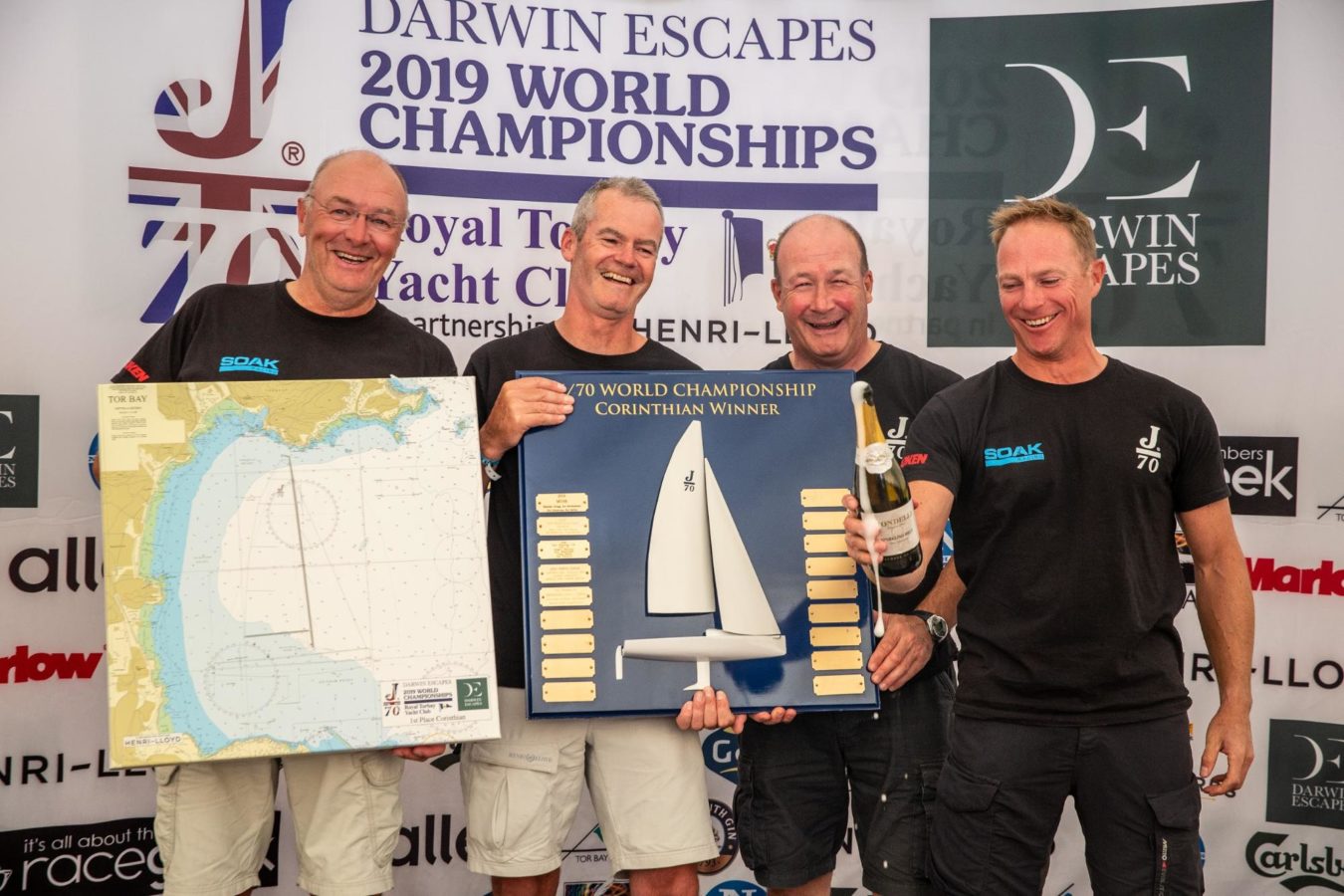
SPEED READING: J/70 WORLDS
SPEED READING: J/70 WORLDS
Marshall King’s Corinthian Team Soak Racing
The 2019 J/70 Worlds had a great showing, with 77 boats and 36 Corinthian teams. We interviewed Marshall King on Soak Racing about winning the 2019 Corinthian World title, his team (Ian Wilson, Adam Brushett, Andrew Shorrock), and their success.
Maximizing Their Potential
For Marshall, it started three years ago. He and co-owner Ian Wilson knew they wanted to put together a competitive team for the Worlds, so they focused on ways to maximize their potential. “I felt quite strongly that the J/70 rewards accurate trimming, particularly of the jib, but also the main, and so we decided to set up the team in a way that had someone fully dedicated to just boat speed.
“We distributed the tasks so that the strategy and tactics were the main points of focus for Ian and Adam,” he continued. “Once the jib trim was completed, Andy would take over the main trim and work hard on keeping consistent boat heel angle and have the two sails working well together.” Conditions varied all day, every day, so the sail trim was continually adjusted. “When it was gusty or shifty, or the sea state changed, he’d switch back to the jib, and I’d handle the main. That level of attention to main trim is a key part of making the J/70 go fast. We never really cleated the main.
“Ian looked after the big-picture strategy and was also our spinnaker trimmer. Adam, our bowman, focused on the shifts upwind and where we were in relation to other boats. He was all about the numbers and compass headings.” Adam and Ian were always talking, keeping the entire team aware of how they were doing.
Preparation Started Way Before The Worlds
“This year we went to the Monaco Winter Series in January, February, and March, and the Spring Series in Warsash—all with the same crew,” Marshall said. “We focused on getting the boat going as fast as possible and after each event, we would share our notes and try to be our own coach. We found that other boats were faster from time to time, but we felt more consistently fast because we focused on those small trimming details.”
Trusting North Sails Design & Expertise
Why did Soak Racing choose North for their J/70 campaign? “The reason we came back to North was that we felt their product was consistent,” said Marshall. “They were faster than any other sails out there. We thought the sails were manufactured well. We used the same XCS-2 mainsail all year, and it was still fast in Torbay. We also used the J-2 High Clew jib and AP-1 spinnaker downwind.”
“Consistency is important to me,” said Marshall. “Our sails were great all-around performers and we felt fast in all directions. We were happy in all conditions.”
“We used North’s tuning guide as a base,” added Marshall. “We found that the suggested settings were great in certain sea conditions, and in some cases, we modified them slightly until we were happy with how we were going.”
How They Won The Regatta
Soak Racing finished second in the seventh race. “It was probably one of the windiest races of the regatta. We had a bad start, but we were able to get out and find clear air, and we had unbelievable boat speed. We hit the shifts and rounded the top mark in good shape. We got to the bottom of the run right behind Eat, Sleep, J, Repeat. The second beat was a challenge, and Paul’s team extended on us. On the last run, we made sure to hang in there for a solid second-place finish.
Going into the final race of the regatta, there were two boats close on points. “At the last start, we made a late call to go right just before the gun. From there, we didn’t take any risks.” Soak Racing finished even on points with DSP but won the tiebreaker.
“DSP pushed us hard, and it came right down to the wire in the end – but that’s the excitement that comes with J/70 racing. It just doesn’t get much closer than that!”
2019 J/70 Corinthian World Champs, Team Soak Racing © Sportographytv
Second place corinthian team DSP © Sportographytv
Third place corinthian Joyfull © Sportographytv
READ MORE
READ MORE
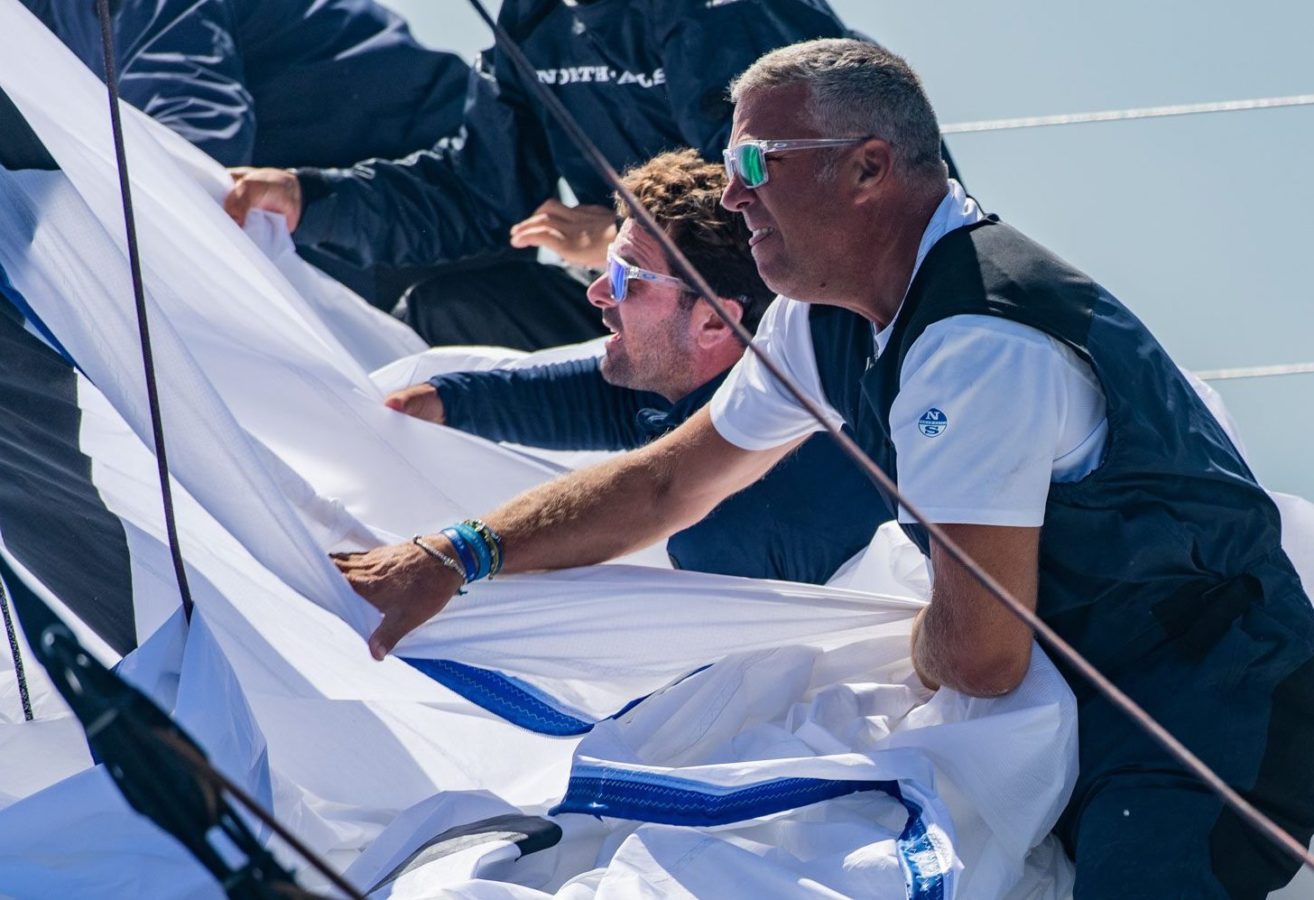
CLIENTS TRIUMPH IN PORTO CERVO
📸 ROLEX / Carlo Borlenghi
After five days of racing on coastal courses between the islands of the La Maddalena Archipelago, it’s possible everyone who participated in the 30th annual Maxi Yacht Rolex Cup in Porto Cervo went home feeling like a winner. “The Costa Smeralda gave us the gift of a perfect week,” said event organizers. “This event is much more than a regatta; it is a combination of the sea, the wind, the natural scenery, the organization, and the spirit of its participants—the owners and crews.”
North clients swept the podium in four classes and won a total of seven divisions, but one of those winners, Highland Fling XI’s strategist and North superyacht expert Mike Toppa, was equally proud of the overnight sail service provided by the company. The North Sails pop-up loft in Porto Cervo was run by Italian service manager Bacci Sgarbossa and his crew of sailmakers. “Maxi sails are not small or light,” Mike points out. “Our service guys showed up on the dock with a special flat bed truck that had a built-in crane to pick up and deliver sails. They were professional, highly skilled, and enthusiastic.” Best of all, there were surprisingly few repairs needed, even after the breeze topped 30-knots in race three.
📸 ROLEX / Carlo Borlenghi
Courses for Maxis
Tom Dodson, North superyacht expert and longtime tactician and on the J-Class Velsheda, which won the Super Maxi division, says there were 43 possible course options—a mix of windward/leewards and coastal racing—and the wind was different every day. “Before we left the dock, it was important to choose sails so that most options were covered. All our 3Di sails are from early 2017, halfway through their competitive life, and they’re going well.”
📸 SuperNikka / Fabio Taccola
Mini Maxi Racer 2
SuperNikka won both races the first two days, eventually taking the overall division. “We have been racing with the same crew for five years,” owner/helm Roberto Lacorte says. “Every year we have acquired more performance, and with a fast boat we are free to choose the best tactics and defend ourselves when it’s time. The races are always very tight and close, mistakes are not allowed. I have the good fortune of having a superior crew by my side.” Next year, a bigger boat will be a whole new challenge; “Closing the cycle of SuperNikka with a victory is the best way to start this next adventure.”
Alessio Razeto is one of SuperNikka’s superior crew, and he agrees the team definitely earned the win. “We made almost 40 sail changes!” he says, adding that there was “not one single issue with the sails.”
📸 ROLEX / Carlo Borlenghi
Mini Maxi Racer/Cruiser Victory
Jack Slattery, US-based sales expert and tactician on Stephen Cucchiaro’s Swan 601 Flow, says the Boston-based team came into the regatta thinking they could win. Along with an upwind inventory of 3Di RAW, they used a Helix Code Zero and asymmetric spinnaker. “We were stronger in the moderate and heavy conditions,” Jack admits. “We had a new rig tune going into the event which favored 12+ True, so we’re working on an improved tuning matrix.”
Flow had a three point lead going into the last day, but they got behind early in the last race. “We had to fight our way through the pack and finally engaged our closest competitor in the last mile and a half, pushing them back just enough to win.” Their secret to success was a combination of good starts, excellent crew work, and sailing their own races, Jack says. “We often made subtle gains around the corners. Those small gains can add up to exponentially larger ones.”
📸 ROLEX / Carlo Borlenghi
Maxi Racer/Cruiser: Podium Sweep
Nefertiti, a Swan 90, won the Maxi Racer/Cruiser division, where North inventories swept the podium. North sail designer Gonzalo Ramos Vertiz trimmed main, and he says believing in their inventory was a huge part of the victory. “The boat’s owner, captain and crew all have complete confidence in North Sails. In this kind of heavy big boat, it’s crucial to be able to push the sails to the max.”
📸 ROLEX / Carlo Borlenghi
3Di shape “just locked in”
Mike Toppa agrees that 3Di sail inventories meet the high expectations set by owners and crews. “It was a tough fleet with competitive boats and talented sailors. We hit a mark in race four and had to take a scoring penalty, which put us a point behind Rambler going into the last day.” Fortunately, he adds, Highland Fling XI is a great all-around boat that performs well throughout the wind range—and so are the sails. “We saw everything from eight to 30 knots in Porto Cervo, and I’m continually impressed at how stable 3Di sails are when it’s windy. The shape is just locked in.”
📸 ROLEX / Carlo Borlenghi
READ MORE
READ MORE
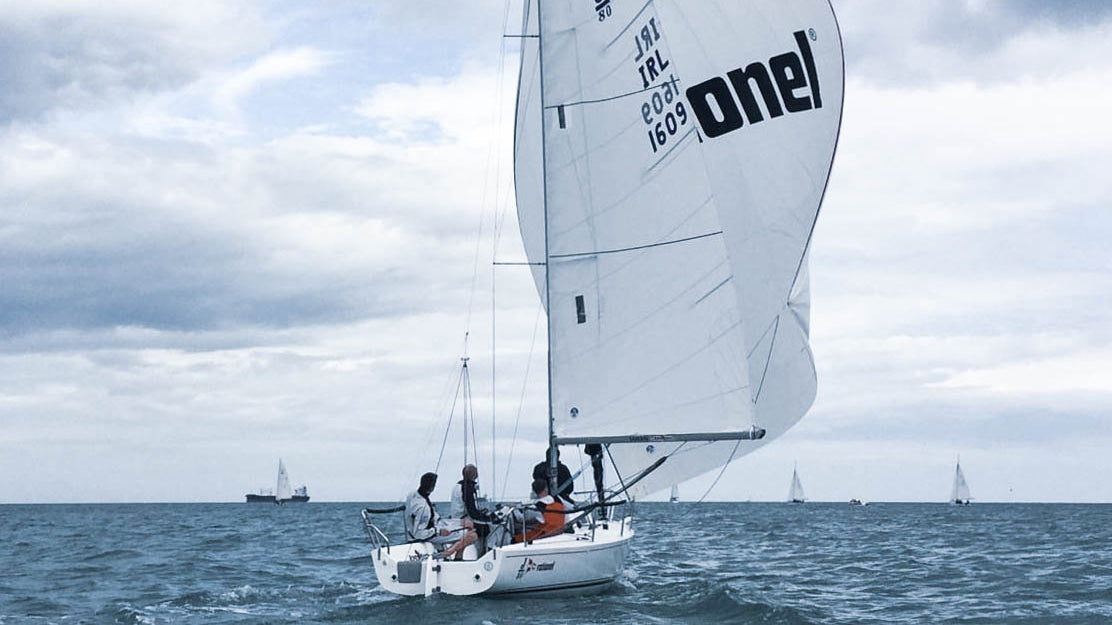
SUCCESS FOR NORTH CLIENTS AT J/80 UK NATIONALS
SUCCESS FOR NORTH CLIENTS AT J/80 UK NATIONALS
North Sails Fuels Top of the Fleet in Lymington
Jonny O’Dowd’s Jabs 📸 Shane Hughes
Eleven boats fought through three days of light to medium conditions at the J/80 UK Nationals on Christchurch Bay, hosted by the Royal Lymington Yacht Club. The top four finishers used North Sails; 3Di jibs won six out of seven races.
North Sails Ireland’s Shane Hughes sailed onboard Nick and Annie Haigh’s Slightly Steamy, and the team posted consistent firsts and seconds in the first five races. But when Corinthian team No Regrets scored two bullets in races six and seven, they moved into the overall lead. With no sailable wind on the final day, Slightly Steamy did not have the opportunity to recapture the lead and finished just one point out of first. Despite this, sailing with the 2019 APi-1 3Di RAW and APi-2 3Di RAW jibs, Shane and the team had impressive speed throughout the regatta.
Finishing third was Jabs, (Jonny O’Dowd, Ross McDonald, Patrick Good and Paul Quinn). Shane coached this team in the lead-up to the event and says ”it was clear that this talented group would be competitive in their debut J/80 National Championship. It will be great to see how this team develops; I’m sure there will be more top results to come.”
Jonny adds, “As this is our first year sailing J/80’s, this was a key event to learn and evaluate our progress over the season. Using the North Sails Tuning Guide, we felt we were very much on the pace and hugely look forward to the 2020 season.”
“As this is our first year sailing J/80’s, this was a key event to learn and evaluate our progress over the season. Using the North Sails Tuning Guide, we felt we were very much on the pace and hugely look forward to the 2020 season.”
All three podium teams used the MR-5 Spinnaker and either the crosscut MAXM1 All Purpose or T-6R Radial-cut Mainsail. With our September One Design promotion, now is the time to refresh your sail inventory. You can also ask your local J/80 North expert about boat/rig set up and improving your results in 2020.
READ MORE
READ MORE
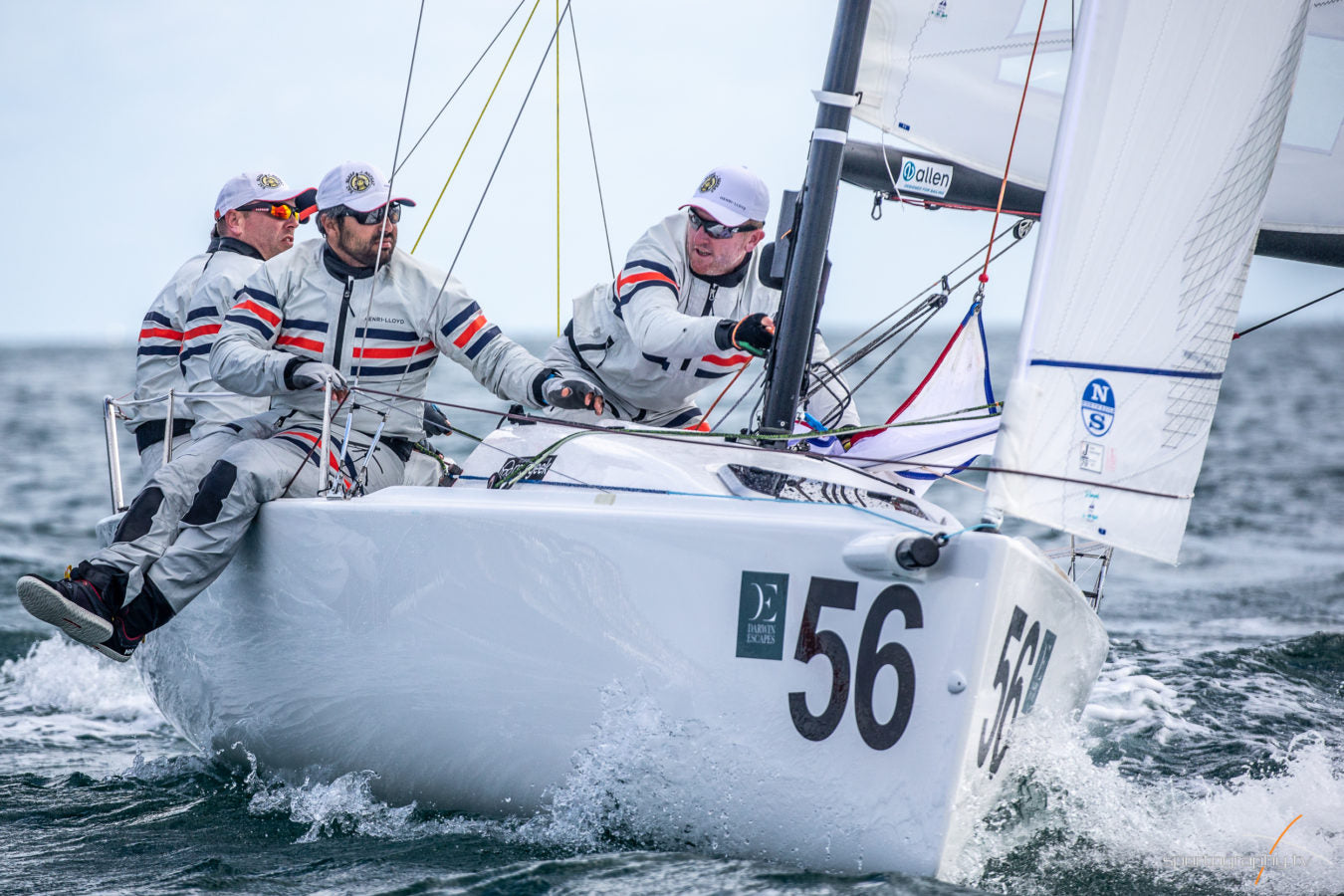
ON TOP OF THE J/70 WORLDS
ON TOP OF THE J/70 WORLDS
North Sails Power Past The Competition
Team Eat, Sleep, J, Repeat – 2019 J/70 World Champions. 📸 Sportographytv
Not one but two North-powered teams were named World Champions at the J/70 Darwin Escapes World Championship in Torquay, UK. Paul Ward’s Eat, Sleep, J, Repeat, sailing with Mario Trindade and North Sails experts Charlie Cumbley and Ruairidh Scott, collected the overall win, while Marshall King and the Soak Racing team found success in the Corinthian Division. All top 10 finishers had North Sails onboard.
The core team on Eat, Sleep, J, Repeat has been together all season, and this Worlds win caps a 2019 victory list that includes Cowes Week, J-Cup, and the J/70 UK Nationals. “Our mindset heading into this event was really good,” says tactician Charlie Cumbley. “We were saying if we finished top 10 we’d be really pleased. It’s obviously gone way better than expected!”
Winning Strategy
Though they could be considered a “local” team because they were able to drive to the event, Charlie credits their level-headed approach to each race for the victory rather than any home field advantage. “Torquay is a different set of conditions to what UK J/70 fleets usually sail: less tidal, with offshore winds that drive the shifts.
“We began the regatta conservatively,” he continues, “knowing the venue was shifty and playing it a bit safe on the first day. But after that we decided there were big gains to be made by committing to a side. We hung in the top 10, gradually picking people off rather than trying to go for a big gain. Without going too extreme, we upped the risk level each day.”
People & Product
Eat, Sleep, J Repeat used the flatter F-1 Mainsail to match their Selden mast, a J-6 High Clew Jib, and the AP-1 spinnaker. “The sails excelled through the wind range,” Charlie says. “They are truly all-purpose, and we were comfortable with whatever conditions came our way.” For more info, visit the J/70 Inventory page.
Rather than any special boat setup, Charlie says the team “literally followed the North Tuning Guide. It shows you exactly how to set up the boat, and with that you’ve got a real chance.”
Congratulations Paul, Charlie, Ruairidh and Mario!
Full results
📸 Zerogradinord
Starting line at the Darwin Escapes J/70 World Championship. 📸 Sportographytv
READ MORE
READ MORE
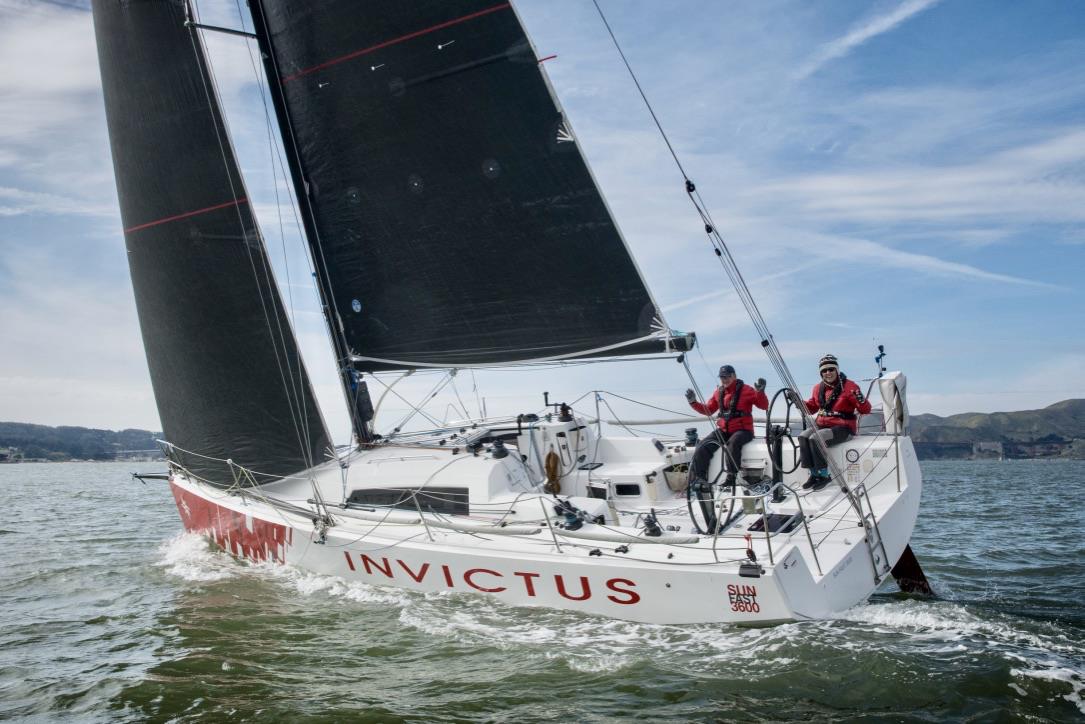
ROLEX BIG BOAT SERIES
ROLEX BIG BOAT SERIES: NICO POPP’S BUCKET LIST
San Francisco Sailor Explains His Goals To Win The Biggest Series On The Bay
Nicolas Popp has a day job in tech and is not a professional sailor, but he says he started preparing his boat Invictus, a SunFast 3600, for the 2019 Rolex Big Boat Series as soon as the 2018 regatta ended. “We never stop in San Francisco, that’s the beauty,” he says.
“We” is Nico and boat partner Jacques Benkoski. “I call him my girlfriend,” Nico jokes, “because right after I call my wife I call him next to ask, ‘When are we going to go sailing?’”
Bucket List
Like many San Francisco Bay sailors, winning the Big Boat Series is an important goal for Nico. “Even if it takes fifteen years, we’re going to keep at it. It’s the grail for us.” His team has been sailing together for a long time, but last year they brought North Sails expert Seadon Wijsen onboard as a coach to help them improve. “We needed a coach to take us to the next level—make us work better together, and maybe be more silent on the boat!” Nico laughs. “Everybody on the boat loves Seadon, and his coaching has made a tremendous difference, even now when we sail without him.”
Once they recognized their improvement, the team recruited North Sails Brian Janney to sail on Invictus for this season. As Nico puts it, “We thought, ‘My goodness, it’s truly important.’ And then we noticed the other guys also had somebody to help! So we figure, ‘Let’s do that, because we’ll get better.’ It’s still a long roadway to go towards perfection, but the pace of improvement just accelerated.”
Sail Changes
“My dad used to say, ‘A third the sail, a third the boat, a third the crew,’” Nico remembers. They’ve improved the crew with coaching, and the boat will have a new bottom in time for the 2019 Rolex Big Boat Series. For sails, Invictus’ upwind inventory is 3Di RAW, purchased in 2018. “It’s such a difference,” Nico says. “The way they keep their shape, they’re easy to trim. In fact, even if you mis-drive they keep their shape, so they look good!”
After the 2018 RBBS, they took Seadon’s advice to change out their asymmetric spinnaker. “He looked at the boat, he looked at us, and advised us to go with the symmetric. That made us way more competitive.”
Their competition has noticed the team’s improvements. “We know these boats, we compete with them all the time. The last race Seadon wasn’t there, we got positive feedback from : ‘Wow, we’ve never seen you go that fast! What have you changed?’ That was great. And we felt it, we can see the progression, which is always good. We’re getting better.”
The team has three goals, Nico says. “Number one, be safe; number two, have fun; number three, win—in that order. There’s a lot of enjoyment in performing better. It’s great to win, but if we sail better all the time, that’s a real motivation.”
With all the pieces in place, there will be no excuses onboard Invictus this year. “We’re taking care of the sails, we’re taking care of the crew, we’re taking care of the boat.” And while having fun is a very important part of the mix, “it’s also important to win because it’s reinforcement that, okay, we’re getting better. Even when you win the Friday night races much more frequently, you can see that on average you are performing better, and that’s important. Everybody wants to get better.”
“Number one, be safe; number two, have fun; number three, win—in that order.”
Enjoying the Process
Though Nico and team are working hard toward winning the Rolex Big Boat Series, he says he also really enjoys the learning. “I stopped windsurfing because I was not improving, and I think that’s the magic of sailing. There’s always the next thing to learn, and the little thing that makes the difference. It’s a process. We’re much better on upwind sail trim and crew coordination, and now we’re going to try to improve downwind. Whether it’s at positioning at the start, the laylines, the rig tuning, sail trimming… it’s like, ‘Okay, I think there are just a lot of things we can improve.’” They plan to continue working with a coach even after the RBBS.
More Goals
Nico says he’s also asked himself, “What happens if we win the Rolex? I don’t want to win it too early… because what’s going to be the next step?” He already has the answer. “We’re going to try the Caribbean next year. And probably when we win the Rolex, we’ll go do Les Voiles.” He lists the Giraglia as another bucket list item; “I absolutely have to go and do that race with the team.”
So if and when they do win the Rolex, who’ll get the watch—Nico, or Jacques, his boat girlfriend? Nico has a plan for that too. “We’ll go buy another watch, exactly the same model, and then we’ll randomly put it in a box. We won’t know which one came first!”
“It’s really the journey,” he concludes. “The Rolex is just one big milestone to being better, and we’re having fun doing that.”
READ MORE
READ MORE
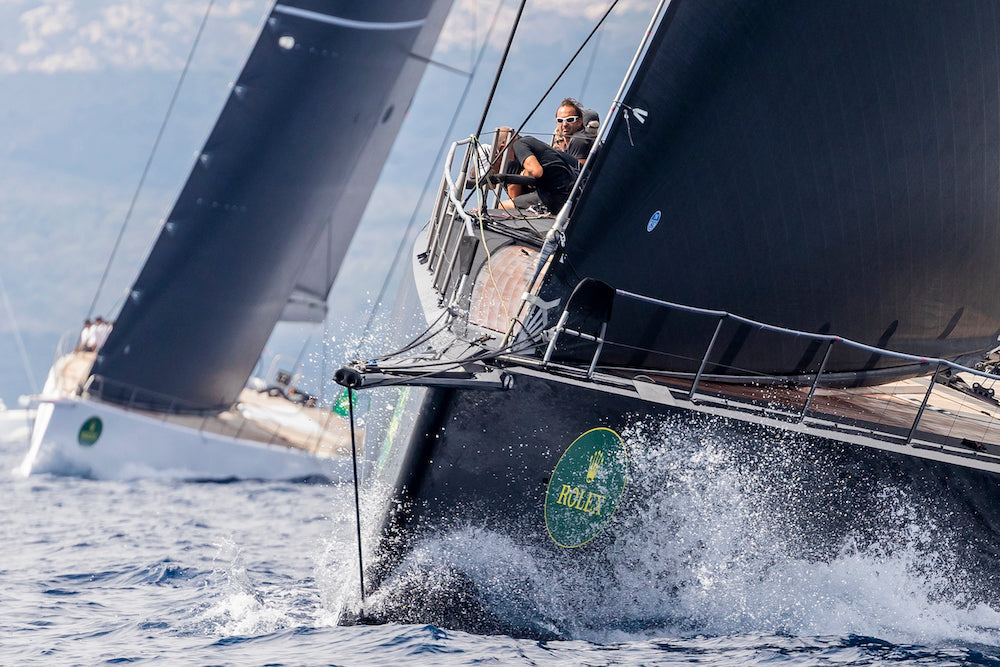
2019 MAXI YACHT ROLEX CUP
2019 MAXI YACHT ROLEX CUP
Final Days of Prep in Porto Cervo
📸 ROLEX / Carlo Borlenghi
Alessio Razeto is the North Sails Italy sales manager, and this week he is pulling double duty as he gears up to sail on SuperNikka in the Maxi Yacht Rolex Cup. In fact, the whole North sales and service team in Italy is working hard to make sure our clients are fully prepared when they hit the start line in Porto Cervo.
We spoke with Alessio in advance of Maxi Yacht Rolex Cup and learned that the local team is busy with sail deliveries, inventory checks, and getting their head in the game for what he calls “a world yacht show.”
“This is a special race,” he says, “because you have a collection of the biggest, most competitive sailing boats in the world. Onboard and on the docks you’ll see top industry boat designers, yard managers, boat captains, and pro sailors.
“Yacht Club Costa Smeralda provides incredible hospitality and an exceptionally high standard of race management,” Alessio explains. Racing is set against the backdrop of the rocky coast and when the Mistral shows up it’s just the best possible conditions.”
📸 ROLEX / Carlo Borlenghi
Asked for his predictions on results, Alessio shrugs. “There are many classes and it’s really difficult to predict a possible winner, especially racing under IRC where wind conditions are not affecting the handicap; if the wind increases or drops, the final score could be flipped upside down. This is a mixed regatta, both windward-leewards and coastal racing, so all the boats are set up to the lightest displacement and boat handling will be the key.”
Sail selection is vital at Maxi Yacht Rolex Cup, Alessio adds. “We must have the boat set up for coastal racing and that means being strong all around; up and downwind as well as reaching angles. We will face quite long legs with 90-100 TWA if the Mistral comes, and carrying on the proper A0 or jib top can make a huge difference in speed. All the North Sails representatives are working with their teams, looking at best boat VPP in order to get the boat sailing at 110% of target polars.”
The company invests a lot of time and resources to be at this event, he continues—as do our clients. Minor sail problems will be addressed to make sure customers are competing at full potential. “We’ve got 25 years of providing overnight regatta service in Porto Cervo, and North Sails will have a pop-up loft throughout event. We have a big temporary loft with a van outfitted with a crane to make sure we are able to properly service all the yachts. Maxi racing requires a maxi structure!”
📸 ROLEX / Carlo Borlenghi
The days before the regatta is a madhouse, he says. “The North service team is working at full potential getting sails checked over and delivered. Sardinia is a big island and we’re 100% committed to making sure both new and repaired sails get to Porto Cervo in time so our clients are race ready.”
With most of the racing starting off Porto Cervo and heading to Bonifacio between Maddalena and Caprera, there are huge variations in wind conditions during each leg. “You’ll see the fleet starting with a medium jib which they’ll stick with as the wind builds throughout the day,” Alessio predicts. “3Di is the perfect fit for this race as it carries through a wide wind range. Most of the North boats will not switch out their jib, and that is the biggest advantage of carrying a North sail because that maneuver and loss of boat speed comes at a huge cost.”
With Helix sails such a hot topic, we asked what part they will play in Porto Cervo.
“There are a lot of discussions about Helix and Load Sharing Technology on the dock,” says Alessio. “There is a clear advantage in terms of performance, weight saving, and the reduced load on tack and head. North 3Di technology gives the best potential benefit to push this concept to the limit and I expect it will be integrated into other sails in the near future.”
Once racing starts, Alessio will be part of team SuperNikka, a Mills 62. “It’s my ‘baby’ as I have been involved since the boat was a drawing on white paper. Our team has been together for a long time. We are constantly looking at ways to improve, and all the small changes have led to a massive performance increase. Sails are one of those improvements, and our North Sails IRC rule inventory includes a 3Di RAW main, jib and A0. We are also planning to test some special features on a reaching sail. We really work together, and our consistent results over the past five years are proof.”
Good luck to Alessio, his team SuperNikka, and all North Sails clients competing at 2019 Rolex Maxi Cup.
📸 SUPERNIKKA / Fabio Taccola
READ MORE
READ MORE
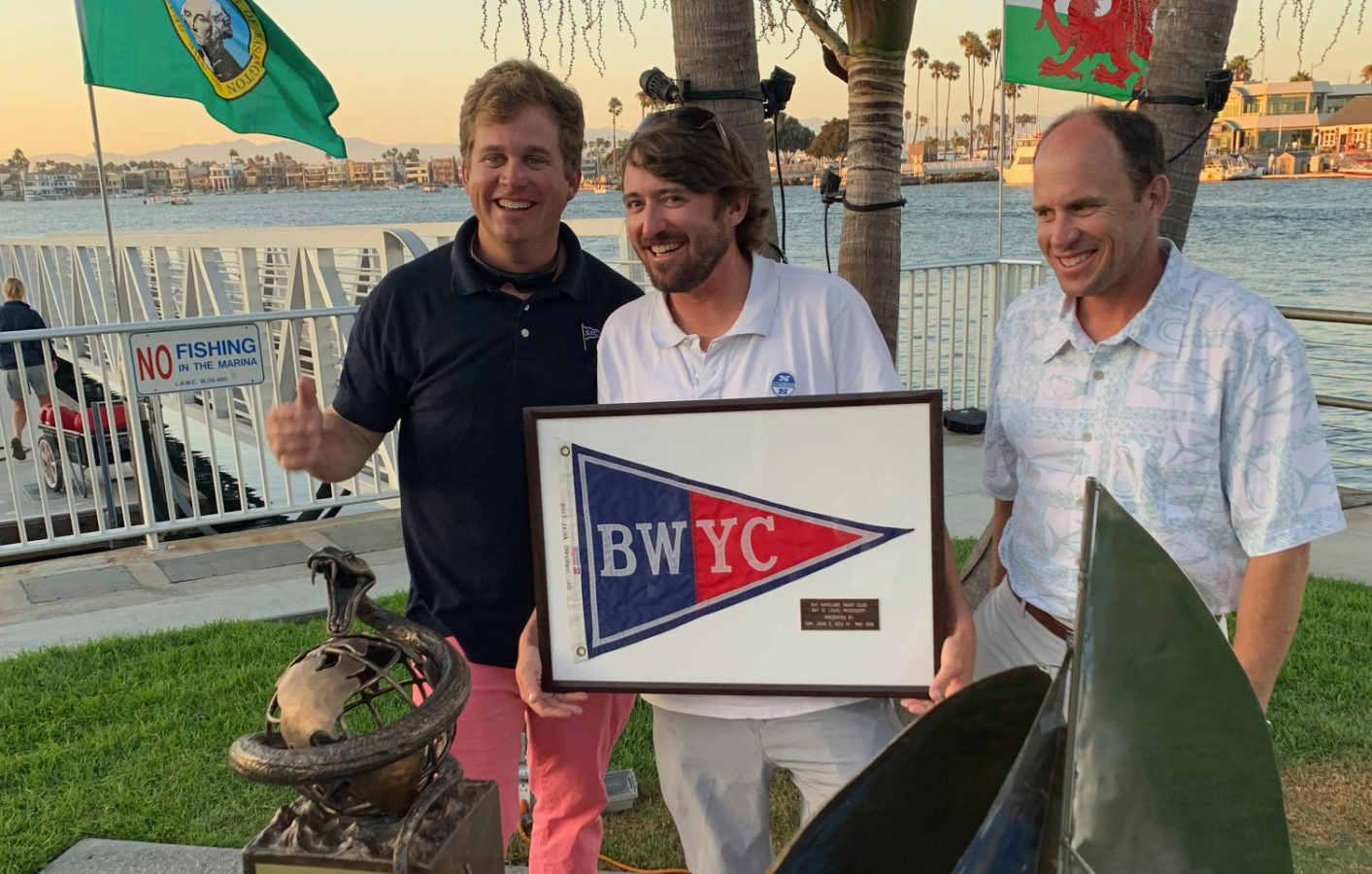
CLIENTS WIN THE VIPER 640 WORLDS
CLIENTS WIN THE VIPER 640 WORLDS
Boat Speed & Preparation Goes a Long Way
The 2019 Viper 640 World Championships in Long Beach, CA, supplied sailors with varying conditions across the board in regards to both wind strength and wave state. The first two days were classic Long Beach: breezy with small swell. The third day proved to be quite different due to a weather pattern referred to as the “Catalina Eddy”, which brought lighter air and much choppier conditions. Jackson commented; “Keeping a Viper moving in those conditions was trying to say the least!” The fourth and final day of racing found sailors with a moderate to strong breeze and heavy chop, but only on port tack. North Sails expert Jackson Benvenutti joined the Eagen brothers on Cajun Underwriting and commented; “Our North Sails proved to be the fastest and most versatile sails in all of these conditions, giving us what we needed to win the regatta.” The team scored an impressive five bullets over the course of the regatta and was deemed unstoppable. Although the championship was just last weekend, for Cajun Underwriting it started way before they got to California.
Marcus and Andrew Eagan, and Jackson Benvenutti made the Worlds their goal a year before it even happened. Planning ahead, they had a few different approaches to solidifying their strategy before the big regatta. Here’s where their journey started.
The Viper Winter Series in Sarasota & practice days
This was really where the team tested themselves against top-level competition in the class (except for the West Coast teams). They treated the winter series circuit events as serious regattas, but in doing so experimented with small setup changes and tests.
Local regattas along the Gulf Coast
The team made sure they sailed together as much as possible to maintain good communication flow. Sailing together also kept sailing the Viper fresh in their minds. The boat was always running well and in tip-top shape. Small improvements can be made at any event, whether it be upgrades, sailing styles, or small tweaks to sail trim.
Enlisting a high-caliber coach
Ed Adams, coached the team for a weekend with two other local boats (one of which became their tuning partner, Lee Eikel on Last Call). Throughout the weekend the team was able to develop a better sense of rig tuning, trim, and boat handling. “Coaches help a ton,” said Jackson. “If you’re really looking to up your game, then there’s no better way than to spend a day or two with a great coach. Being coached speeds up the learning process!”
Countless hours of boat preparation
The team went into the boat being 100% prepared. They went over every fitting, every line, every piece of hardware on the mast, and every single inch of the boat to make sure it was perfect. They spliced whipping into the sheets so they had settings for both the leeward jib sheet and the windward jib sheet. They replaced the halyards with high quality rigging from Gorilla Rigging and then trimmed and whipped the halyards to the perfect length. Every single piece of gear that wasn’t absolutely perfect was modified to run as smoothly and properly as possible. Not to mention polishing the boat for a few hours after it made the cross-country trek.
“Our sails proved to be the fastest and most versatile sails in all of these conditions, giving us what we needed to win the regatta.”
Teamwork
They talked to each other a lot. Even when they didn’t have any immediate regattas or practices scheduled, they would end up chatting on the phone about some of the smallest things; fittings, sail trim, and rig tune. This kept the team excited and focused on all of the details that need to be attended to in order to win the world championship.
Having a tactical mindset for a long event
“Once the regatta was just about to get underway, the three of us knew it was going to be extremely important to be conservative at the beginning. The old saying, “You can’t win the regatta on the first day, but you certainly can lose it” comes to mind. We would make sure we had “safe” pings on the Velocitek, and also safe starting strategies,” said Jackson.
We know the start is definitely the most risky part of the race and a really bad start can make or break an entire regatta, so they went about being conservative by always searching out the less-dense areas of the line that were fairly close the favorite end. “We wanted to start clean,” said Jackson. “We relied on our speed and established ourselves in the top group at each start. For example, if the pin was favored, we’d look to start about 1/3 up from the pin where we might find a little less density and get off the line easier than mixing it up trying to win the pin.”
The team feels they may have actually been a little too conservative on the starting line the first two days of the regatta, but they couldn’t argue with that kind of mindset when it worked out the way it did. “A long event is a game of averages and avoiding the big mistakes,” said Jackson. If you do those two things well, you’ll generally end up in a pretty good spot at the end. Focus on the process and the results will come.”
“We wanted to start clean. We relied on our speed and established ourselves in the top group at each start.”
Alamitos Bay Yacht Club hosted an incredible regatta,” said Jackson. “Their local team of Ed “Spot” Spotskey and Tim Carter, and the support of the West Coast Fleet Captain Geoff Fargo, and Edward “Buttons” Padin of the Viper Class really made this event one for the record books. The next club that hosts this event has some seriously large shoes to fill! ABYC is certainly ‘The place to be!’”
Client Tim Carter won the Sportsmanship Award, recently donated by the Kleinschrodt family. Congratulations Tim for the highly deserved award!
North Sails powered teams finished 1, 2, 3, 4, 5, 6, 7, 9, 10. Find out more on our championship-winning Viper sail designs.
Full results
READ MORE
READ MORE
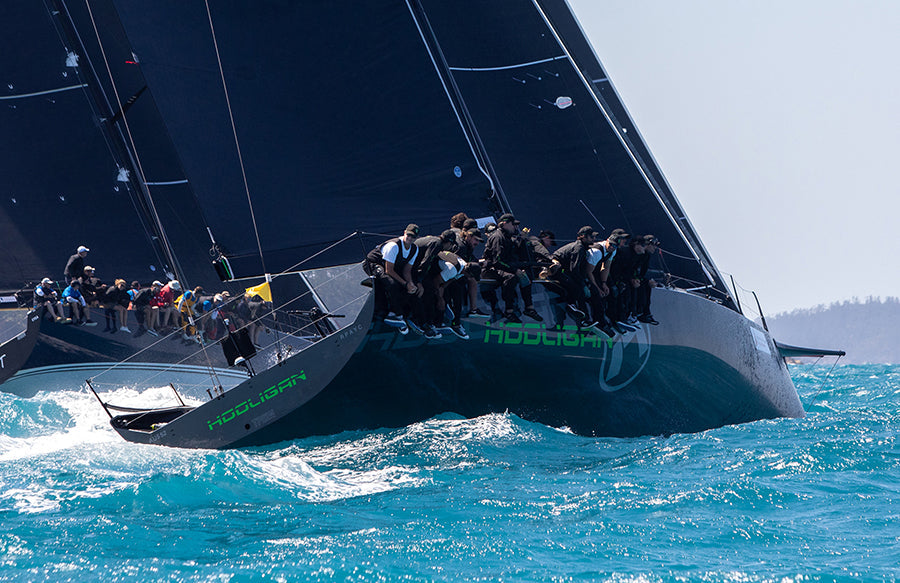
#NSVICTORYLIST: HAMILTON ISLAND RACE WEEK
#NSVICTORYLIST: HAMILTON ISLAND RACE WEEK 2019
Sun, Wind and Wins at Australia’s Largest Offshore Keelboat Regatta
All Photos 📸 Crosbie Lorimer/ Bow Caddy Media
Hamilton Island Race Week just completed its second-largest event in the race’s history, and both conditions and results were a sailor’s dream. 235 boats enjoyed several days of 25+ knots, and the race committee delivered a huge variety of courses over the six-day event. Our local team of certified service experts were kept busy all week, with over 100 sails repaired during the regatta.
North clients controlled the scoreboard of this multi-class regatta, particularity in IRC where all classes were won with full North inventories. Marcus Blackmore’s TP52 Hooligan with North expert Rob Greenhalgh onboard also won boat of the week after their IRC 1 class victory.
Wild Oats X was the winner in the Gunboat Trophy for the boat who collected the most line honors during the week.
📸 Crosbie Lorimer/ Bow Caddy Media
Racing within the five PHS classes was close. John and Kim Clinton’s Holy Cow won PHS Yellow. And speaking of close, Holy Cow’s new gennaker was finished the day before the regatta and hand-delivered to Hamilton Island by Australian sales manager Alby Pratt. That’s North Sails support at its best!
In the PHS pink Robert Green and the crew on Dream where the winners in a tight contest over Greg Glesson aboard Virago II with both boats using 3Di Endurance sails.
North Sails multihull expert Ben Kelly was sailing on the Extreme40 Boatworks and says Hamilton Island Race week was some of the best multihull sailing he’s seen in Australia. “We had extreme conditions that push our limits. Karl Kwok on Beau Geste showed the power of his Mod 70 and regularly hit 40 knots. The local Extreme 40 class is looking strong, and we’re hoping to see more multis on the line next year.”
📸 Crosbie Lorimer/ Bow Caddy Media
📸 Crosbie Lorimer/ Bow Caddy Media
📸 Crosbie Lorimer/ Bow Caddy Media
READ MORE
READ MORE
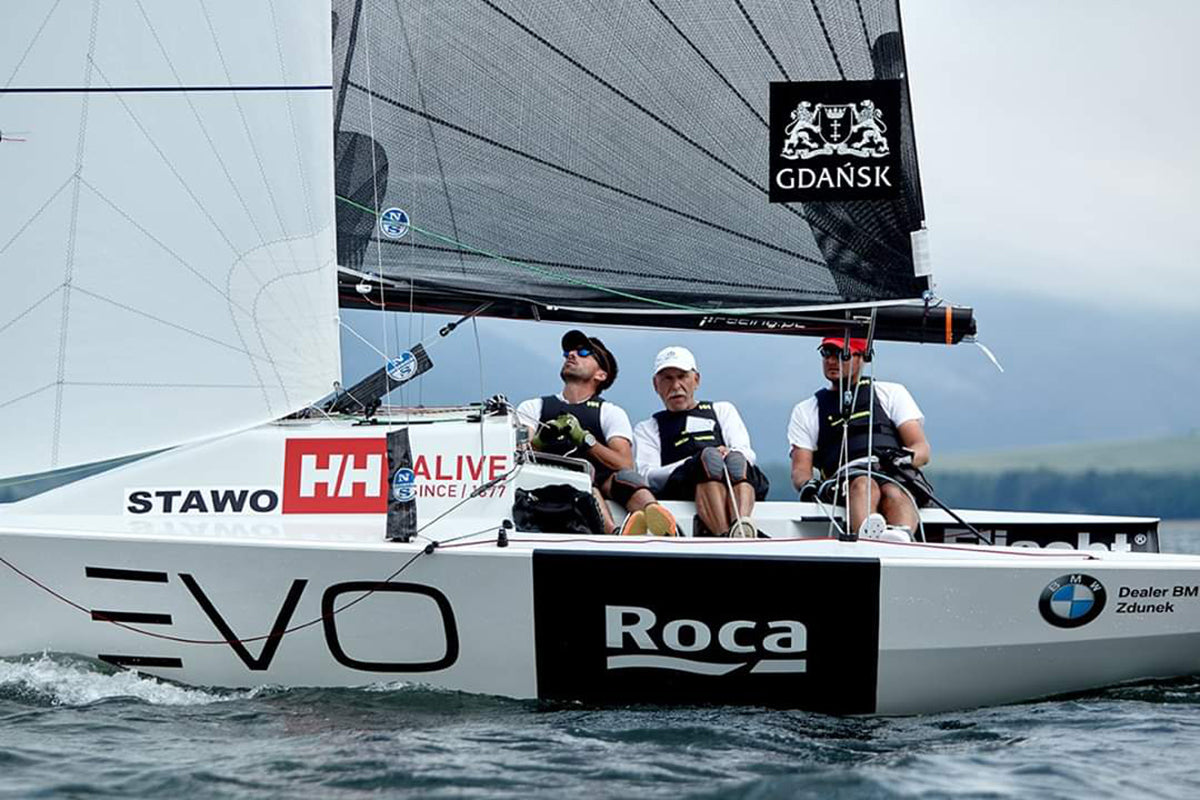
PIOTR TARNACKI WINS MICRO WORLD CHAMPIONSHIP
PIOTR TARNACKI WINS MICRO WORLDS
Eight-Nation Battle In Slovakia In Super Light Conditions
Thirty-six crews from eight nations battled it out at the Worlds in Slovakia, hosted by Marina Liptov. With light wind conditions, the fleet could only complete five out of the fifteen planned races. Scoring 1,4,1,1,1 results POL 77, with Piotr Tarnacki at the helm, secured the Championship title – their 3rd World Champion title in a row, and 9th Micro Class World championship title for Piotr Tarnacki. Superb performance was also shown by second place POL 290 helmed by Marcin Celmerowski with 2,6,2,2,2 places. Special mention too for POL 15, who could only sail with a 2 person crew – Piotr Kowalewski and Rafał Trzciński, winning the Racer Division with a massive 23 point advantage. Maciej Grodzki took the Bronze medal in the Racer division on POL 80.
North-Powered Boats:
1. POL 77 Piotr Tarnacki
2. POL 290 Marcin Celmerowski
4. RUS 174 Arkadiy Kistanov
5.POL 88 Maciej Twarowski
Racer Divison :
1. POL 15 Piotr Kowalewski
3. POL 80 Maciej Grodzki
North Sails powered teams used the new Super Light SS-1-0,5 Spinnaker and improved for 2019 Jib JK-1L with the MK-1 Mainsail.
Learn more about our fast designs for the Micro class.
READ MORE
READ MORE
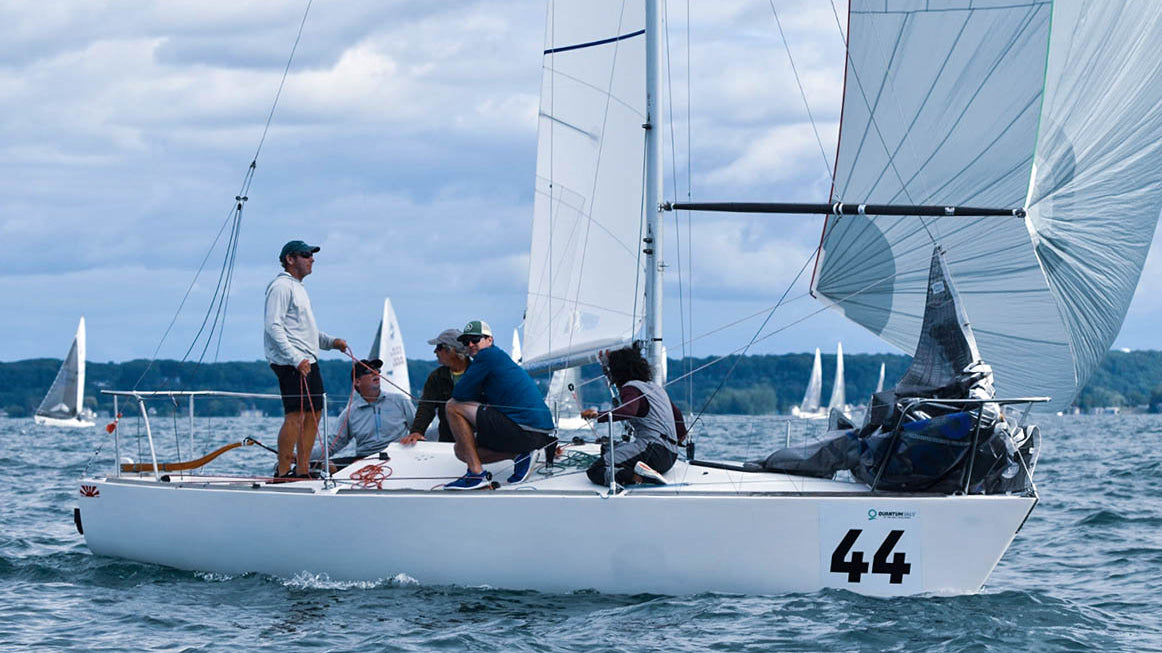
PODIUM SWEEP AT J/24 NATIONALS
PODIUM SWEEP AT J/24 NATIONALS
Will Welles’ Buckaroo Saddles-Up To Snatch The 2019 Title
© Chris Howell
Rochester Yacht Club hosted the J/24 Nationals on the beautiful waters of Lake Ontario, with 48-boats in attendance. North Sails clients had the upper hand on the competition, bringing their best game to the race course to take the fleet by storm with a full podium sweep. Congratulations to North Sails Will Bomar on team Bangor Packet for taking third overall, 2018 National Champion Robby Brown and team Angel Of Harlem for their second place finish, and first overall, now five-time National Champion, North Sails Will Welles and his power-house team of Chris and Monica Morgan, Jeff Linton, and Erik Rexford on Buckaroo.
The weekend kicked off on Thursday with an official practice race with winds out of the WNW at 15 knots and 2-3 foot seas, which was a great way to warm up. The practice race however was completely different conditions than what competitors would experience for racing on Friday and Saturday. On the final day, a strong thermal filled in later in the morning from the East at around 15 knots. Staying in phase became even more valuable since there was pressure across the course. 2019 National Champion Will Welles shared some of his insights on how his team, from start to finish, put together a championship-winning regatta.
“Having a good team that works well together is the key!”
“First of all, it was great to be back in the boat with this team, we have a lot of fun on and off the water. I’ve been pretty lucky to sail on a few great teams like this one. Having a good team that works well together is the key! We focused on getting off the line and being able to sail in good lanes from the start so that we could place the boat in the pressure both upwind and downwind. Keeping the boat at maximum speed was very important. The first two days were pretty light with short steep chop so pinching upwind was not an option and the downwinds were even harder, if you sailed to low for too long and hit the back of a wave you just stopped. We found the key for optimum downwind speed was to focus on the biggest lanes we could to keep the bow up a touch more than normal and keep our speed on and the boat stable. We worked really hard to just stay in the pressure the best we could, our tactician Jeff Linton did a really good job at that!”
Extremely tight racing in the top 10, with Will Welles (bow 44) finishing 1st Place, John Mollicone (bow 52) finishing 5th Place, and Robby Brown (Bow 22) finishing 2nd overall. © Chris Howell
North Sails Mike Ingham on Nautalytics placed seventh overall, and provided his take on local knowledge prior to the regatta, which gave perspective as to what sailors could expect with the challenging conditions. Although there was a concept for ‘typical’ shift trends, Rochester, also known as ‘left-chester’ was still very unpredictable, and often presented irregular patterns that were not always easy to read.
© Chris Howell
Day one and two were similar, with trending wind directions from the NNW to ENE, with roughly 5-7 knots giving the left side of the race course the upper hand the majority of the time. The right side did pay off every now and then, but it depended on when you went right and ideally, you could do it and stay in phase to connect back with the left. The top women’s team, Sea Bags Sailing Team with skipper Erica Beck Spencer had a great regatta result, finishing 13th overall. “The biggest part of each race for us was the start,” said tactician Hillary Noble. “We had to get off the line, and we had to be at full speed. Prior to the gun, we would practice our approaches to the line. Knowing how long it would take to get up to full speed , allowed us to figure out what time we should make our final approach. A few times there was a righty at the start, which made it very tempting to work the right side of the course, but we found it safer to play the middle towards the bottom then connect to the left side.” The Sea Bags Women’s Sailing Team purchased new sails just prior to the event, and expressed how much of a difference it made in their overall boat speed.
“Our sails were so fast. There were times where it felt like we were shot out of a cannon!” – Jessica Harris, bowman
© Chris Howell
North Sails Paul Abdullah trimmed for John Mollicone and North expert Tim Healy was the tactician on team Helly Hansen, who placed 5th overall. “It was a great weekend for Helly Hansen,” said Paul. “The conditions were extremely difficult on Friday and Saturday, but we were able to post consistent scores due to having good communication and boat speed. Trimming the genoa was non-stop upwind, and being sure to ease the sheet to keep the boat accelerating through the chop was very important. We wouldn’t try to point the boat upwind until we had good flow over the keel so the foils could work. Downwind was even more difficult, so we pretty much sailed with the pole forward to maintain any sense of boat speed.”
Skipper of Bangor Packet, North Sails Will Bomar had some great takeaways to share. “The biggest key to a good result was keeping the boat moving by having the crew weight low, keeping the tales on the genoa streaming, and not chasing every lift, which was normally just increases in pressure. Not using the tiller to steer was also great to maintain speed. We used our body weight to steer the boat and manage our transitions. On Sunday when the thermal built to 15 knots, rig tune was the key to having a good result. Being able to keep the boat flat while sailing up wind in the pressure worked well for us.”
North Sails Austin Powers also had some great takeaways from the regatta, serving as tactician for Will Bomar on Bangor Packet. “The key to sailing in the light and lumpy conditions were to find bigger lanes. The bigger lanes were especially important to leeward to give Will the room to steer through the waves, and maintain speed. Rochester lived up to the billing for most of the event with the left side generally winning out, but Sunday saw a much squarer course with boats coming off of both the left and the right with success. After debriefing with the team we thought that our boat speed came from constant weight adjustment as the breeze came in and out. Upwind the crew focused on weight placement shifting from “dogs in the house” to full hiking and everything in between.”
Bangor Packet, skippered by North Sails Will Bomar, raced to third place overall © Chris Howell
North Sails Ryan Lashaway on Rumming on Empty was also fighting to get off the starting line and break free of the traffic. He commented; “Getting to the top of the fleet required clean breeze, especially on the first upwind leg. The large fleet made it critical not to get caught in traffic in the middle of the course. You had to get to an edge and go fast. In choppy, light conditions the boat was sailing it’s fastest when we had clean breeze and the freedom to change gears as the boat needed it.”
“We sailed with a full new set of North’s and felt we had speed in both choppy and flat conditions. Couldn’t be happier with how the boat and sails performed.”
The top three teams at Nationals were powered by the Fathead Mainsail, and FR-2 spinnaker. First and second place finishers used the DX-7TT genoa, and 3rd place used the SD/TH genoa.
Interested in Championship-winning sails? Check out our products and contact your local North expert today.
Congratulations to North Sails clients for finishing 1,2,3,5,7,11,13,14,15 at the 2019 US Nationals in Rochester! #NSVictoryList
Full Results
READ MORE
READ MORE
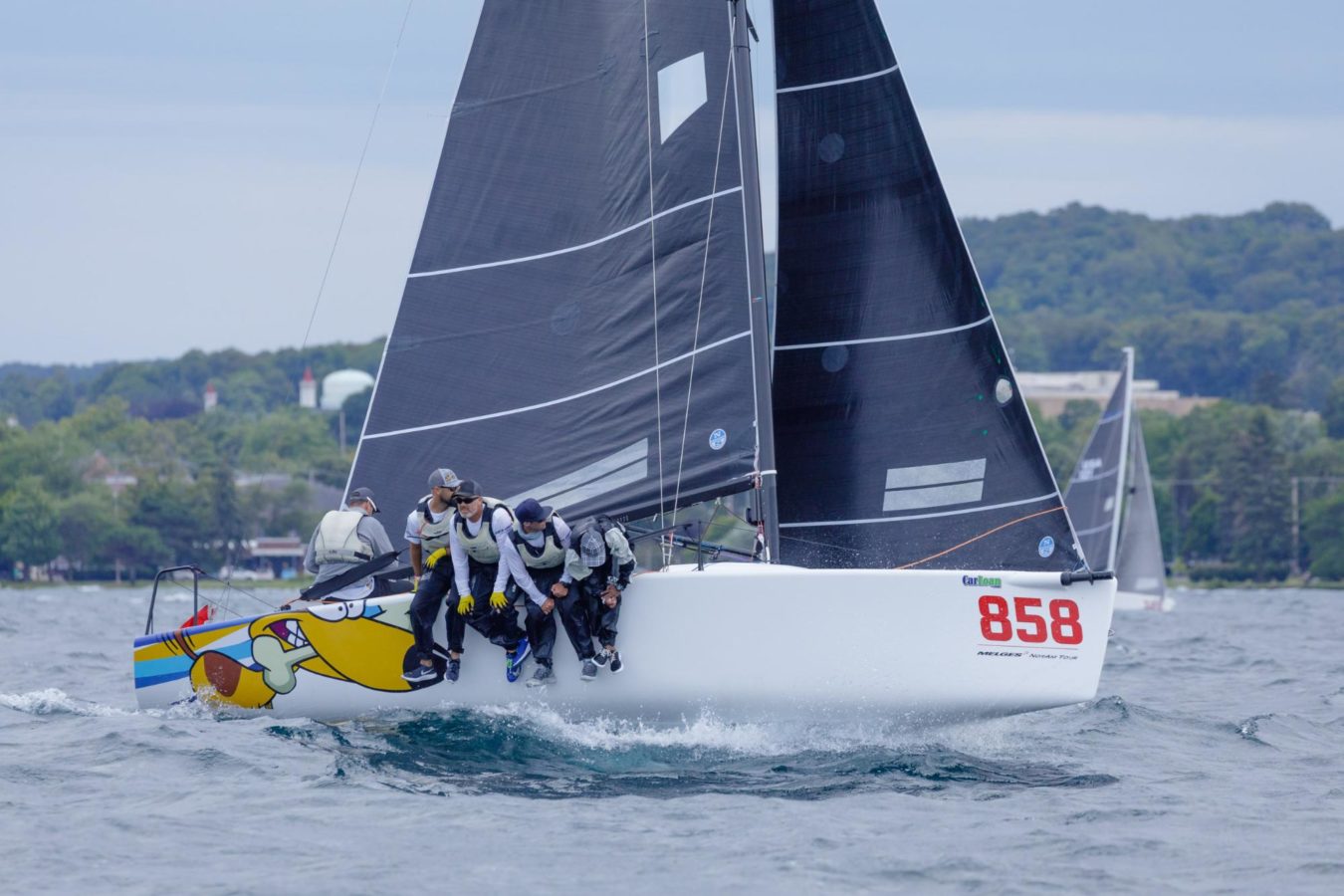
LUCKY DOG WINS MELGES 24 NORTH AMERICANS
CLIENTS WIN MELGES 24 NORTH AMERICANS
3Di Raises the Stakes in the 41-Boat Fleet
© IM4CA/©Bill Crawford,Harbor Pictures Company.
North clients took two podium spots in the Open Division at the 2019 Melges 24 North American Championship in Traverse City, Michigan. Travis Weisleder’s Lucky Dog/Gill Race Team scored only one race out of the top 4 to win the regatta by one point. Kevin Welch’s Mikey finished third.
In the Corinthian division, clients swept the podium. Fraser McMillan’s Sunnyvale won the division by 14 points and took 5th overall. In second place was Mike Dow’s Flying Toaster, and rounding out the podium was Marty Jensen’s Zig Zag.
After light air the first two days, the breeze came on stronger for the last day but continued to be quite shifty. North Sails expert John Bowden, onboard Lucky Dog, has been sailing with Travis for six years, but only one team member had sailed in Traverse City before. “We focused on sailing our own race,” he explains, adding that a great boat, great sails, and a great team proved more important that local knowledge. “Travis does a good job of surrounding himself with talented sailors, and makes sure the boat and sails will never be an excuse for failure. It all led to a great result in the end.”
© IM4CA/©Bill Crawford,Harbor Pictures Company
The team keeps the North tuning guide handy, but they also pay attention to the feel of boat and helm. “If you’re overpowered, you’re probably not tight enough.” He also explains that their 3Di sails don’t stretch like paneled sails do, so they have to be trimmed a little bit tighter. “Other than that, everything else is the same.”
The team used an Mi-1 and the new Ji-2, developed with North designers Mike Marshall and Per Andersen. “We really love them,” John says. “We were very happy with the AP-3 and J-7 paneled sails. They were certainly the standard for Melges 24’s. But there is always room for improvement. When we had the opportunity to switch to 3Di and help with the development process, we jumped at the chance. It’s nice to see all of the top teams running the 3Di sails. We have all been extremely happy with them.”
© Bill Crawford, Harbor Pictures Company
READ MORE
READ MORE
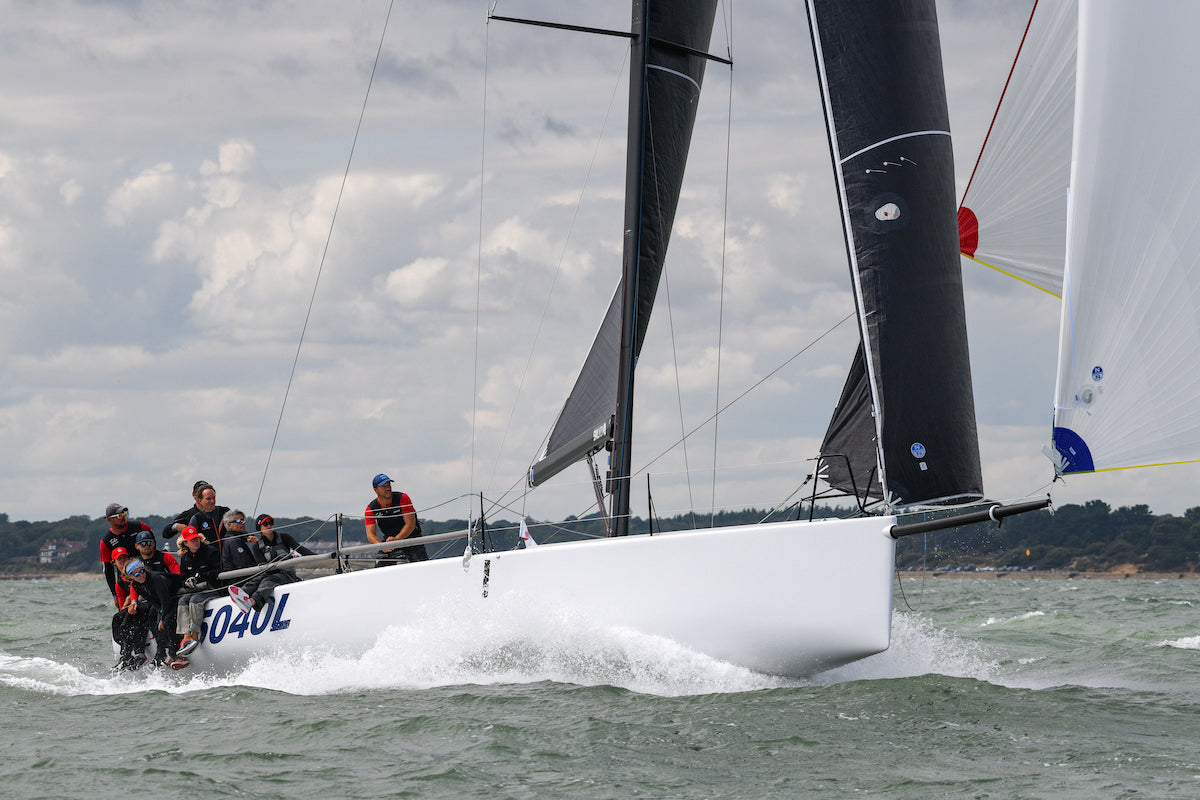
MELGES IC37 EXCELS AT COWES WEEK
MELGES IC37 EXCELS AT COWES WEEK
The First IC37 in Europe Debuts With a Win
📸 North Sails / James Tomlinson
After making one design waves in North America with a full summer of events, the first IC37 delivered to Europe won IRC class 1 at Cowes Week with conviction— Kanreki finished first in four of six races.
Such impressive IRC results from a boat originally drawn as a one design concept are a nice by-product of the tight collaboration between North Sails/Southern Spars, Melges, and boat designer Mark Mills.
North Sails expert Pete Redmond was onboard for Cowes Week and experienced firsthand how this fun, modern 37-foot race boat performed under IRC. “The IC37 had the advantage of planing speeds, especially in breeze where boat lengths can be gained quickly,” Pete explained. He was also impressed by the IRC-adapted sail inventory. “The sails fit perfectly out of the bag. “We used the standard one-design tuning and our IRC inventory included a slighter smaller mainsail, full-sized jibs that were purpose-built for Cowes Week, and a North Helix Code Sail, which we easily flew off the bowsprit with no modifications needed. Finishing off the inventory we had two A sails for lighter and heavier breezes.”
📸 North Sails / James Tomlinson
IRC is very popular in the UK. Pete feels the IC37 is a great contender, as it is suited for a wide range of sailing styles. “The boat is set up very simply, and everything runs well. Anyone will be able to get this boat around the corners, and switching between modes isn’t hard either.”
Kanreki’s crew, a mix of family and friends, was able to get the boat up to speed quickly, even though they hadn’t actually sailed the boat together before the first race. “They found racing the IC37 to be a lot of fun,” Pete added, “and that’s the only reason they wanted to sail Cowes Week – to have fun.”
Sam Pearson, class leader of the IC37 for the UK, was also impressed by Kanreki’s performance and optimistic about the future. “Although it was never our intention to focus on IRC when launching this new one design circuit, we knew we had to keep it in the back of our minds. If we wanted to see one design flourish, the design had to appeal to a broader audience. With these wins straight off the bat, the IC37 is 100% the weapon of choice to re-energize big boat one design racing in the UK.”
📸 North Sails / James Tomlinson
READ MORE
READ MORE
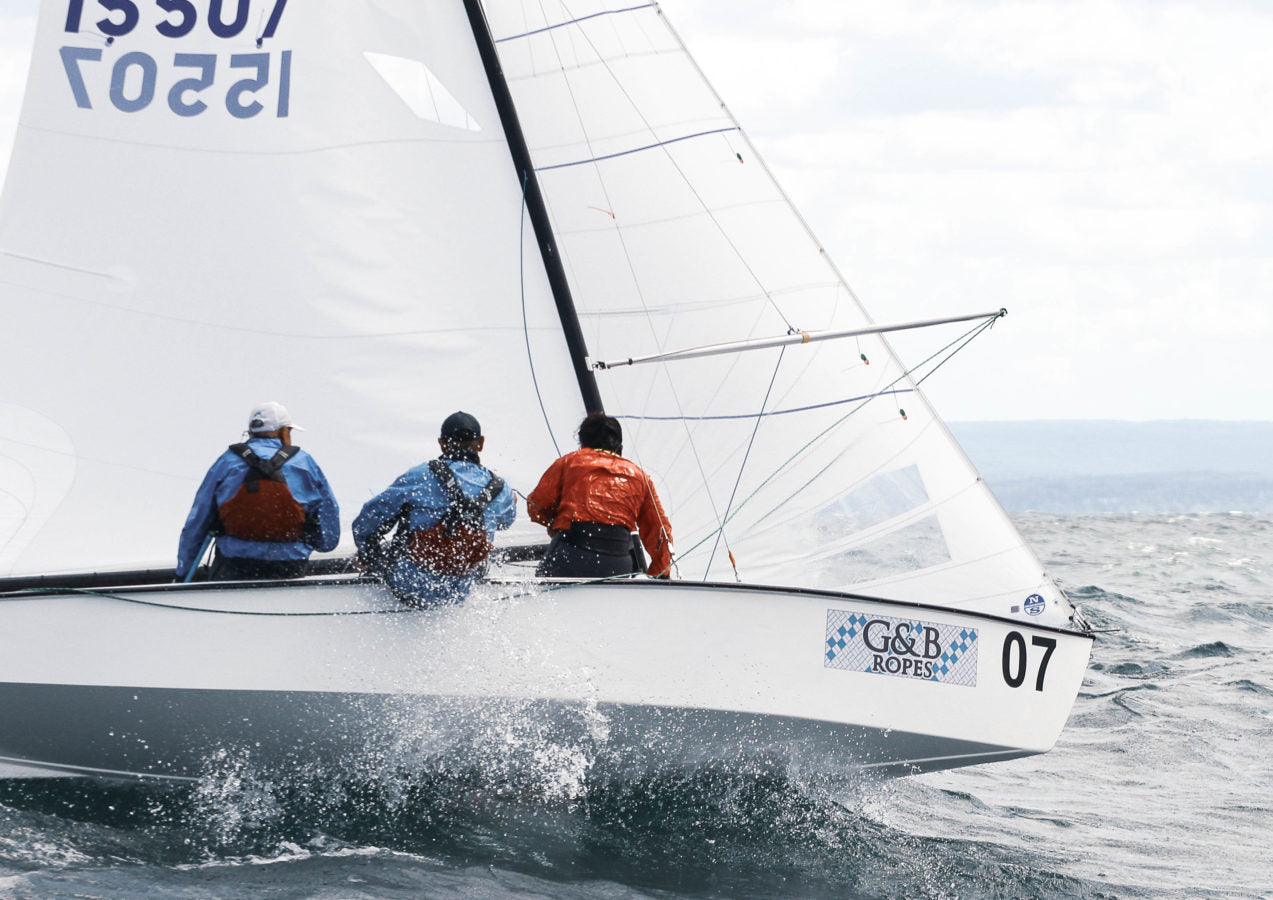
LIGHTNING LEGEND WINS 6TH NORTH AMERICAN TITLE
LIGHTNING LEGEND WINS 6th NORTH AMERICAN TITLE
Ched Proctor Bests a 72-Boat Fleet
2019 Lightning NA champions Ched Proctor, Chris Morgan, and Monica Morgan 📸 Art Petrosemolo nauticalphotography.us
According to the dictionary, “legend” is a person or thing that inspires. According to sailors, it describes a sailor who has performed and contributed to the point of being incomparable. After winning his sixth Lightning North American Championship last week, Ched Proctor has cemented his place as a “legend” under both definitions. With teammates Monica Morgan and Sam Blouin, he bested a fleet of 72 boats at the Buffalo Canoe Club in Crystal Beach, ONT, a week after winning the Masters North Americans with Chris and Monica Morgan.
Ched won his first North Americans in 1993, when he was in his 40s. Since then he’s won two International Masters Championships, 2 Canadian Opens, 7 Southern Circuits, and 4 Midwinters—along with dozens of wins in other one design classes.
Womens, Masters, Juniors NAs
The 11 day gathering brought teams from around the country. First up was the Women’s, Masters, and Junior Championships. On day one, a strong westerly sidelined all the fleets, so many teams headed to Niagara Falls. Day two’s fresh breeze allowed each fleet to get in two races. Day three saw lighter breezes but still in the mid-teens; Masters and Women’s teams each got in two races, while the Juniors snuck in a third before the deadline.
Women’s NAs champions: Deborah Probst, Monica Jones, and daughter Allie Jones 📸 Art Petrosemolo nauticalphotography.us
10 Women’s teams came from as far away as South Carolina and Florida. Regatta Chair Debbie Probst, with Monica and Allie Jones, bested Boat Grant recipient Christine Maloney with crew Grace Woodcock and Anna Flaherty by two points. Joy MacDonald grabbed the final podium spot with Kathryn Maloney and her sister Julieanne, a clean sweep for the BCC teams.
Doug Wake and his team (Noah Bartlett and Lars Osell) found the heavy air to their liking and won 4 of the 5 races to dominate the fleet. Parker Coluntuano/Jackie Morrison/Ben Markert had a solid last day and moved up from 6th to 2nd. Locals Robbie Robinson and brothers Gunnar and Garrett Grenauer finished third.
Meanwhile, Ched the legend won three of the four Masters races, beating 5-time World Champion Tito Gonzales, who was sailing with son Alberto and Rodrigo Zuazola, by six points. Tom Allen, the ILCA MVP, put together his NAs winning team from 1989 (!) of John Humphrey and Bill Pictor, and he used their “maturity” to finish just one point behind Tito’s team.
Juniors NAs champions Douglas Wake, Noah Bartelt, and Lars Osell 📸 Art Petrosemolo nauticalphotography.us
North American Championships
The NAs started with four qualifying races over two days to determine the 34 boat Championship Division. The qualifying races are often called the toughest regatta of the year, as your chances to be the North American Champion rest upon sailing well enough to “make the cut.” After the final race Tuesday, the line was drawn right below John Birkett and his team from Ecuador, with 25 points earning them the Tom Fallon Trophy as “the last one in.”
An easterly breeze dominated the first day of the championship series. The locals said this was the most unpredictable and challenging breeze direction, and they were certainly right!! The three race winners were Adam MacDonald, David Starck and Tim Scanlon, and most teams had scores that looked like they belonged on a Bingo card. David Starck took the overall lead with a 2,1,18, while Ched and team opened the series with a 15, 11, 3.
The next morning’s breezes mimicking the previous day and it was another tricky day to be consistent. Jim Barnash won the first race of the day. Bob Martin, after a 25 the previous day, hit the consistency button with a 4,4,5,4 to bring his team into the hunt. Overnight leader David Starck opened the day with another 2nd, but a 15 in the second race allowed Ched’s more consistent 3,1 to take over the lead.
Friday dawned as predicted: a beautiful sunny day with not a whisper of wind. Once the RC cancelled racing for the day, Ched, Monica and Sam were the 2019 North American Champions. Regatta Chair David Starck, with Jody Lutz and Dylan Farrell, finished 5 points back. Bob Martin, with Steve Hunt and Diego Escobar, won the “regatta of the final 4 races,” but without a discard they had to settle for 3rd overall.
Presidents Cup
The Presidents Cup became the “Allen Family Cup” this year as Jim Allen, with daughter Abby and sister Jane, bested older brother Tom Allen IV, with his daughter Shelby and Jim’s son Tyler. Third was Sjoerd-Jan Vanderhorst with his wife Kathy and Laurie Dieball guiding him around the course.
Lightning experts Skip Dieball and Brian Hayes running morning tips
READ MORE
READ MORE
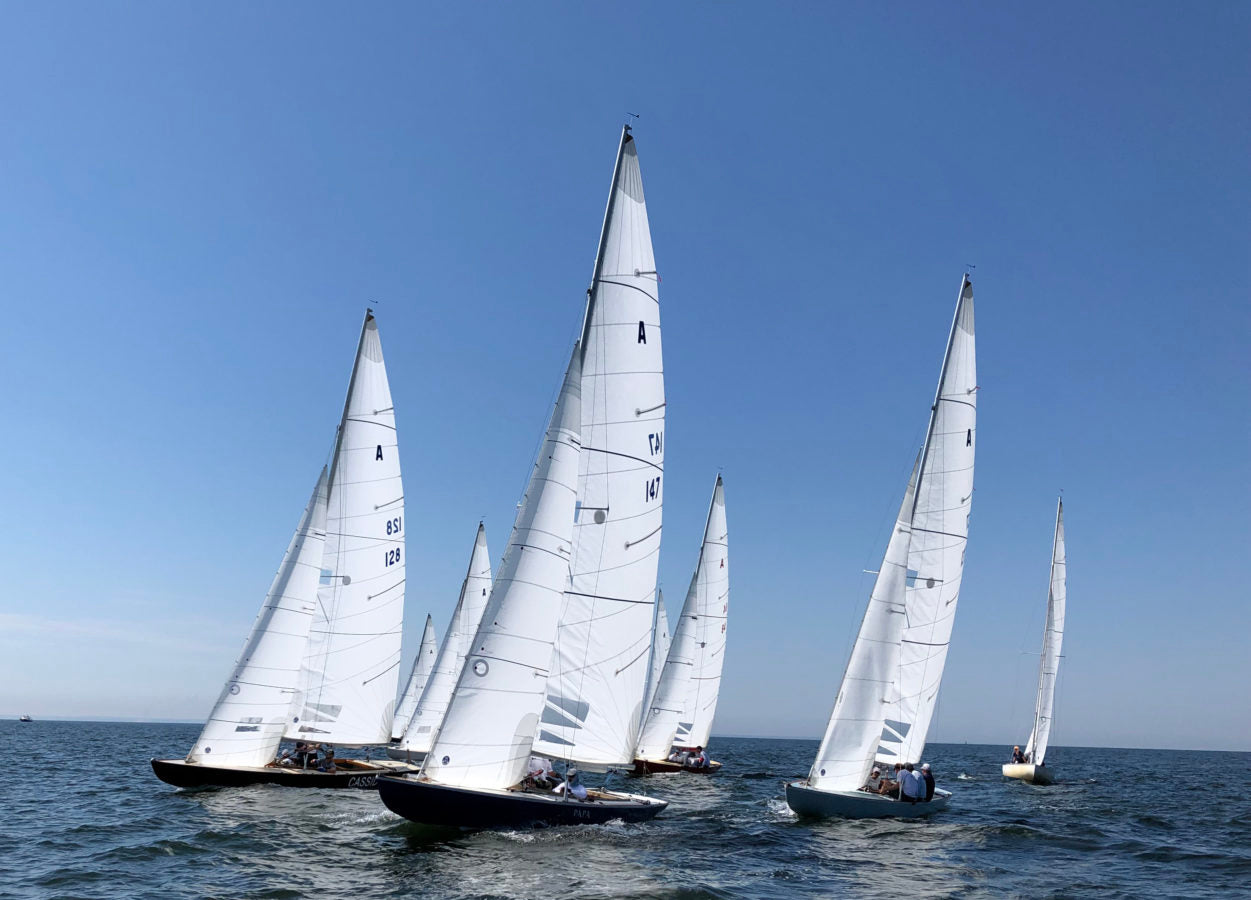
ATLANTIC NATIONALS TAKEAWAYS
ATLANTIC NATIONALS TAKEAWAYS
Experts Tim Healy and Rodrigo Meireles Share Key Tips
📸 Cedar Point Yacht Club
The 2019 Atlantic Nationals took place at Cedar Point Yacht Club in Connecticut with twenty-seven teams attending the three day regatta. 6-12 knots from east to southeast with moderate to heavy chop made for intense competition in these classic boats, followed by great hospitality ashore.
After the first day of racing, North Sails expert Tim Healy led a debrief with Dave Peck, Bill Healy, Steve Benjamin and Morgan Trubovich on the panel (representing skippers, trimmers and tacticians). The crowd had a lot of good questions and sailors found the panel very helpful.
David Peck from Niantic, CT won the regatta convincingly, posting only seven points after six races and a drop. Steven Benjamin finished second with 14 points and Rodrigo Meireles finished third with 19 points. We are happy to report that the top twenty teams used North Sails.
The top five boats all used the FRC mainsail, AP Jib and V-2 spinnaker.
Tim and Rodrigo’s Takeaways
JIB SETUP
Set the height of the jib so that the foot overlaps on the deck by 1″ max. In light air, move it down as low as ⅛”. This will prove a good deck seal to trap the wind from going under the sail, which will maximize its power.
Never let the upper jib leech tell tale stall. Find max trim by trimming so it just stalls, then easing just enough so it is flowing 100% of the time.
CHECK PREBEND
At the base setting for your rig, it should be about 1.75-2″ for speed in a range of conditions. (The fastest boats at CPYC use 2.5-2.75”, as they sail mostly in 5-8 knots.)
DOWNWIND TIP
Work hard to separate the spinnaker from the mainsail. The main is so big that it easily shadows the spinnaker. Be careful not to pull the guy back too far or set pole too low. You can even try easing the halyard up to 6″.
HEEL ANGLE
Try to keep the upwind heel angle as constant as possible. Crew weight adjustment is key.
Full results
📸 Cedar Point Yacht Club
Rodrigo Meireles and team Elan sailing fast. 📸 Cedar Point Yacht Club
READ MORE
READ MORE

COUNTDOWN TO ROLEX TP52 WORLDS
COUNTDOWN TO ROLEX TP52 WORLDS
North Sails Designer Mickey Ickert’s Insight on the Next Big Event
📸 52 Super Series / Martinez Studio
The 2019 52 Super Series has been one of the most competitive to date. At T-minus one week to the Worlds, there are just 17 points separating first from fifth after three of five events, and not one team is clearly running away with the big prize right now. Nine of the eleven boats competing are powered by North sails, including Azzurra who is currently at the top of the leaderboard. We’re excited to see how this final event unfolds.
Mickey Ickert is a veteran North Sails designer who specializes in Grand Prix sail design with a specific focus on TP52 development. We sat down with Mickey to get his take on who’s who, how the fleet is sailing, and where we should place our bets next week.
What are your crystal ball predictions for the Worlds?
Palma is very well known and was the location of the first pre-season event. The familiarity with Palma will require teams to focus on subtle differences and fine-tuning. The fleet is so close this year that any of the top five boats could win the 2019 Worlds. The one wildcard could be Sled, who had an impressive pre-season showing at Palma Vela in May.
How do you see the North sails stacking up for the expected conditions in Palma?
Speed is king for getting off the start line to the first shift, and our 2019 3Di structures are proving to have an edge. Typical Palma conditions will call for using the light main with the light-medium jib. We’ve been focusing on pushing the sail weight down to maximize the advantages of 3Di against string sails, and maximizing the crossovers between the light and AP mains. Jib-wise, the new Raw 890 light-medium jib should excel through all the puffs and lulls.
📸 52 Super Series / Martinez Studio
People, product and practice are all factors that play into a successful season. What do you see as the game changers in 2019?
People are a real game-changer this level of sailing. Provezza’s new afterguard gelled well and sailed the most pre-season, giving them confidence. Bronenosec is winning races with the addition of Sîme Fantela as the strategist. My observation is the younger sailors in the fleet are pushing the boats harder, racing is more dynamic, reaction times are faster, and sail changes are happening more quickly.
Product-wise, I am expecting the newly developed 3Di Raw 890 has given our teams more sail card options through the Worlds and then heading into the final event of the season. So far it’s hitting our design targets; better shape-holding, and cleaner aesthetics.
What’s 2020 going to be like?
The new venues have already been announced and we know South Africa will be more breeze. We’ll fully review that plan at our global design meeting in November, but for now, all eyes are focused on the 2019 Worlds—and after that, the final Super Series event in Porto Cervo.
📸 52 Super Series / Martinez Studio
READ MORE
READ MORE
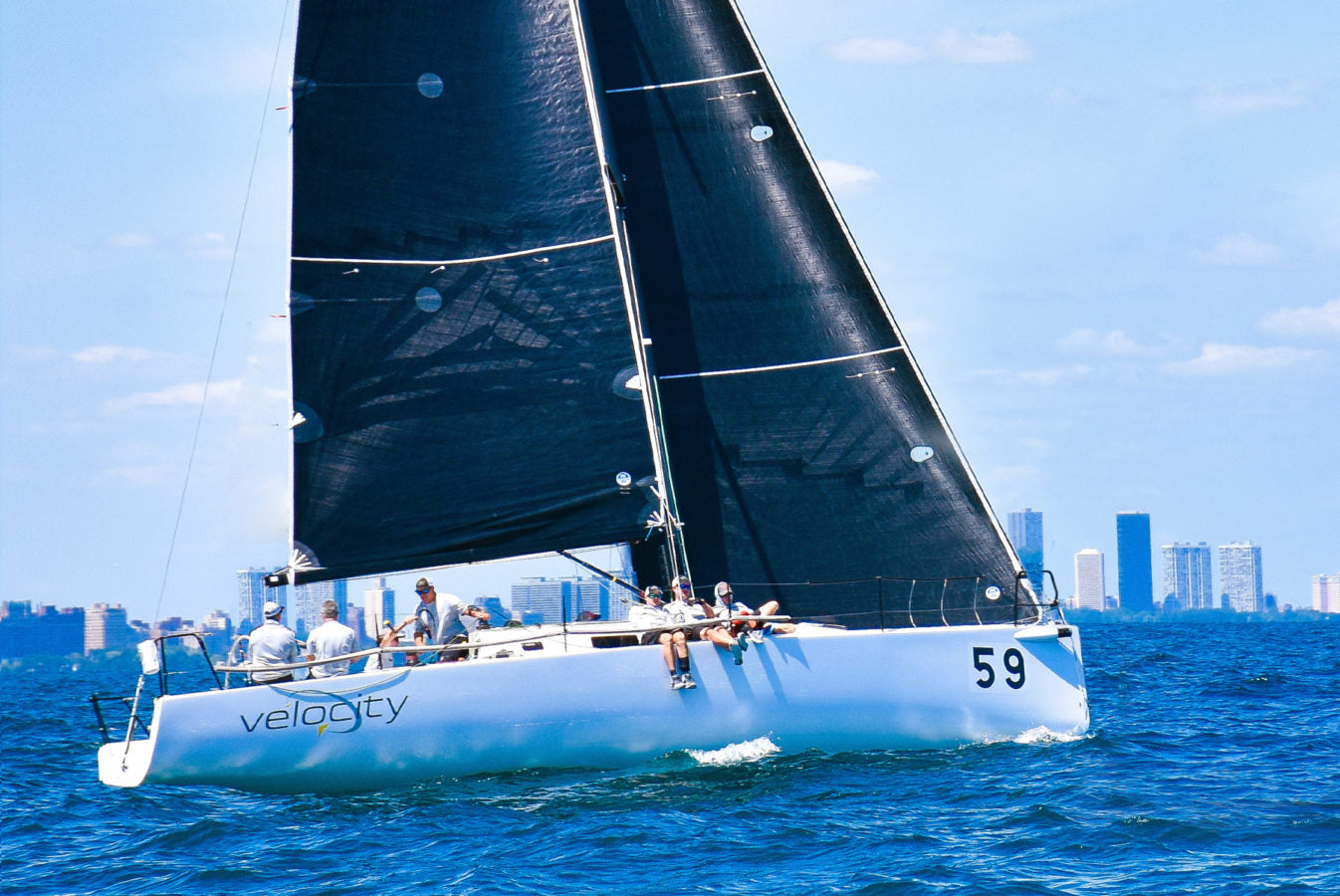
SPEED READING: J/111 PRE-WORLDS
SPEED READING: J/111 PRE-WORLDS
Preparing For The Grand Finale
Tough racing conditions at the Verve Cup / J/111 Pre worlds © Sara Proctor
North Experts Seadon Wijsen on Skeleton Key and Allan Terhune on Velocity sailed the Verve Cup, which was also the J/111 Pre-Worlds. After three days and eight races, both teams had plenty of takeaway lessons. Here’s what they had to share.
“The racing conditions were typical for Chicago,” says Seadon. “Light and lumpy, and extremely challenging at times. Our light air speed and technique was top priority.”
Allan agrees. “There were bands of wind that came down the course, forcing you to connect the dots and stay in the pressure as long as possible. Light air boat speed was definitely a big factor, but it soon became apparent to us that getting clean starts were going to be the key to this event.”
Lessons learned from Pre-Worlds
The fleet got eight races in, a chance for both boats to experiment with settings in the search for better light air speed. Seadon’s team played with jib halyard, jib leads, and in-haulers to help transition through the wind ranges. They also tried a looser rig. “It helped our accelerations, but didn’t make much of a difference in our straight-line speed. Moving the jib lead forward helped, so maybe we were just carrying the lead too far aft in general before.”
Allan says Seadon was able to help his team with an off-the-boat observation. “We learned from Seadon that we had too much inhauler on in the light stuff. I had this inclination that if the crew was on the rail hiking, we’d need to pull the inhauler in all the way. What it actually did was close the slot and create stall, which was easy to do in the light air. Onboard we couldn’t see it, but Seadon noticed from off the boat. Too much inhaul was deadly.”
Both sailors agree that the most important thing for J/111 boat speed is keeping the boat in the right mode. You don’t want to pinch, especially if there is chop.
“You need to keep an open mind on every leg. It’s easy to doubt yourself, so you can’t focus too much on the fleet, rather sail your own race and focus on what you think will have the best outcome.”
In the light air, it was easy to over-trim the sails. “That was slow, and we had to be super sensitive to this,” said Seadon. Allan added that course corrections had to be very subtle as well. “When we felt slow, we’d put the bow down to help build speed, but if we went too far, this caused us to stall.”
Racing in Chicago, Seadon says, it’s hard to find any consistent pattern to the wind. “You need to keep an open mind on every leg. It’s easy to doubt yourself, so you can’t focus too much on the fleet, rather sail your own race and focus on what you think will have the best outcome.” Allan has sailed out of Monroe Harbor in many different classes, and he agrees. “It is very easy to think that it will always do this, or it will be this way—and it most definitely does the opposite.”
© Sara Proctor
What to work on
Seadon has been racing with Skeleton Key for four years and says his team’s consistency is what’s led to their success. “Our rig tune, sail selections, and techniques through the wind ranges are all the same as they usually are. We don’t try to change much last minute, and we usually improve each time we sail.”
In the short gap between the pre-Worlds and Worlds, they have a list of things to work on. “We need to improve our leeward mark roundings. We can do that by discussing the planned maneuver, and weight placement. We are also going to look at different batten combinations for light air and windier conditions.
“The key for us is to try to improve the things we are lacking, but also focus on what works; we don’t need to reinvent the wheel.”
On Velocity, Allan says they will primarily be looking at their acceleration off the starting line, the leeward mark, and speed out of tacks.”
Looking ahead to the Worlds, Seadon admits Chicago is one of the toughest places to race—and they face some great competition. “We will have to be mentally tougher. I think we will be better in the lighter air conditions this time around. We are hoping to have a nice range of different conditions throughout the regatta, and maybe even some breeze.”
Both teams plan to sail as much as they can, and want to line up with as many boats as possible. As Allan puts it, “It’s about getting as much data as you can before the regatta starts.”
Skeleton Key initiating a jibe in tough light air conditions © Sara Proctor / Verve Cup 2019
Have questions about tuning? Check out our J/111 Tuning Guide
Click here to view all of our products J/111 inventory
READ MORE
READ MORE
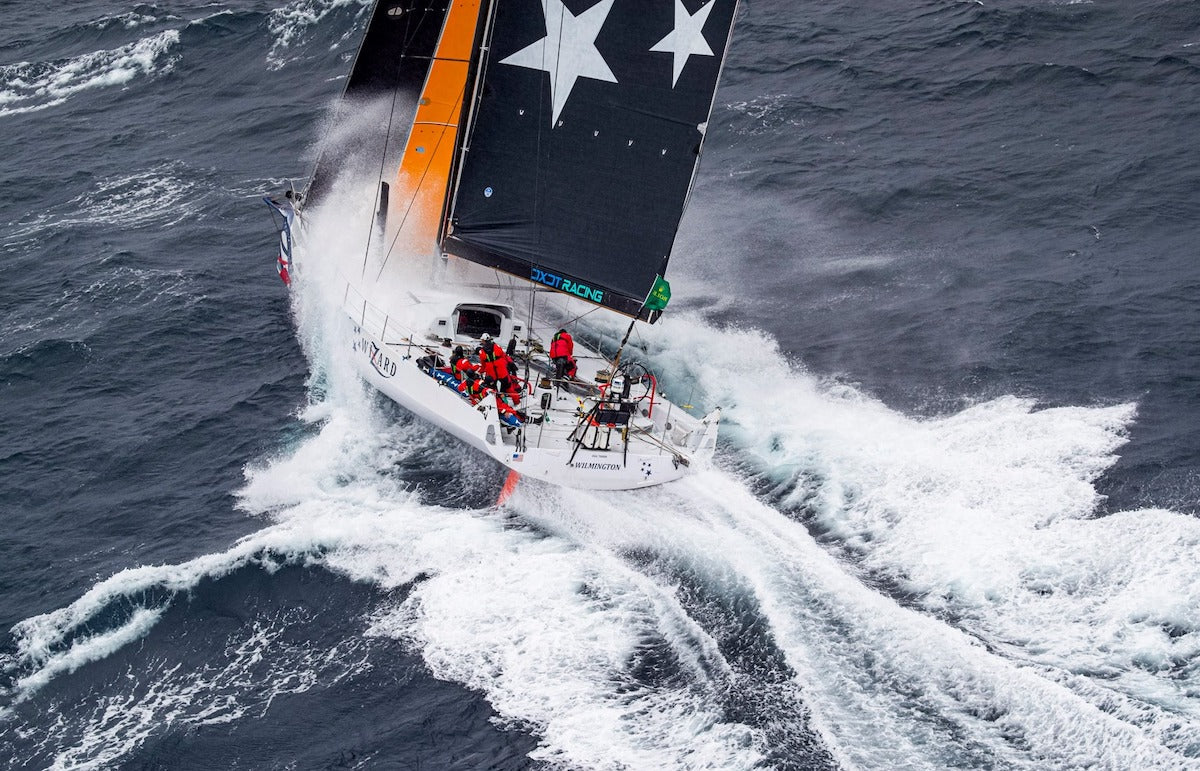
WIZARD'S WINNING RECIPE
WIZARD’S WINNING RECIPE
A Methodical Approach to Setup, Schedule, and Sail Choices
Peter and David Askew are on a hot streak with their VO70 Wizard in this year’s Atlantic Ocean Racing Series. They’ve won three of the five events in the series so far; RORC Caribbean 600, 2019 Transatlantic Race, and Rolex Fastnet Race. Their chance to complete the season with a sweep comes on October 19th, when the Rolex Middle Sea Race starts.
Winning ocean races is why the brothers purchased Wizard (the VO70 that won the 2011-12 Volvo Ocean Race 2011-12, as Groupama) in 2017. As Peter puts it, “Our entire program has been deliberately focused on winning.” That program started with a core team that raced a custom-built Reichel/Pugh 74 on the Great Lakes and won the Transpac Barn Door in 2013. Once the brothers set their sights on the Transatlantic Race, though, they knew they needed a canting keeler. Groupama, then sailing as Giacomo, was for sale in Sydney, Australia after winning overall honors in the 2016 Sydney Hobart Race. “Chris Larson from North Sails helped us put a group together to get the boat to the starting line of the 2017 Sydney Hobart Race, where we won our class,” Peter explains. “We then brought the boat back to the USA, did the 2018 Newport Bermuda Race, and won the Gibbs Hill Lighthouse Division.”
Next, boat captain Chris Maxted took apart and overhauled all the major components and systems, while the sailing team returned to the Great Lakes for another successful season on the R/P 74. Once the Volvo Ocean Race 2017-18 concluded, Charlie Enright and Phil Harmer rejoined the team. “It was at that point,” Peter explains, “that we decided to go after the AORS events, starting with the Caribbean 600 in February 2019. David and I knew full well we had a weapon with Wizard, and the right people in place.”
A combination of ocean-ready boat and crew, plus all their planning and preparation, is why they’ve posted such an impressive string of victories, he adds. “You have to go pretty far back in sailing history to find another boat that has been as successful as this particular Volvo 70. Maybe Dorade, but in the last 30 years, I don’t recall a boat being this dominant in the world’s most challenging ocean races. Over its life this won the Volvo Ocean Race as Groupama, the Sydney Hobart Race as Giacomo, and Newport-Bermuda Race, Caribbean 600, Transatlantic and Fastnet with our Wizard team. It’s an amazing run and the next challenge is the Middle Sea Race.”
“Are we pleasantly surprised by the string of victories?” Peter asks. “Of course, but we never set out to be second or third. Our goal of having a competitive program has been very deliberate. David and I are competitive guys, and we always play to win.”
Charlie Enright has worked closely with the Askews to methodically build a program that could handle a heavy schedule of offshore racing. “Most races are won before they even start,” Charlie reminds us. “Wizard’s off-season and pre-race approach are to leave no stone unturned and to be efficient and rational with our decision-making. Chris Maxted does an exceptional job making sure the boat is ready to race.” The experienced crew includes Will Oxley, Rob Greenhalgh, Phil Harmer, and Mitch White; Phil won the VOR on the boat, and Mitch sailed a lot of miles under the Giacomo name.
“We have good sailors on our team,” Charlie continues, “but so do most of the other boats. The important thing is that we work well together. The boat is 75% American and 25% international, which is cool and somewhat rare.” And Team Wizard is only twelve people, while other similarly sized boats might have 20 crew. “A consistent, tight-knit group is key,” Charlie says. “When that gun does go off, we feel confident that we have as good a chance to win as anybody.”
Winning still takes sailing well and some good luck, he admits, “but the results are pretty consistent over the past year, regardless of what conditions we’ve been sailing in.”
The boat had done a lot of miles by the time the Askews bought her, but Charlie says they also used a methodical approach to replacing the inventory, initially a mix of 3Di Endurance and 3Di RAW. “Some programs take delivery, look at the year in which a particular sail was built, and just start replacing things sight unseen.” Instead, the team has been replacing “about one new sail an event,” which allows for learning and conceptual changes. For example, they’re now using a whisker pole reaching with the J0, a concept they took from the VO65s. The sail’s versatility allows the team to leave some other sails behind, Charlie adds. “It can take the place of the G1 in a pinch upwind. It comes at a rating hit because of its luff length, but we only really use it in events where there’s no real VMG.”
Putting together the best sail package isn’t “voodoo,” Charlie laughs. “We just try to think logically about what we’re doing and the best sail package to get there.”
For the 2019 Fastnet, Wizard added a Helix Code Zero to power them through the light spots. “We used it to VMG downwind off of Start Point,” Charlie says, “and then used the same sail to help us upwind in the light spot east of the Scilly Islands.”
Designer Max Tringale worked on Wizard’s Code Zero. “The size target was similar to the boat’s older style cabled sail, with the goal to not reduce the area or change the sheeting location. By combining Helix with Load-Sharing Technology, we were able to design a lighter, flatter sail that works across a wider wind range.”
Over the past year, Max continues, there’s been “a tremendous amount of collaboration within the North Sails Design Team to develop our latest Helix mold shapes, allowing us to build the flattest and most efficient sail possible. The flying shapes produced, along with Load Sharing between a small luff cord and the sail itself, allows the luff of the sail to project away from the boat, instead of sagging aft and leeward like traditional cabled sails.”
Charlie confirms that the Helix sail can be carried through a wider range of conditions. “It’s lighter, and the luff is not constrained by the cable. We’re learning how to optimize adjustments, not only with the sheet and the tweaker but also with the tack line. The self-supporting sail structure for sure reduces tack load for a given flying shape.”
Charlie predicts that Wizard will see even more benefit from the Helix, once they upgrade the 2015 mast that came with the boat. “That said, we have definitely seen a performance bump by adding the Helix sail.”It’s also easier to put in the bag, and lighter to carry around.
“Peter and David like this kind of sailing because every race is different,” Charlie concludes. They’re really good about picking a goal, picking a tool, and surrounding themselves with the right people. That’s why they’ve been able to achieve such good results in the last couple of years. I’m proud of what we have accomplished—we’ve got a good thing going.”
Peter agrees, and he’s optimistic that their hard work will continue to pay off in the Rolex Middle Sea Race. “ We will approach the final AORS event as we have the others, and see where it shakes out.”
READ MORE
READ MORE
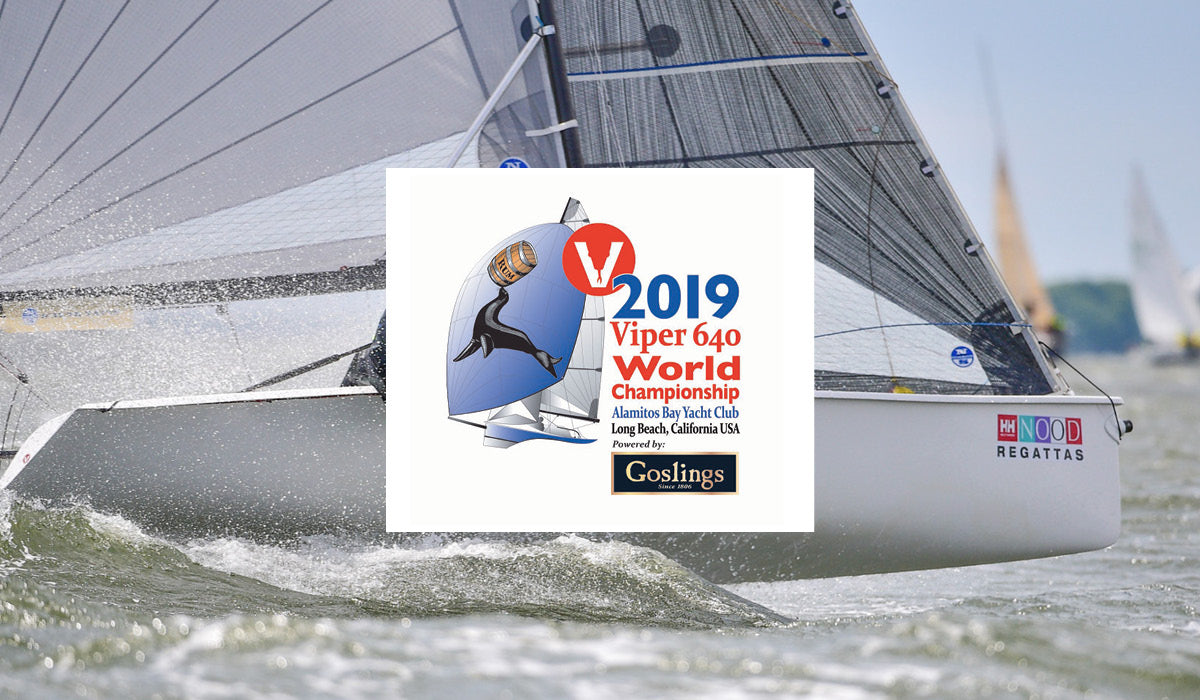
VIPER 640 WORLDS: LOCAL KNOWLEDGE BY ALEX CURTISS
LONG BEACH LOCAL KNOWLEDGE
What To Expect For The 2019 Viper 640 World Championship
Long Beach is hands down the best place to race sailboats in Southern California. With sunny skies, warm temperatures and consistent breeze, the 2019 Viper 640 Worlds should be a spectacular event. We spoke with North Sails expert and local Alex Curtiss to learn what sailors should expect when they leave the dock.
What will the breeze be like?
For the most part Southern California breeze is very predictable, but the morning marine layer will tell you a lot about what to expect on a given day. For example, if you wake up in the morning, and it is very overcast, maybe even a little hint of mist is in the air: expect lighter winds for the afternoon. If you wake up and it is a beautiful sunny day, I would imagine that it will be a typical Long Beach Day.
What is a “Typical” Long Beach day?
Essentially there are three sections to the breeze. Usually just before noon the breeze will be somewhere between 190-210 degrees. This will also mean the breeze is relatively light (5-8 knots). Then the breeze will trend to the right. A lot of times the second race is sailed in a breeze direction between 215-235 degrees, with velocity gradually picking up. Then by about 2:30 pm or 3:00 you could expect the breeze to progress further to the right (240-255 degrees). The velocity will be 15+knots and beautiful.
What are some things to look for to see the trend?
I like to pay attention to the marine layer, the clouds and the haze-line. More often than not, the cloudier it is, the more the breeze will stay to the left. The sunnier it is, the more the breeze wants to move right.
Another thing I pay attention to is the clouds inland over the mountains. If you see big towering clouds in the backdrop of the race course, that means the conveyor belt is going and expect a strong sea breeze in the afternoon. The last thing I pay attention to is the haze line offshore. The angle of the haze-line will tell you how the pressure is filling across the course. Sometimes the haze-line late in the day can run parallel to the port lay line forcing a left twist in the breeze near the top of the course.
What to expect from the different courses?
The NOR calls for three courses:
Course A is the “traditional” ocean course. Everything that was outlined in the previous comments hold true to race track. If there was one thing I would say is when the breeze goes past the 240 mark, the race to the right is real. Getting to the break-wall first with leverage will generally lead to good scores.
Course B is what I call the “Seal Beach” course. A lot of times the water is a little more chopped up due to being so close to shore. Waves will bounce off the beach and then wash together with the incoming swell, so speed is of major importance on this track. There also seems to be a little more left twist in the breeze down there as well, but there are probably more shifts to be played than course A.
Course C is probably my favorite of the three courses. This course is inside the breakwater, so flat water in the mornings and a bit of chop when it gets breezy. It is a bit more college style due to the oil islands, and how they affect pressure and shift. There isn’t a lot of rhyme or reason too much inside, but I would pay attention to the haze line angle if they set a course up near the breakwater.
What about Tide or Current?
Since you are in the ocean, there is really always current going down coast. There is really no relief but keep it in mind approaching marks and laylines.
Favorite Post-Sailing Nosh spots?
You can’t go wrong with the beers and food at Ballast Point Brewing company across from ABYC. Also anywhere on 2nd street is a great place to chill out and debrief with the team.
READ MORE
READ MORE
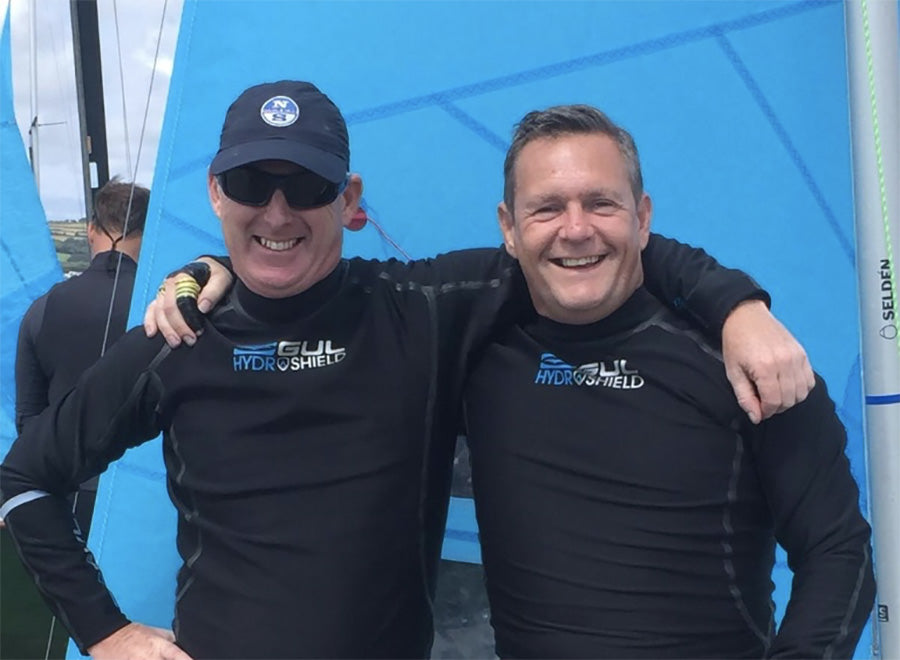
HOBSON & WHEATLEY WIN ENTERPRISE UK NATIONALS
HOBSON & WHEATLEY WIN ENTERPRISE UK NATIONALS
Close Scores Make Every Point Count
46 teams raced at the Allen, North Sails and Selden Enterprise UK Nationals held at Mounts Bay. After four days of heavy air racing the wind dropped on the last day giving the teams a complete new outlook for the last race. Defending champions Dave and Chris Jackman, and North Sails expert Paul Hobson and Craig Wheatly battled every inch of the race course. Heading to the final race both teams had four bullets with Paul and Craig having less points which guaranteed their win after a dramatic final race.
This is the first time Paul Hobson has won the Enterprise Championship on the helm making him the only sailor to win the event both as a crew and as a helmsman.
Class Expert Paul Hobson’s Key Points For Success:
Flat is fast. Always work on keeping the boat flat.
On gate starts, try to keep a nice space to leeward, making the mark rounding close and tight to the gate boat.
Don’t be greedy; minimise your risks and focus on the boats ahead.
Hobson/Wheatley used the North Sails SJ-4+ mainsail and the FG-3 jib.
Next for Paul and Craig are the October Looe SW Regatta followed by Winter Championships at Northampton in November.
READ MORE
READ MORE
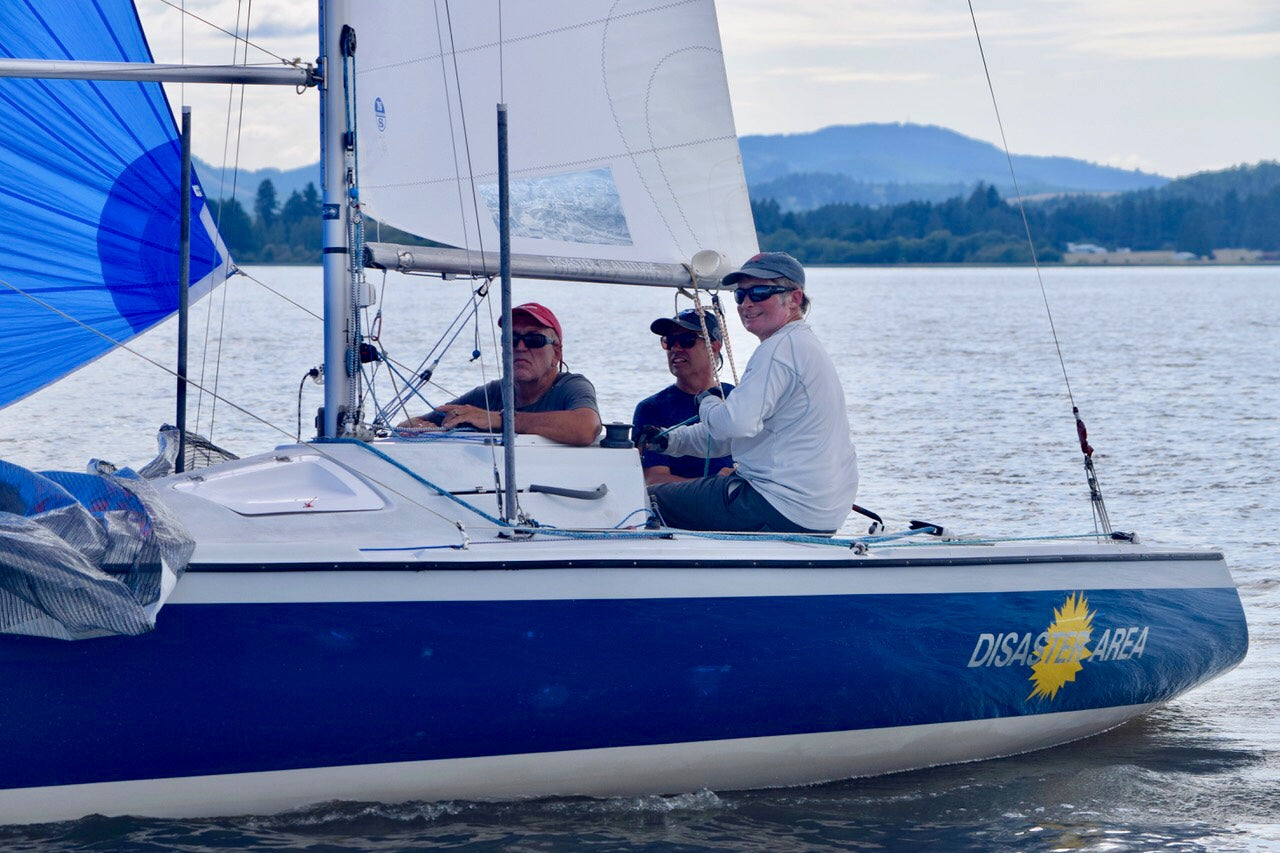
SANTANA 20 NATIONALS: KERR DID IT AGAIN
SANTANA 20 NATIONALS: KERR DID IT AGAIN
North Sails Helps Andrew Kerr Win His 13th National Title
📸 Richard Aaring
The 2019 Santana 20 National Championships were hosted by the Triton YC and Eugene YC’s on Fernridge reservoir in Eugene, Oregon 22 teams from Mexico, Colorado, Washington and Oregon were challenged with a seven race series over the course of three days with winds varying from 5 to 12 knots.
North Sails expert Andrew Kerr coordinated a practice day with on-the-water videos and a post-racing comprehensive debrief with all teams in attendance.
“The practice day with Andrew coaching the teams was very well received and helped them to get ready for the Nationals”, said Kerry Poe, North Sails Oregon
The racing featured a lot of gear shifting, particularly powering up in lulls and then responding to a quick build in the velocity. The goal was to be in phase at all times and connect the velocity upwind and downwind.
Starts were hotly contested. Team Disaster Area sailed with Kerry Poe on the helm, boat owner and tactician Andrew Kerr in the middle and former Class President, Phillip Infelise on the foredeck. “We focused on starting in the front row in the biggest space we could find, rarely did we start at the favored end. We would be toward it but in a lower density area so we could get off the line in phase and sail fast to the velocity and next shift”, said Andrew.
Patience paid as it generally always does on a lake. Very often a detrimental 30 degree shift would come in and the key was to wait it out until the wind came back to the median heading to then tack in the best gust of wind. Like many venues, it was critical to have your head outside the boat at all times to not miss big opportunities.
“The North designs gave us excellent speed in all conditions. The vision window in the genoa enabled our team to see starboard tack boats early and formulate a solid game plan for our boat to boat tactics.
The mainsail gave us all the flexibility of speed and shape that we needed with playing the backstay and the aft lowers. The spinnaker was stable and fast in all conditions. These designs have won the Nationals many times!,” said Andrew.
North Sails customer Evert Slijper and his team What about Bob? showed excellent speed and won race six. In fact, North-powered teams won four out of the total seven races. North Sails customers Jorge Murrietta’s Mexico and James Stinson’s Creamsicle also had excellent speed throughout the regatta. Congratulations to team Disaster Area for winning the Nationals with three bullets and consistent scores. This was Andrew Kerr’s 13th win at the Nationals. Very impressive!
Learn more about North Sails Santana 20 designs.
Team Disaster Area, winners. Kerry Poe (left), Phillip Infelise and Andrew Kerr (right). 📸 Richard Aaring
📸 Richard Aaring
READ MORE
READ MORE
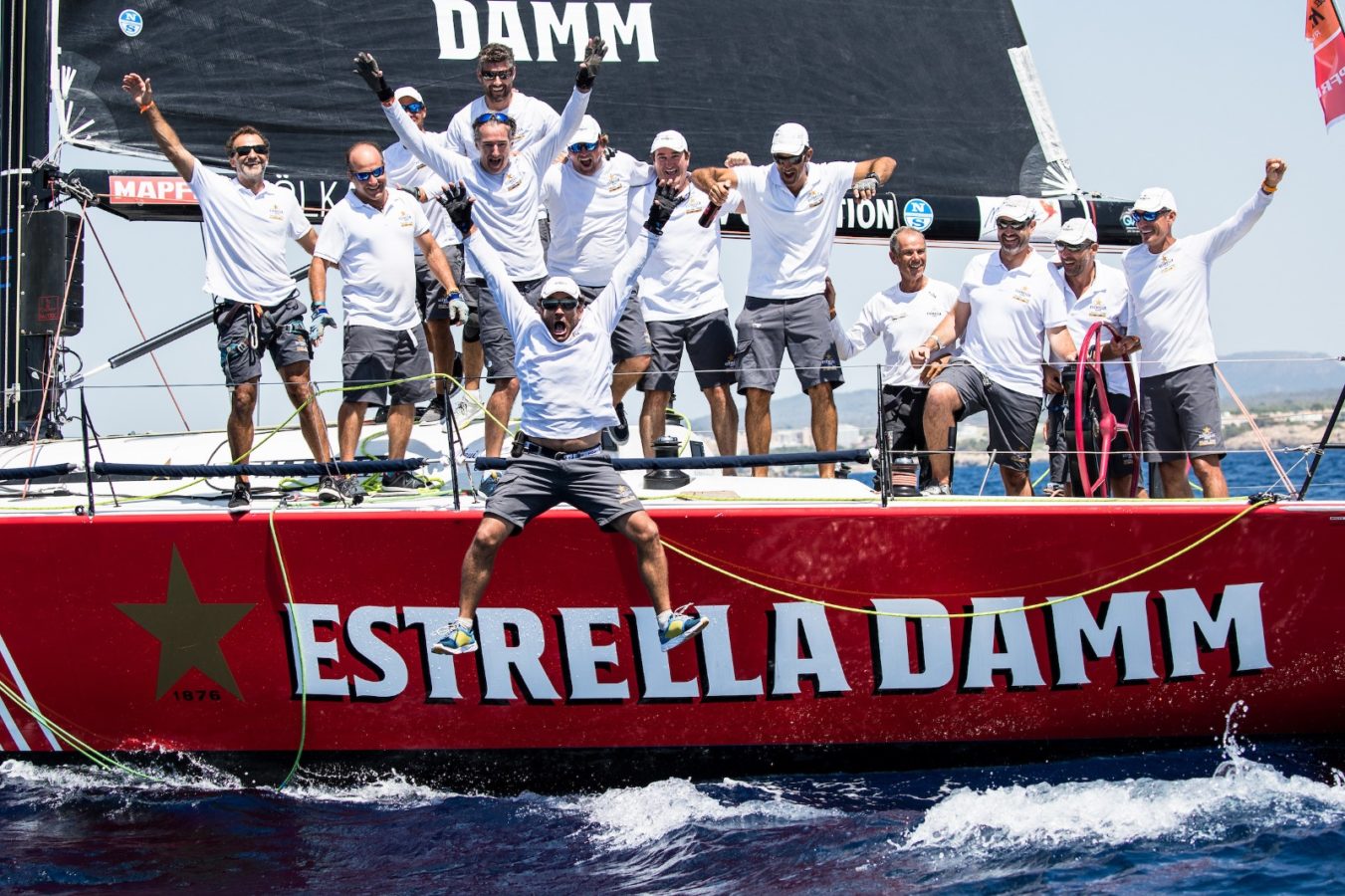
38TH COPA DEL REY
38th COPA DEL REY
North Clients Return To Defend The Title On The Bay Of Palma
© María Muiña / 38 Copa del Rey MAPFRE
The 38th annual Copa del Rey MAPFRE, organized by the Real Club Náutico de Palma and held on the Bay of Palma, once again boasted a record number of entries in the ORC fleet. North clients took home trophies in six divisions as well as both top performer awards (won by Leonardo Ferragamo’s ClubSwan 50 Cuordileone, and Nacho Montes and Oscar Chaves’ DK 46 Estrella Damm).
Copa del Rey is a big deal for North Sails each year, and there is plenty of onshore support required to keep our sailors on the water and up to speed. Our Palma loft provides overnight service most nights, working diligently on sails for yachts anywhere between 30-60 ft. The pre-regatta days are some of the busiest, with 20-30 new sails coming from all over Europe to be inspected before delivery. There are roughly seven sail and service experts working for seven straight days, with five on the evening shift which can sometimes turn into the morning shift. Over the course of the event, North Sails worked with 37 different team inventories, and over 90 sails passed through the hands of our loft. We are proud to not only show our numbers on the race course and on the scoreboard, but also on land to support all regatta participants.
Estrella Damm’s skipper, North Expert Luis Martinez Doreste, says the team came into the event ready to defend their title from last year. “We trust each other to accomplish our assigned jobs and do them well. Combining a talented crew and the right boat for ORC 1 were key factors. Not to mention having the right rig setup, and perfect sails; it is the best combination we could ever achieve.”
© María Muiña / 38 Copa del Rey MAPFRE
Before Copa del Rey, the team had multiple training weekends together. “That gave us the time to improve in so many ways,” explains Luis. “We focused mainly on our boat speed and maneuvers, and it paid off.” This year, there were changes to the ORC fleet, giving it a new distribution system to divide the fleet into four classes, depending on boat length and speed benchmark. If anything, this worked in favor of Estrella. They knew they would be matched well with their arch-nemesis, Rats on Fire, a Swan 45 owned by Rafael Carbonell Pujol.
© María Muiña / 38 Copa del Rey MAPFRE
The breeze was light to medium early on, but by mid-week a mistral provided sporty conditions. Estrella Damm’s new 3Di RAW 780 mainsail and S2 symmetrical kite helped improve their speed over the course of last year. They also used a one-year old A1.5 spinnaker for light air. “Our new sails lived up to their promise,” says Luis, adding, “they made a huge impact on our boat speed and performance. The new main has more twist and downwind speed, and the rig tune gave us a more bendy mast. Also, I highly recommend the A 1.5 for this type of boat, especially dead downwind with a spinnaker pole in under 10 knots TWS.”
This year was Luis’ 7th Copa del Rey. Defending Estrella Damm’s ORC title and taking the overall Copa del Rey Trophy, he says, was the result of combining preparation and a great crew with the right equipment: “For us, it was the perfect mix.”
https://www.northsails.com/sailing/wp-content/uploads/2019/08/copa-del-rey-winners-story.mp4
READ MORE
READ MORE
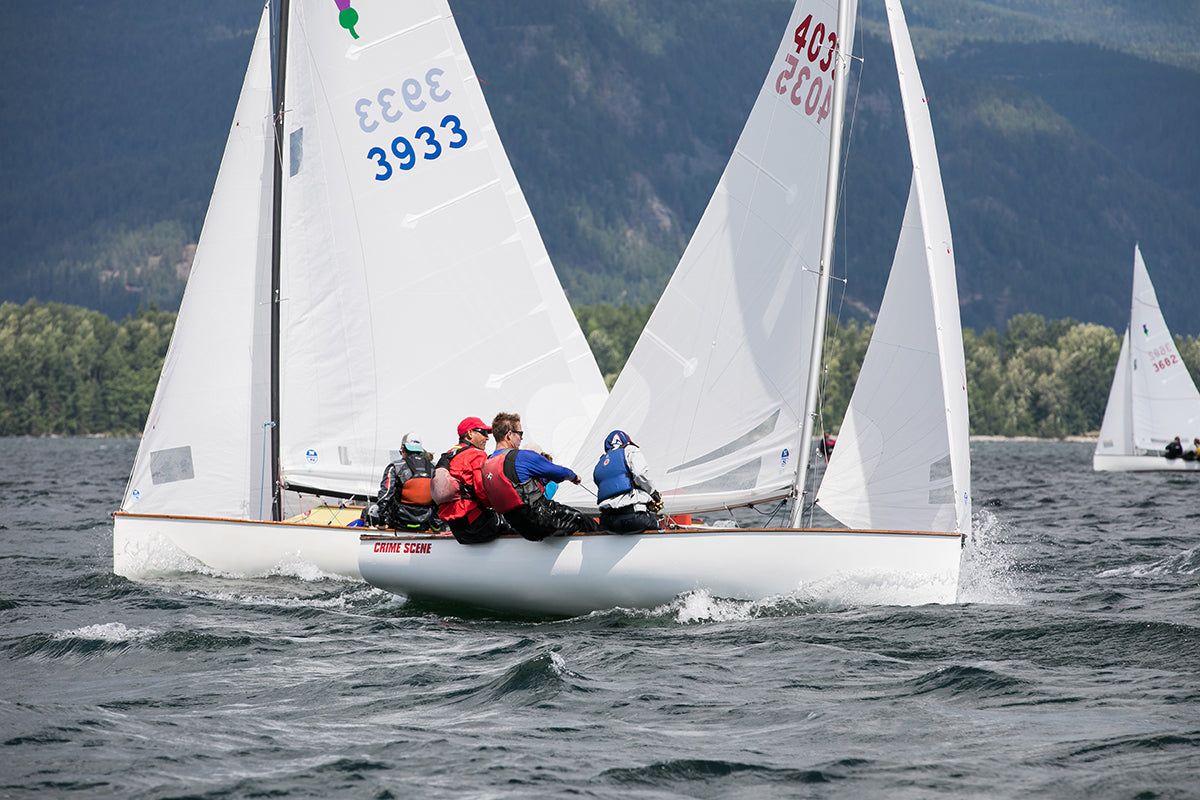
TAKEAWAYS FROM THE THISTLE NATIONALS
TAKEAWAYS FROM THE THISTLE NATIONALS
Breathtaking Venue Delivers Great Racing & Lots Of Fun
North Sails expert Paul Abdullah and team Crime Scene 📸 Paul Bickford
The 2019 Thistle Nationals were held in Sandpoint, Idaho July 20th-26th. Sandpoint is a beautiful resort town located in the Northwest part of Idaho. Wayne Pignolet and his team followed the script: “If you build it, they will come.” They did a fantastic job! The sixty-six teams that attended left with a smile on their face.The Thistle class loves a good destination, and everyone enjoyed the experience Sandpoint had to offer.
On Saturday morning the teams were finding their way through measurement and over to the beach where the boats would be kept for the week. A clinic was postponed until later in the day when the wind was going to be better. North Sails experts Mike Ingham and Paul Abdullah with Greg Griffin provided on the water coaching to the group. Greg and Paul had a little scare when their boat took on some water while trying to rescue a capsized Thistle. They successfully returned the boat to shore. It’s true… You can’t sink a Boston Whaler!
On Sunday the Women’s and Junior Nationals were held. There was a great breeze for four races. Nicole Shedden notched another win to her string of Woman’s Nationals, and Conrad Miller won the Juniors. Congratulations!
📸Mike Jewell | Sandpoint Sailing Association
The Thistle Nationals format is not about winning or leading on the first day, but more about not losing it. The first three qualifying races determine the Championship and Presidents divisions. The Championship fleet has to keep its scores, so points are very important. Doug Kaukeinen was the leader at the cut posting a 1-1-6. As tradition goes, Doug would be passing the Mint Juleps around the awards banquet later in the week.
The Thistle Nationals format is not about winning or leading on the first day, but more about not losing it.
Heading into the last four races, 5-6 teams had a shot of winning the Nationals. Paul Abdullah won race 4 and was leading on the water, but Tom Lawton had a great day and was the leader after race 5 was over. It was all going to come down to the last day, and the field had thinned itself. Tom was leading with Greg Griffin close behind, and then there was 12 and 13 points between 3rd and 4th placed boats. Tom had a bad 6th race and fell a bit, and that left Greg Griffin in a good position going into the last race. Scott Meyer continued to have a solid regatta and was able to fight off Paul Abdullah for 2nd beating him by a point, but it was Greg’s week capping off a lifelong journey to win the Thistle Nationals. Congrats to him and his team, Mark Reddaway and Amy Thompson for accomplishing a dream!
Paul Abdullah’s Takeaways For Success
First And Foremost Is Preparation! I am OCD when it comes to boat prep and making sure that everything works. The last thing I want is gear failure. Make sure the rig is tuned properly after a long cross country trip.
Be Sure The Team Knows Their Roles. In the heat of battle you need to have everyone focus on their job and not get caught up spectating. I know personally that driving fast takes a lot of concentration, and trusting your team allows me to be my best.
Sailing Flat And Fast Was The Key To Our Success. We had great breeze in Sandpoint. Steven (our middle crew) did a great job playing the vang and the jib sheet in the puffs and lulls, and Marie (forward crew) adjusted the jib halyard and main cunningham accordingly. As a team, we kept to boat balanced so we sailed fast instead of fighting it.
North Notes
Fifty-seven out of the sixty-six boats were powered by North fast Thistle sails.
Championship Division: 2,3,4,5,6,7,8 used North Sails
President’s Division: 1,3,4,5,6,7,8,9,10 used North Sails
We are looking forward to the 75th Thistle Nationals in Cleveland in 2020!
Learn more about our fast Thistle designs.
📸Mike Jewell | Sandpoint Sailing Association
📸Mike Jewell | Sandpoint Sailing Association
📸Mike Jewell | Sandpoint Sailing Association
📸Mike Jewell | Sandpoint Sailing Association
READ MORE
READ MORE





















